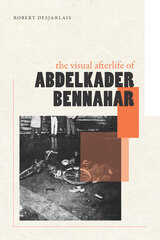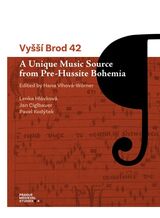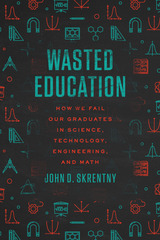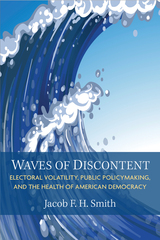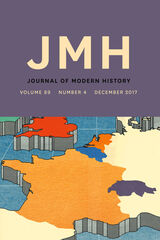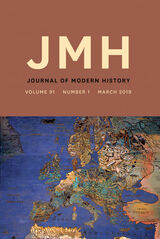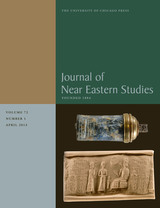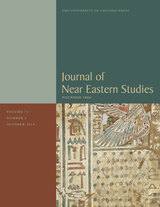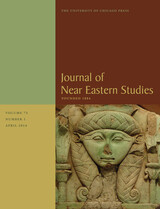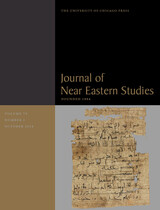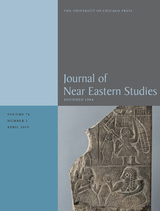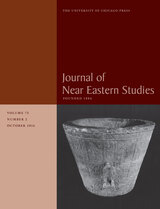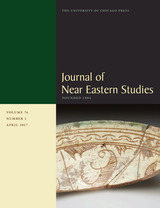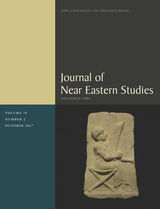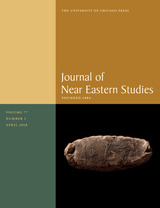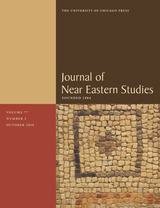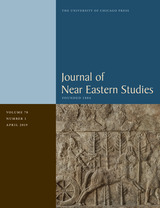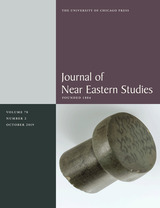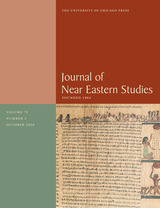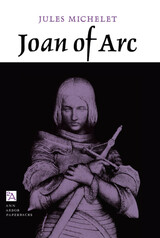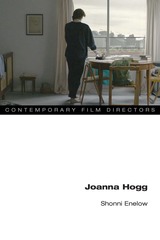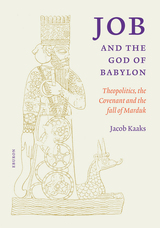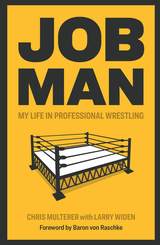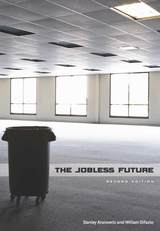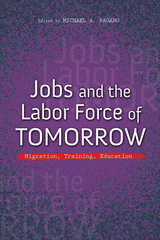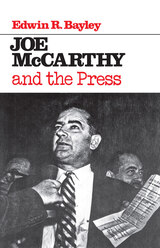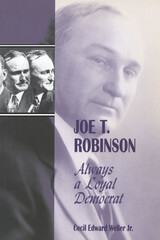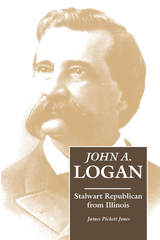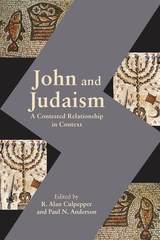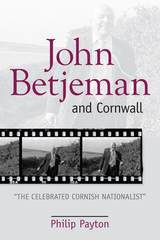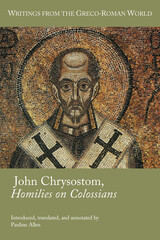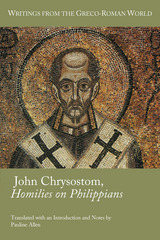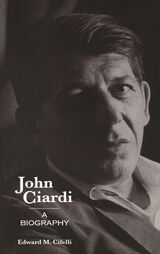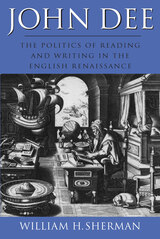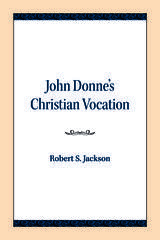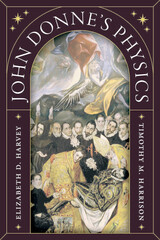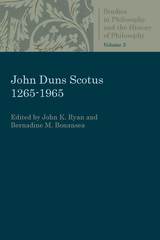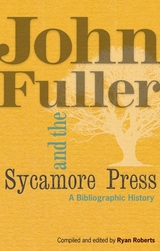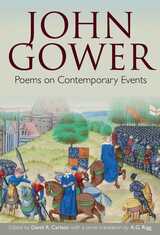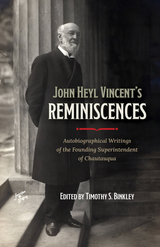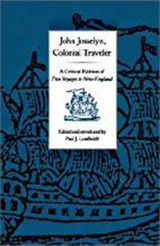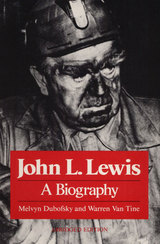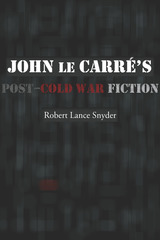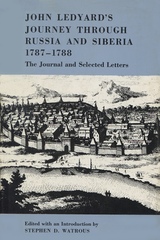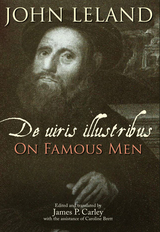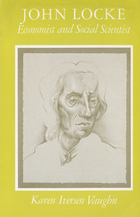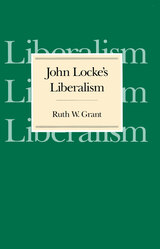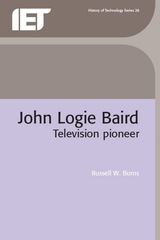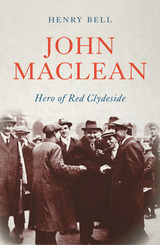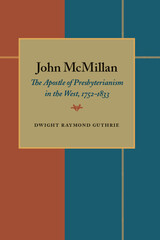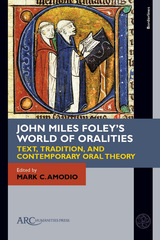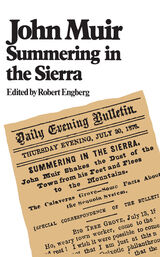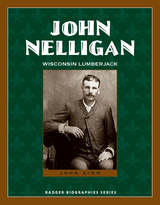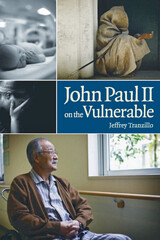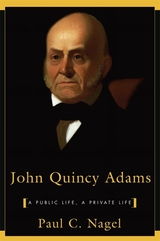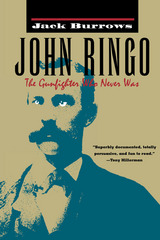JMH vol 89 num 4
The University of Chicago Press
University of Chicago Press Journals, 2017
JMH vol 90 num 1
The University of Chicago Press
University of Chicago Press Journals, 2018
JMH vol 90 num 2
The University of Chicago Press
University of Chicago Press Journals, 2018
JMH vol 90 num 3
The University of Chicago Press
University of Chicago Press Journals, 2018
JMH vol 90 num 4
The University of Chicago Press
University of Chicago Press Journals, 2018
JMH vol 91 num 1
The University of Chicago Press
University of Chicago Press Journals, 2019
JMH vol 91 num 2
The University of Chicago Press
University of Chicago Press Journals, 2019
JMH vol 91 num 3
The University of Chicago Press
University of Chicago Press Journals, 2019
JMH vol 91 num 4
The University of Chicago Press
University of Chicago Press Journals, 2019
JNES vol 72 num 1
The University of Chicago Press
University of Chicago Press Journals, 2013
JNES vol 72 num 2
The University of Chicago Press
University of Chicago Press Journals, 2013
JNES vol 73 num 1
The University of Chicago Press
University of Chicago Press Journals, 2014
JNES vol 73 num 2
The University of Chicago Press
University of Chicago Press Journals, 2014
JNES vol 74 num 1
The University of Chicago Press
University of Chicago Press Journals, 2015
JNES vol 74 num 2
The University of Chicago Press
University of Chicago Press Journals, 2015
JNES vol 75 num 1
The University of Chicago Press
University of Chicago Press Journals, 2016 This is volume 75 issue 1 of Journal of Near Eastern Studies. The Journal of Near Eastern Studies (JNES) is devoted to the study of the civilizations of the Near East from prehistory to the early modern period in 1922. JNES embraces a uniquely broad scope of time, place, and topic, including contributions from scholars of international reputation on topics in Assyriology, Egyptology, Hittitology, Hebrew Bible, and adjacent ancient studies, as well as a second area of emphasis in early, medieval, and early-modern Islamic studies. The disciplinary range of the journal runs from history and language to religion and literature to archaeology and art history. Every issue includes new scholarly work as well as a book review section, which provides a critical overview of new publications by emerging and established scholars.
JNES vol 75 num 2
The University of Chicago Press
University of Chicago Press Journals, 2016 This is volume 75 issue 2 of Journal of Near Eastern Studies. The Journal of Near Eastern Studies (JNES) is devoted to the study of the civilizations of the Near East from prehistory to the early modern period in 1922. JNES embraces a uniquely broad scope of time, place, and topic, including contributions from scholars of international reputation on topics in Assyriology, Egyptology, Hittitology, Hebrew Bible, and adjacent ancient studies, as well as a second area of emphasis in early, medieval, and early-modern Islamic studies. The disciplinary range of the journal runs from history and language to religion and literature to archaeology and art history. Every issue includes new scholarly work as well as a book review section, which provides a critical overview of new publications by emerging and established scholars.
JNES vol 76 num 1
The University of Chicago Press
University of Chicago Press Journals, 2017 This is volume 76 issue 1 of Journal of Near Eastern Studies. The Journal of Near Eastern Studies (JNES) is devoted to the study of the civilizations of the Near East from prehistory to the early modern period in 1922. JNES embraces a uniquely broad scope of time, place, and topic, including contributions from scholars of international reputation on topics in Assyriology, Egyptology, Hittitology, Hebrew Bible, and adjacent ancient studies, as well as a second area of emphasis in early, medieval, and early-modern Islamic studies. The disciplinary range of the journal runs from history and language to religion and literature to archaeology and art history. Every issue includes new scholarly work as well as a book review section, which provides a critical overview of new publications by emerging and established scholars.
JNES vol 76 num 2
The University of Chicago Press
University of Chicago Press Journals, 2017
JNES vol 77 num 1
The University of Chicago Press
University of Chicago Press Journals, 2018 This is volume 77 issue 1 of Journal of Near Eastern Studies. The Journal of Near Eastern Studies (JNES) is devoted to the study of the civilizations of the Near East from prehistory to the early modern period in 1922. JNES embraces a uniquely broad scope of time, place, and topic, including contributions from scholars of international reputation on topics in Assyriology, Egyptology, Hittitology, Hebrew Bible, and adjacent ancient studies, as well as a second area of emphasis in early, medieval, and early-modern Islamic studies. The disciplinary range of the journal runs from history and language to religion and literature to archaeology and art history. Every issue includes new scholarly work as well as a book review section, which provides a critical overview of new publications by emerging and established scholars.
JNES vol 77 num 2
The University of Chicago Press
University of Chicago Press Journals, 2018 This is volume 77 issue 2 of Journal of Near Eastern Studies. The Journal of Near Eastern Studies (JNES) is devoted to the study of the civilizations of the Near East from prehistory to the early modern period in 1922. JNES embraces a uniquely broad scope of time, place, and topic, including contributions from scholars of international reputation on topics in Assyriology, Egyptology, Hittitology, Hebrew Bible, and adjacent ancient studies, as well as a second area of emphasis in early, medieval, and early-modern Islamic studies. The disciplinary range of the journal runs from history and language to religion and literature to archaeology and art history. Every issue includes new scholarly work as well as a book review section, which provides a critical overview of new publications by emerging and established scholars.
JNES vol 78 num 1
The University of Chicago Press
University of Chicago Press Journals, 2019 This is volume 78 issue 1 of Journal of Near Eastern Studies. The Journal of Near Eastern Studies (JNES) is devoted to the study of the civilizations of the Near East from prehistory to the early modern period in 1922. JNES embraces a uniquely broad scope of time, place, and topic, including contributions from scholars of international reputation on topics in Assyriology, Egyptology, Hittitology, Hebrew Bible, and adjacent ancient studies, as well as a second area of emphasis in early, medieval, and early-modern Islamic studies. The disciplinary range of the journal runs from history and language to religion and literature to archaeology and art history. Every issue includes new scholarly work as well as a book review section, which provides a critical overview of new publications by emerging and established scholars.
JNES vol 78 num 2
The University of Chicago Press
University of Chicago Press Journals, 2019 This is volume 78 issue 2 of Journal of Near Eastern Studies. The Journal of Near Eastern Studies (JNES) is devoted to the study of the civilizations of the Near East from prehistory to the early modern period in 1922. JNES embraces a uniquely broad scope of time, place, and topic, including contributions from scholars of international reputation on topics in Assyriology, Egyptology, Hittitology, Hebrew Bible, and adjacent ancient studies, as well as a second area of emphasis in early, medieval, and early-modern Islamic studies. The disciplinary range of the journal runs from history and language to religion and literature to archaeology and art history. Every issue includes new scholarly work as well as a book review section, which provides a critical overview of new publications by emerging and established scholars.
JNES vol 79 num 1
The University of Chicago Press
University of Chicago Press Journals, 2020
JNES vol 79 num 2
The University of Chicago Press
University of Chicago Press Journals, 2020 This is volume 79 issue 2 of Journal of Near Eastern Studies. The Journal of Near Eastern Studies (JNES) is devoted to the study of the civilizations of the Near East from prehistory to the early modern period in 1922. JNES embraces a uniquely broad scope of time, place, and topic, including contributions from scholars of international reputation on topics in Assyriology, Egyptology, Hittitology, Hebrew Bible, and adjacent ancient studies, as well as a second area of emphasis in early, medieval, and early-modern Islamic studies. The disciplinary range of the journal runs from history and language to religion and literature to archaeology and art history. Every issue includes new scholarly work as well as a book review section, which provides a critical overview of new publications by emerging and established scholars.
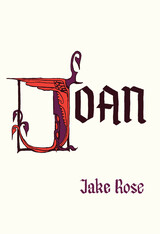 JOAN
Jake Rose
University of Chicago Press A narrative sequence of lyric poems reimagining Joan of Arc as a framework for queer identity, transformation, and poetic voice.
Collapsing biography and autobiography, the poetry of Jake Rose’s debut explores queer identity, grief, and desire through the historical framework of Joan of Arc’s life. Moving through rural landscapes of the speaker’s youth, contradictions of faith, consequences of desire, and fragmentations of trauma, JOAN is structured as an excavation of the speaker’s most intimate moments, combining poetry with historical quotations, visual collage, and a sequence of film stills. Through vivid lyric moments, the poems construct a speaker and world both intimate and charged—“I have to touch my farthest feeling,” “the sapphire dusk draping its lace arias”—with clarity and vibrant intensity. Refusing resolution, these poems dwell in rupture, reinvention, and fluid forms of gender that come to life outside of inherited boundaries. This collection speaks from the margins, searching for a body the self might inhabit and asking what it means to transform through language, gender, and desire.
JOAN is the winner of the Phoenix Emerging Poet Book Prize.
Joan of Arc
Jules Michelet
University of Michigan Press, 1967 The holy mission of the Maid of Orleans is recreated in this, one of the greatest of the books on Joan. Jules Michelet captures the hardships of battle, the glory of victory, the disillusion of imprisonment. Her betrayal and martyrdom at the stake have an enduring mood of beauty and brutality. Albert Guérard's sensitive translation offers the first complete English rendition of this classic nineteenth-century work. Jules Michelet, 1798-1874, noted French historian, is perhaps best known for his Histoire de la révolution française (1847-53) and his Histoire de France (1833-67). The late Albert Guérard was professor of comparative literature and lecturer in French civilization at Stanford University. His many books include Europe Free and United, Napoleon III, Education of a Humanist, and France: A Modern History.
 Joan Of Arc Sacrificial Authorship
Ann W. Astell
University of Notre Dame Press, 2003 A host of modern authors have portrayed Joan of Arc as a heroine. Identifying with the medieval saint and martyr as a figure of the artist, they tell her story as a way of commenting on their own situation in a world where the aura of art has decayed. Blending the theoretical insights of Walter Benjamin, Roland Barthes, and René Girard, Ann W. Astell persuasively argues that many modern authors have seen their own artistic vocation in the visions and voices that inspired Joan.
Astell's pathbreaking study explores the treatment of Joan of Arc in the works of such renowned and diverse authors as Mark Twain, Samuel Coleridge, Virignia Woolf, Friedrich Schiller, George Bernard Shaw, Bertolt Brecht, and Lillian Helman. Astell contends that in Joan's problematic identity as a peasant woman, these writers find an image for their own status as outsiders and potential scapegoats. Joan's condemnation and cruel death by fire mirror the anxious fears of artists who find themselves in a philistine marketplace. By depicting Joan's miraculous victories and ultimate canonization as a saint, these writers seek to imbue their own work with a quasi-religious aura and to secure for themselves a lasting place in the literary canon.
Joan of Arc and Sacrificial Authorship offers the most comprehensive, comparative treatment to date of modern renditions of the medieval story of Joan of Arc. By connecting the societal roles of nineteenth- and twentieth-century authors and Saint Joan, Astell explains the continuing importance of the Middle Ages in the quest for a modern self-understanding.
ANN W. ASTELL is professor of English at Purdue University. She is the author of several books and editor of Lay Sanctity, Medieval and Modern, published by the University of Notre Dame Press.
----------
"Joan of Arc and Sacrificial Authorship is, quite simply, astonishing in its range and depth of learning. Drawing on René Girard's model of mimetic rivalry, which she merges with Harold Bloom's concept of the anxieties of influence at work in literary revisionism, Astell explores how various post-Enlightenment artists have been magnetized by the mystique and myth of the ‘Maid of Orléans.' This is truly comparative analysis of the highest order." -Robert Snyder, State University of West Georgia
Joanna Hogg
Shonni Enelow
University of Illinois Press, 2024 Films like The Eternal Daughter and the diptych The Souvenir and The Souvenir Part II have cemented Joanna Hogg’s reputation as an original voice in contemporary cinema. Her rigorous and quiet style draws on the histories of film and art to tell stories that weave autobiography with studies in human opacity. Shonni Enelow analyzes Hogg’s six feature films around the concepts of turning away, the reality effect, and the impossible encounter. Throughout, Enelow explores the tension between absorption, in which characters are immersed in a diegetic fiction, and self-reflexivity, as the filmmaker comments on her techniques of representation. An in-depth interview with Hogg delves into the director’s process, approach to creating character, and use of artistic and literary references. Sophisticated and innovative, Joanna Hogg illuminates the work of one of today’s most original filmmakers.
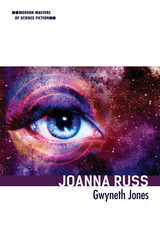 Joanna Russ
Gwyneth Jones
University of Illinois Press, 2019 Experimental, strange, and unabashedly feminist, Joanna Russ's groundbreaking science fiction grew out of a belief that the genre was ideal for expressing radical thought. Her essays and criticism, meanwhile, helped shape the field and still exercise a powerful influence in both SF and feminist literary studies.Award-winning author and critic Gwyneth Jones offers a new appraisal of Russ's work and ideas. After years working in male-dominated SF, Russ emerged in the late 1960s with Alyx, the uber-capable can-do heroine at the heart of Picnic on Paradise and other popular stories and books. Soon, Russ's fearless embrace of gender politics and life as an out lesbian made her a target for male outrage while feminist classics like The Female Man and The Two of Them took SF in innovative new directions. Jones also delves into Russ's longtime work as a critic of figures as diverse as Lovecraft and Cather, her foundational place in feminist fandom, important essays like "Amor Vincit Foeminam," and her career in academia.
Joaquim Nabuco, British Abolitionists, and the End of Slavery in Brazil: Correspondence 1880-1905
Edited by Leslie Bethell and Murilo De Carvalho
University of London Press, 2009 A little-studied aspect of the struggle to abolish slavery in Brazil in the 1880s is the relationship between Joaquim Nabuco, the leading Brazilian abolitionist, and the British and Foreign Anti-Slavery Society in London. The correspondence between Nabuco and Charles Harris Allen, secretary of the Anti-Slavery Society, and other British abolitionists throughout the decade and beyond reveals a partnership consciously sought by Nabuco in order to internationalize the struggle. These letters provide a unique insight into the evolution of Nabuco's thinking on both slavery and abolition. At the same time, they offer a running commentary on the slow and (at least until 1887-88) uncertain progress of the abolitionist cause in Brazil.
Job and the god of Babylon: Theo-politics, the Covenant and the Fall of Marduk
Jacob Kaaks
Eburon Academic Publishers, 2011
In this new analysis of the Book of Job, Jacob Kaaks looks at the theopolitical motives of the priests who assembled the Old Testament and puts one of the most puzzling books of the bible into the context of Akkadian literature. In this reading, Job is not the long-suffering embodiment of piety, but a figure with the ability to guide an evolving concept of God. Complete with a new translation of the Book of Job that takes into account Kaaks’s scholarship, Job and the god of Babylon is an impressive study that recasts the Old Testament not as a religious text existing in a vacuum, but as a product of its historical era.
 Job Loss, Identity, and Mental Health
Norris, Dawn R
Rutgers University Press, 2016 Our jobs are often a big part of our identities, and when we are fired, we can feel confused, hurt, and powerless—at sea in terms of who we are. Drawing on extensive, real-life interviews, Job Loss, Identity, and Mental Health shines a light on the experiences of unemployed, middle-class professional men and women, showing how job loss can affect both identity and mental health. Sociologist Dawn R. Norris uses in-depth interviews to offer insight into the experience of losing a job—what it means for daily life, how the unemployed feel about it, and the process they go through as they try to deal with job loss and their new identities as unemployed people. Norris highlights several specific challenges to identity that can occur. For instance, the way other people interact with the unemployed either helps them feel sure about who they are, or leads them to question their identities. Another identity threat happens when the unemployed no longer feel they are the same person they used to be. Norris also examines the importance of the subjective meaning people give to statuses, along with the strong influence of society’s expectations. For example, men in Norris’s study often used the stereotype of the “male breadwinner” to define who they were. Job Loss, Identity, and Mental Health describes various strategies to cope with identity loss, including “shifting” away from a work-related identity and instead emphasizing a nonwork identity (such as “a parent”), or conversely “sustaining” a work-related identity even though he or she is actually unemployed. Finally, Norris explores the social factors—often out of the control of unemployed people—that make these strategies possible or impossible. A compelling portrait of a little-studied aspect of the Great Recession, Job Loss, Identity, and Mental Health is filled with insight into the identity crises that unemployment can trigger, as well as strategies to help the unemployed maintain their mental strength.
Job Man: My Life in Professional Wrestling
Chris Multerer
Wisconsin Historical Society Press, 2019 Milwaukee-native Chris Multerer wrestled for more than a decade, starting in 1978, on professional circuits around the United States. As a “job man,” Multerer made the superstars of wrestling, such as Mad Dog Vachon and Hulk Hogan, shine. In cities around the country, thousands of screaming fans cheered when their favorite wrestlers pinned and punished Multerer in a variety of painful ways.
In Job Man, Multerer, along with his friend Larry Widen, shows what life was like for wrestlers outside the spotlight. Long nights on the road, thoughtful takes on some the biggest personalities in the business, and, perhaps most of all, a love for the sport, are as much a part of Multerer’s revealing and remarkable story as his time in the ring.
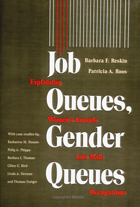 Job Queues, Gender Queues: Explaining Women's Inroads into Male Occupations
Barbara F. Reskin and Patricia A. Roos
Temple University Press, 1990 Since 1970, women have made widely publicized gains in several customarily male occupations. Many commentators have understood this apparent integration as an important step to sexual equality in the workplace. Barbara F. Reskin and Patricia A. Roos read a different lesson in the changing gender composition of occupations that were traditionally reserved for men. With persuasive evidence, Job Queues, Gender Queues offers a controversial interpretation of women's dramatic inroads into several male occupations based on case studies of "feminizing" male occupation. The authors propose and develop a queuing theory of occupations' sex composition. This theory contends that the labor market comprises a "gender queue" with employers preferring male to female workers for most jobs. Workers also rank jobs into a "job queue." As a result, the highest-ranked workers monopolize the most desirable jobs. Reskin and Roos use this queuing perspective to explain why several male occupations opened their doors to women after 1970. The second part of the book provides evidence for this queuing analysis by presenting case studies of the feminization of specific occupations. These include book editor, pharmacist, public relations specialist, bank manager, systems analyst, insurance adjuster, insurance salesperson, real estate salesperson, bartender, baker, and typesetter/compositor.
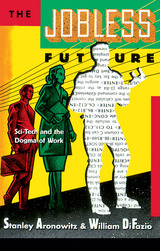 Jobless Future: Sci-Tech and the Dogma of Work
Stanley Aronowitz
University of Minnesota Press, 1995 Essential reading for those seeking solutions to the new jobless economy.
This widely reviewed and highly successful book examines the job market of tomorrow. Aronowitz and DiFazio take you behind the headlines to challenge the idea that a high-tech economy will provide high-paying jobs for all who want them. Instead, they demonstrate that we're more likely to see continued layoffs and job displacement.
"Imagine a Brave New Work World in which unemployment is so rampant that more than a third of the adult population can't find a job and millions of others have stopped looking. Another third works only part-time, or at temporary or dead-end jobs. Meanwhile, the number of those still holding full-time positions steadily diminishes, their wages depressed because of the premium placed simply on having a job. . . . 'People need to start thinking about a jobless future,' insist [Aronowitz and DeFazio] . . . . Tha authors attribute rising unemployment to economic stagnation coupled with revolutionary technological change that has fostered workplace trends such as downsizing, re-engineering, with part-time jobs, temporary jobs and job-sharing replacing full-time work." --Washington Post
"Looks beyond the shadow play of welfare politics to the real source of that anxiety-the modern workplace. . . . Aronowitz and DiFazio are quite right to look beyond the dismal realities of today's workplace and envision a society that uses the fruits of technology to abolish-or at least diminish-what the left used to call wage slavery." --The Nation
"Replete with such futuristic concepts as cybernetics, technoculture, de-skilling, and informatics, this book is as timely as today's headlines announcing the latest round of layoffs and down-sizing. . . an important and thought-provoking work." --Library Journal
Stanley Aronowitz is professor of sociology at the Graduate Center of the City University of New York. William DiFazio is professor of sociology at St. John's University
The Jobless Future: Second Edition
Stanley Aronowitz
University of Minnesota Press, 2010 High technology will destroy more jobs than it creates. This grim prediction was first published in the 1994 edition of The Jobless Future, an eerily accurate title that could have been written for today's dismal economic climate. Fully updated and with a new introduction by Stanley Aronowitz and William DiFazio, The Jobless Future warns that jobs as we know them-long-term, with benefits-are an endangered species.
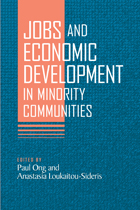 Jobs and Economic Development in Minority Communities
edited by Paul Ong and Anastasia Loukaitou-Sideris
Temple University Press, 2006 Over the past four decades, the forces of economic restructuring, globalization, and suburbanization, coupled with changes in social policies have dimmed hopes for revitalizing minority neighborhoods in the U.S. Community economic development offers a possible way to improve economic and employment opportunities in minority communities. In this authoritative collection of original essays, contributors evaluate current programs and their prospects for future success.Using case studies that consider communities of African-Americans, Latinos, Asian immigrants, and Native Americans, the book is organized around four broad topics. "The Context" explores the larger demographic, economic, social, and physical forces at work in the marginalization of minority communities. "Labor Market Development" discusses the factors that shape supply and demand and examines policies and strategies for workforce development. "Business Development" focuses on opportunities and obstacles for minority-owned businesses. "Complementary Strategies" probes the connections between varied economic development strategies, including the necessity of affordable housing and social services.Taken together, these essays offer a comprehensive primer for students as well as an informative overview for professionals.
Jobs and the Labor Force of Tomorrow: Migration, Training, Education
Michael Pagano
University of Illinois Press, 2017 The new volume in the Urban Agenda series addresses the challenges shaping the development of human capital in metropolitan regions. The articles, products of the 2016 Urban Forum at the University of Illinois at Chicago, engage with the overarching idea that a dynamic metropolitan economy needs a diverse, trained, and available workforce that can adapt to the needs of commerce, industry, government, and the service sector. Authors explore provocative issues like the jobless recovery, migration and immigration, K-12 education preparedness, the urban-oriented gig economy, postsecondary workforce training, and the recruitment and professional development of millennials.
Contributors: Xochitl Bada, John Bragelman, Laura Dresser, Rudy Faust, Beth Gutelius, Brad Harrington, Gregory V. Larnell, Twyla T. Blackmond Larnell, and Nik Theodore.
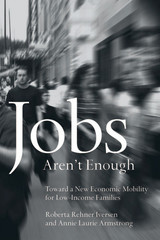 Jobs Aren't Enough: Toward a New Economic Mobility for Low-Income Families
Roberta Rehner Iversen and Annie Laurie Armstrong
Temple University Press, 2006 This unflinching examination of the obstacles to economic mobility for low-income families exposes the ugly reality that lies beneath the shining surface of the American Dream. The fact is that nearly 25% of employed adults have difficulty supporting their families today. In eye-opening interviews, twenty-five workers and nearly a thousand people who are linked to them—children, teachers, job trainers, and employers—tell wrenching stories about "trying to get ahead." Spanning five cities over five years, this study convincingly demonstrates that prevailing ideas about opportunity, merit, and "bootstraps" are outdated. As the authors show, some workers who believe the myths end up destroying their health and families in the process of trying to "move up." Jobs Aren't Enough demonstrates that the social institutions of family, education, labor market, and policy all intersect to influence—and inhibit—employment mobility. It proposes a new mobility paradigm grounded in cooperation and collaboration across social institutions, along with revitalization of the "public will."
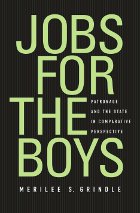 Jobs for the Boys: Patronage and the State in Comparative Perspective
Merilee S. Grindle
Harvard University Press, 2012 Patronage systems in the public service are universally reviled as undemocratic and corrupt. Yet patronage was the prevailing method of staffing government for centuries, and in some countries it still is. In Jobs for the Boys, Merilee Grindle considers why patronage has been so ubiquitous in history and explores the political processes through which it is replaced by merit-based civil service systems. Such reforms are consistently resisted, she finds, because patronage systems, though capricious, offer political executives flexibility to achieve a wide variety of objectives.
Grindle looks at the histories of public sector reform in six developed countries and compares them with contemporary struggles for reform in four Latin American countries. A historical, case-based approach allows her to take into account contextual differences between countries as well as to identify cycles that govern reform across the board. As a rule, she finds, transition to merit-based systems involves years and sometimes decades of conflict and compromise with supporters of patronage, as new systems of public service are politically constructed. Becoming aware of the limitations of public sector reform, Grindle hopes, will temper expectations for institutional change now being undertaken.
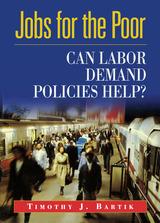 Jobs for the Poor: Can Labor Demand Policies Help?
Timothy J. Bartik
Russell Sage Foundation, 2001 Even as the United States enjoys a booming economy and historically low levels of unemployment, millions of Americans remain out of work or underemployed, and joblessness continues to plague many urban communities, racial minorities, and people with little education. In Jobs for the Poor, Timothy Bartik calls for a dramatic shift in the way the United States confronts this problem. Today, most efforts to address this problem focus on ways to make workers more employable, such as job training and welfare reform. But Bartik argues that the United States should put more emphasis on ways to increase the interest of employers in creating jobs for the poor—or the labor demand side of the labor market. Bartik's bases his case for labor demand policies on a comprehensive review of the low-wage labor market. He examines the effectiveness of government interventions in the labor market, such as Welfare Reform, the Earned Income Tax Credit, and Welfare-to-Work programs, and asks if having a job makes a person more employable. Bartik finds that public service employment and targeted employer wage subsidies can increase employment among the poor. In turn, job experience significantly increases the poor's long-run earnings by enhancing their skills and reputation with employers. And labor demand policies can avoid causing inflation or displacing other workers by targeting high-unemployment labor markets and persons who would otherwise be unemployed. Bartik concludes by proposing a large-scale labor demand program. One component of the program would give a tax credit to employers in areas of high unemployment. To provide disadvantaged workers with more targeted help, Bartik also recommends offering short-term subsidies to employers—particularly small businesses and nonprofit organizations—that hire people who otherwise would be unlikely to find jobs. With experience from subsidized jobs, the new workers should find it easier to obtain future year-round employment. Although these efforts would not catapult poor families into the middle class overnight, Bartik offers a powerful argument that having a full-time worker in every household would help improve the lives of millions. Jobs for the Poor makes a compelling case that full employment can be achieved if the country has the political will and adopts policies that address both sides of the labor market. Copublished with the W. E. Upjohn Institute for Economic Research
Joe McCarthy and the Press
Edwin R. Bayley
University of Wisconsin Press, 2003 This is a book for historians, journalists—and for all of us who need to remember this turbulent time on our nation's past, and its lessons for today.
Joe T. Robinson: Always a Loyal Democrat
Cecil Weller
University of Arkansas Press, 1998 Senate majority leader Joseph Taylor Robinson was undoubtedly one of the most powerful U.S. senators of the early twentieth century. An important political figure in Arkansas from the time he was elected to the state legislature in 1895, Joe T., as he was popularly called became nationally prominent when he ascended to the Democratic leadership of the U.S. Senate in 1923. Robinson’s career spanned momentous legislative debates in the chambers of the Senate, such as the League of Nations charter, the Teapot Dome Scandal, and FDR’s plan to “pack” the Supreme Court. His run for the vice-presidency in 1928, the first Southerner on a major ticket after the Civil War, and his three terms as chairman of the Democratic National Convention, in 1920, 1928, and 1936, are all covered in this perceptive study.
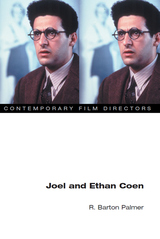 Joel and Ethan Coen
R. Barton Palmer
University of Illinois Press, 2004 With landmark films such as Fargo, O Brother Where art Thou?, Blood Simple, and Raising Arizona, the Coen brothers have achieved both critical and commercial success. Proving the existence of a viable market for "small" films that are also intellectually rewarding, their work has exploded generic conventions amid rich webs of transtextual references. R. Barton Palmer argues that the Coen oeuvre forms a central element in what might be called postmodernist filmmaking. Mixing high and low cultural sources and blurring genres like noir and comedy, the use of pastiche and anti-realist elements in films such as The Hudsucker Proxy and Barton Fink clearly fit the postmodernist paradigm. Palmer argues that for a full understanding of the Coen brothers' unique position within film culture, it is important to see how they have developed a new type of text within general postmodernist practice that Palmer terms commercial/independent. Analyzing their substantial body of work from this "generic" framework is the central focus of this book.
 The Joffrey Ballet: Robert Joffrey and the Making of an American Dance Company
Sasha Anawalt
University of Chicago Press, 1997 The Joffrey Ballet is a comprehensive history of the quintessential American dance troupe and a textured portrait of Robert Joffrey, the creative maverick who led and inspired it. Broadly researched, richly anecdotal, and elegantly written, The Joffrey Ballet probes the complex relationship that exists between a culture and its artists through the prism of this company's story.
"[The Joffrey Ballet is] remarkable for its warmth and vigor, and for its blending of candor and judiciousness."—Jack Anderson, New York Times Book Review
"A milestone in dance writing. Few studies in the field will be able to match Sasha Anawalt's elegant style."—Anna Kisselgoff, New York Times
"Anawalt transforms years of meticulous research into a cliffhanger of a history."—Elizabeth Zimmer, dance editor, Village Voice
"[The Joffrey Ballet] is a meticulously detailed, well-documented history, juiced with a little gossip here and there . . . [and] a valuable sweeping look at this all-important troupe."—Sid Smith, Chicago Tribune Book Review
"[Anawalt's] approach is deeper and more satisfying than straightforward biography."—Marcia B. Siegel, Village Voice
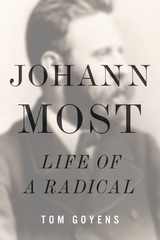 Johann Most: Life of a Radical
Tom Goyens
University of Illinois Press, 2025 Known best for articulating the propaganda of the deed, Johann Most was and still is caricatured as a radical fanatic. Tom Goyens’ in-depth biography rediscovers the complexities that animated the German American agitator and made him a pivotal figure in the development of anarchism in the US and socialism in Germany. Most galvanized workers through passionate speeches and writings that showcased his gifts as a performer, satirist, and rhetorician. Numerous challenges, including repeated convictions for his incendiary rhetoric, failed to curb his organizing or his efforts to foster a dedicated network of comrades that included Emma Goldman, Alexander Berkman, and his common-law wife, Helene Minkin. Goyens details Most’s essential contributions to the anarchist movement while also highlighting his critique of religion and defense of science within emancipatory movements. As Goyens follows Most’s ideological journey, he illuminates the political contexts that shaped the anarchist’s evolving views on revolutionary action and social change. Comprehensive and long overdue, Johann Most traces the intellectual life and enduring relevance of a misunderstood radical figure.
 Johann Scheibe: Organ Builder in Leipzig at the Time of Bach
Lynn Edwards Butler
University of Illinois Press, 2022 In his nearly forty-year career, Johann Scheibe became Leipzig's most renowned organ builder and one of the late Baroque's masters of the craft. Johann Sebastian Bach and Johann Kuhnau considered Scheibe a valued colleague. Organists and civic leaders shared their high opinion, for Scheibe built or rebuilt every one of the city's organs. Drawing on extensive research and previously untapped archival materials, Lynn Edwards Butler explores Scheibe's professional relationships and the full range of his projects. These assignments included the three-manual organ for St. Paul’s Church, renovations of the organs in the important churches of St. Thomas and St. Nicholas, and the lone surviving example of Scheibe's craft, a small organ in the nearby village of Zschortau. Viewing Scheibe within the context of the era, Butler illuminates the music scene of Bach's time as she follows the life of a gifted craftsman and his essential work on an instrument that anchored religious musical practice and community.
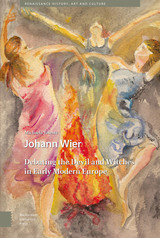 Johann Wier: Debating the Devil and Witches in Early Modern Europe
Michaela Valente
Amsterdam University Press, 2022 This book deals with a fascinating and original claim in 16th-century Europe. Witches should be cured, not executed. It was the physician and scholar Johann Wier (1515-1588) who challenged the dominant idea. For his defense of witches, more than three centuries later, Sigmund Freud chose to put Wier’s work among the ten books to be read. According to Wier, Satan seduced witches, thus they did not deserve to be executed, but they must be cured for their melancholy. When the witch hunt was rising, Wier was the first to use some of the arguments adopted in the emerging debate on religious tolerance in defence of witches.
This is the first overall study of Wier which offers an innovative view of his thought, by highlighting Wier’s sources and his attempts to involve theologians, physicians, and philosophers in his fight against cruel witch hunts. Johann Wier: Debating the Devil and Witches situates and explains his claim as a result of a moral and religious path as well as the outcome of his medical experience. The book aims to provide an insightful examination of Wier’s works to read his pleas emphasizing the duty of every good Christian to not abandon anyone who strays from the flock of Christ. For these reasons, Wier was overwhelmed by bitter confutations, such as those of Jean Bodin, but he was also celebrated for his outstanding and prolific heritage for debating religious tolerance.
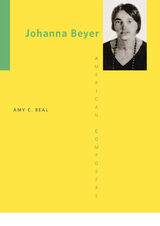 Johanna Beyer
Amy C. Beal
University of Illinois Press, 2015 Composer Johanna Beyer's fascinating body of music and enigmatic life story constitute an important chapter in American music history. As a hard-working German émigré piano teacher and accompanist living in and around New York City during the New Deal era, she composed plentiful music for piano, percussion ensemble, chamber groups, choir, band, and orchestra. A one-time student of Ruth Crawford, Charles Seeger, and Henry Cowell, Beyer was an ultramodernist, and an active member of a community that included now-better-known composers and musicians. Only one of her works was published and only one recorded during her lifetime. But contemporary musicians who play Beyer's compositions are intrigued by her originality.
Amy C. Beal chronicles Beyer's life from her early participation in New York's contemporary music scene through her performances at the Federal Music Project's Composers' Forum-Laboratory concerts to her unfortunate early death in 1944. This book is a portrait of a passionate and creative woman underestimated by her music community even as she tirelessly applied her gifts with compositional rigor.
The first book-length study of the composer's life and music, Johanna Beyer reclaims a uniquely innovative artist and body of work for a new generation.
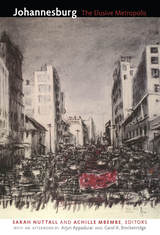 Johannesburg: The Elusive Metropolis
Sarah Nuttall and Achille Mbembe, eds.
Duke University Press, 2008 Johannesburg: The Elusive Metropolis is a pioneering effort to insert South Africa’s largest city into urban theory, on its own terms. Johannesburg is Africa’s premier metropolis. Yet theories of urbanization have cast it as an emblem of irresolvable crisis, the spatial embodiment of unequal economic relations and segregationist policies, and a city that responds to but does not contribute to modernity on the global scale. Complicating and contesting such characterizations, the contributors to this collection reassess classic theories of metropolitan modernity as they explore the experience of “city-ness” and urban life in post-apartheid South Africa. They portray Johannesburg as a polycentric and international city with a hybrid history that continually permeates the present. Turning its back on rigid rationalities of planning and racial separation, Johannesburg has become a place of intermingling and improvisation, a city that is fast developing its own brand of cosmopolitan culture. The volume’s essays include an investigation of representation and self-stylization in the city, an ethnographic examination of friction zones and practices of social reproduction in inner-city Johannesburg, and a discussion of the economic and literary relationship between Johannesburg and Maputo, Mozambique’s capital. One contributor considers how Johannesburg’s cosmopolitan sociability enabled the anticolonial projects of Mohandas Ghandi and Nelson Mandela. Journalists, artists, architects, writers, and scholars bring contemporary Johannesburg to life in ten short pieces, including reflections on music and megamalls, nightlife, built spaces, and life for foreigners in the city. Contributors: Arjun Appadurai, Carol A. Breckenridge, Lindsay Bremner, David Bunn, Fred de Vries, Nsizwa Dlamini, Mark Gevisser, Stefan Helgesson, Julia Hornberger, Jonathan Hyslop, Grace Khunou, Frédéric Le Marcis, Xavier Livermon, John Matshikiza, Achille Mbembe, Robert Muponde, Sarah Nuttall, Tom Odhiambo, Achal Prabhala, AbdouMaliq Simone
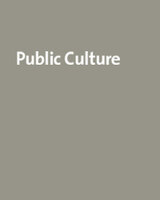 Johannesburg: The Elusive Metropolis, Volume 16
Sarah Nuttall and Achille Mbembe, eds.
Duke University Press This issue of Public Culture attempts to overturn perceptions that frame Africa as an object apart from the rest of the world. By placing the city of Johannesburg—the preeminent metropolis of the African continent and a city facing a complicated legacy of racial strife and wealth accumulation—at the heart of new critical urban theory, Johannesburg: The Elusive Metropolis broadens discussions of modernity, cosmopolitanism, and urban renewal to include Africa. The issue brings Johannesburg into direct dialogue with other world cities, creating a space for the interrogation and investigation of the metropolis in a properly global sense. Contributors to this issue—a mix of scholars, urban planners, and artists, many of whom hail from South Africa—reveal Johannesburg to be a polycentric and international city that has developed its own cosmopolitan culture. In a detailed study of three streets in the modern precinct of Melrose Arch, one essay shows how the thoroughly commodified and marketed Johannesburg cityscape has shaped the cultural sensitivities, aesthetics, and urban subjectivities of its inhabitants, at times even overriding the historical memory of apartheid. Another essay, focusing on the emergence of a new urban culture, examines how the city itself becomes a crucial site for the remixing and reassembling of racial identities. By tracking the movement of people with AIDS to various locations in the city to seek relief and treatment, another essay reveals an urban geography very different from what is seen from the highways. Finally, through interviews and commentaries, journalists, artists, and architects of Johannesburg offer reflections on the geography and shifting culture of the city and its townships, on the complicated relationship between Johannesburg and other African cities, and on the search for an architectural style that adequately expresses the complexity of this cosmopolitan city. Contributors. Lindsay Bremner, Nsizwa Dlamini, Mark Gevisser, Grace Khunou, Frédéric Le Marcis, John Matshikiza, Achille Mbembe, Sarah Nuttall, Rodney Place, AbdouMaliq Simone, Michael Watts
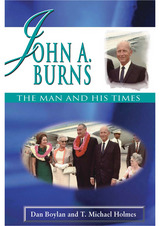 John A. Burns: The Man and His Times
Dan Boylan and T. Michael Holmes
University of Hawaii Press, 2000 The period 1945–1975 is often referred to as "The Burns Years" in Hawai‘i history books, and rightfully so. John A. Burns looms as Hawai‘i’s most significant political figure of the last half of the twentieth century. Burns entered politics at the close of World War II, working closely with organized labor leaders and Japanese-American war veterans to forge a Democratic party that would be an instrument of social change in Hawai‘i. For twelve years, over the course of three successive terms as governor, Burns helped to shape many important elements of Hawai‘i’s social and political structure that continue to this day.
The central feature of Burns’ success was the coalition of labor and Americans of Japanese ancestry he created and worked so hard to sustain as party leader, Delegate-to-Congress, and Governor. That coalition took control of Hawai‘i’s legislature in 1954, its congressional delegation in 1956, and its executive office in 1962—and has held on to all three ever since.
 John A. Johnson: The People’s Governor
Winifred G. Helmes
University of Minnesota Press, 1949 John A. Johnson was first published in 1949. Minnesota Archive Editions uses digital technology to make long-unavailable books once again accessible, and are published unaltered from the original University of Minnesota Press editions. The first native-born governor of Minnesota, and the only Democrat to have been elected to that office three times, was also the first Minnesotan to have a presidential nomination within his grasp. This study of a man who was, perhaps, the state's most beloved chief executive is a warm, fast-moving personal biography and an engrossing piece of political history. The issues, personalities, shifting political currents, and party cleavages, state and national, of the early 1900s live again in the full recounting of the political campaigns of that era. One chapter is devoted to the 1908 Democratic National Convention at which Johnson's name was place in nomination for the presidency—the convention which chose William Jennings Bryan as its standard-bearer for the third and last time. Johnson was a man of buoyant spirit and great personal charm, and the story of his life again dramatizes the American tradition that by force of character a man can lift himself from the humblest beginnings. At the time of his death in 1909 the warships in New York harbor dropped their flags to half-mast, and hundreds of memorial services were held throughout the nation. Many believed that, had he lived, Johnson would have won the presidential nomination and election in 1912.
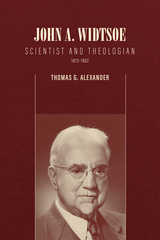 John A. Widtsoe: Scientist and Theologian, 1872-1952
Alexander, Thomas G.
Signature Books, 2023 Born in Norway, John A. Widtsoe (1872–1952), was renowned for his expertise in irrigation and dry farming. His pioneering work pushed the boundaries of and contributed significantly to advancements in agricultural practices. Moreover, his forays into the field of biochemistry exemplified his relentless pursuit of scientific understanding. Widtsoe’s journey came with challenges especially after he was called as an apostle in the Church of Jesus Christ of Latter-day Saints. As president of both Utah State Agricultural College (1907–16) and the University of Utah (1916–21), he faced controversies and obstacles head-on. Additionally, he played a significant role in overseeing the expansion of the LDS gospel in both Europe and the United States. He was highly esteemed within his church due to his ability to provide thorough and insightful explanations of various aspects of church doctrine and reconcile them with scientific truths. Throughout the early-to-mid-twentieth century, he symbolized to many members the successful integration of religious faith with secular knowledge, inspiring countless individuals to embrace both realms in harmony.
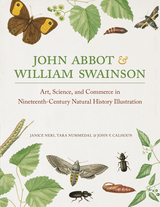 John Abbot and William Swainson: Art, Science, and Commerce in Nineteenth-Century Natural History Illustration
Janice Neri, Tara Nummedal, and John V. Calhoun
University of Alabama Press, 2019 An archive of never-before-published illustrations of insects and plants painted by a pioneering naturalist
During his lifetime (1751–ca. 1840), English-born naturalist and artist John Abbot rendered more than 4,000 natural history illustrations and profoundly influenced North American entomology, as he documented many species in the New World long before they were scientifically described. For sixty-five years, Abbot worked in Georgia to advance knowledge of the flora and fauna of the American South by sending superbly mounted specimens and exquisitely detailed illustrations of insects, birds, butterflies, and moths, on commission, to collectors and scientists all over the world.
Between 1816 and 1818, Abbot completed 104 drawings of insects on their native plants for English naturalist and patron William Swainson (1789–1855). Both Abbot and Swainson were artists, naturalists, and collectors during a time when natural history and the sciences flourished. Separated by nearly forty years in age, Abbot and Swainson were members of the same international communities and correspondence networks upon which the study of nature was based during this period.
The relationship between these two men—who never met in person—is explored in John Abbot and William Swainson: Art, Science, and Commerce in Nineteenth-Century Natural History Illustration. This volume also showcases, for the first time, the complete set of original, full-color illustrations discovered in 1977 in the Alexander Turnbull Library in Wellington, New Zealand. Originally intended as a companion to an earlier survey of insects from Georgia, the newly rediscovered Turnbull manuscript presents beetles, grasshoppers, butterflies, moths, and a wasp. Most of the insects are pictured with the flowering plants upon which Abbot thought them to feed. Abbot’s journal annotations about the habits and biology of each species are also included, as are nomenclature updates for the insect taxa.
Today, the Turnbull drawings illuminate the complex array of personal and professional concerns that informed the field of natural history in the eighteenth and nineteenth centuries. These illustrations are also treasured artifacts from times past, their far-flung travels revealing a world being reshaped by the forces of global commerce and information exchange even then. The shared project of John Abbot and William Swainson is now brought to completion, signaling the beginning of a new phase of its significance for modern readers and scholars.
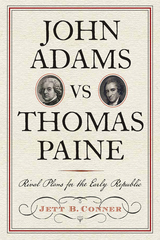 John Adams vs Thomas Paine: Rival Plans for the Early Republic
Jett B. Conner
Westholme Publishing, 2018 How Paine’s Common Sense and Adams’s Thoughts on Government Shaped Our Modern Political Institutions
Initially admiring Thomas Paine’s efforts for independence, John Adams nevertheless was rattled by the political philosophy of Common Sense and responded to it by publishing his Thoughts on Government to counteract Paine’s proposals, which Adams said were far too “democratical.” Although John Adams is given credit for his substantive contributions to American constitutionalism, especially his notions of separation of powers, checks and balances, and representation, in John Adams vs Thomas Paine: Rival Plans for the Early Republic, historian Jett B. Conner makes the case that Thomas Paine was more than just a revolutionary figure who spurred Americans toward declaring independence. Common Sense made important contributions to American constitutional thought, too, particularly its call for more equal representation, popular sovereignty, a constitutional convention, and a federal system of governance with a strong central government. The book explores how the two rivals helped shape America’s first constitutions—the Articles of Confederation and those of several states— and how they continued contributing to American political thought as it developed during the so-called “critical period” between the adoption of the Articles of Confederation and the start of the Constitutional Convention of 1787. It also focuses on the creation of our democratic republic and compares Paine’s and Adams’s approaches to structuring constitutions to ensure free government while guarding against abuses of power and the excesses of democratic majorities. An abridged version of Common Sense and the short but complete Thoughts on Government are included in an appendix for easy reader reference.
John and Judaism: A Contested Relationship in Context
R. Alan Culpepper
SBL Press, 2017 A window into early Judaism and Christianity The Gospel of John was written during the period of the emergence of Christianity and its separation from Judaism and bears witness to their contested relationship. This volume contains eighteen cutting-edge essays written by an international group of scholars who interpret for students and general readers what the book tells us about first-century Judaism, the separation of the church from Judaism, and how John's anti-Jewish references are being interpreted today. Features: - A debate over the process that led to the separation of the church from Judaism, and John's place in that process
- A review of recent interpretations of John's anti-Jewish references
- An assessment of the current status of Jewish Christian relations
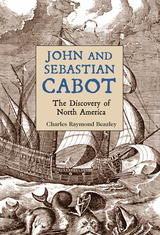 John and Sebastian Cabot: The Discovery of North America
Charles Raymond Beazley
Westholme Publishing, 2015 A Classic in the History of Exploration, a Judicious Account of the Role of the Cabots in the Discovery of the New World
John Cabot, Giovanni Caboto in his native Italian, led an expedition to the New World in 1497 on behalf of King Henry VII of England. He is considered the first European to explore North America since the Viking voyages five hundred years earlier. Although Cabot’s exact landfall on his first voyage is not known—it could have been Nova Scotia, Newfoundland, or even Maine—his claim for England to this territory countered the Spanish and Portuguese explorations to the south, and changed world history. Cabot made three roundtrips between Bristol, England, and North America, and later, his son Sebastian, made two similar voyages. John and Sebastian Cabot: The Discovery of North America by historian Sir Charles Raymond Beazley was first published in 1898. Its enduring value in addition to its lucid, well-balanced and researched narrative is the author’s detailed history of prior voyages to the North American continent, including those from China and the Pacific Islands as well as those from the realms of mythology. The author also includes all extant references to the Cabots in historical documents.
 John Andrews: Architect of Uncommon Sense
Paul Walker
Harvard University Press Though he garnered global praise at the peak of his career from 1960 to 1990, Australian architect John Andrews faced waning fame as postmodern cultural transformations challenged modernist design values, and wider social and economic changes led to a withdrawal of government-funded institutional commissions. Yet his body of work is a remarkable achievement that deserves to be better known.
Following a path from Australia to the United States and Canada and back again, John Andrews: Architect of Uncommon Sense examines his most important buildings and reveals how the internationalization of architecture during this period was an unexpectedly dispersed geographical phenomenon, following more complex flows and localized progressions than earlier modernist ideas that travelled from center to periphery, metropole to outpost. Andrews negotiated the advent of postmodernism not by ignoring it, but by cultivating approaches that this new era foregrounded—identity, history, place—within the formal vocabularies of modernism. As Andrews assumed wider public roles and took appointments that allowed him to shape architectural education, he influenced design culture beyond his own personal portfolio. This book presents his legacy traversing local and international scenes and exemplifying late-modern developments of architecture while offering both generational continuities and discontinuities with what came after.
John Andrews: Architect of Uncommon Sense features essays from Paul Walker, Mary Lou Lobsinger, Peter Scriver and Antony Moulis, Philip Goad, and Paolo Scrivano, along with nearly 100 new photographs from visual artist Noritaka Minami of existing buildings designed by Andrews in North America and Australia.
John Arbuthnot: Mathematician and Satirist
Lester M. Beattie
Harvard University Press John Arbuthnot, favorite physician to Queen Anne, was the author of numerous satirical works, a popularizer of mathematics and science, a politician, a brilliant controversalist, and the friend or enemy of every noted person in the early eighteenth century. In spite of his prominence, he has been the subject of only one previous volume, a fact which indicates in some measure how much unexplored territory Dr. Beattie has covered. The present book is not biographical but in the main a critical study of Arbuthnot’s work, especially The History of John Bull. Considerable quotations from Arbuthnot’s writings are included, so that the book can be read understandingly by those not already familiar with the works themselves. Harvard Studies in English, 16.
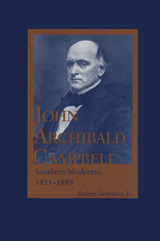 John Archibald Campbell: Southern Moderate, 1811–1889
Robert Saunders Jr.
University of Alabama Press, 1997 The first full biography of the southern U.S. Supreme Court justice who championed both the U.S. Constitution and states’ rights.
The life of John Archibald Campbell reflects nearly every major development of 19th-century American history. He participated either directly or indirectly in events ranging from the Indian removal process of the 1830s, to sectionalism and the Civil War, to Reconstruction and redemption. Although not a defender of slavery, he feared that abrupt abolition would produce severe economic and social dislocation. He urged southerners to reform their labor system and to prepare for the eventual abolition of slavery. In the early 1850s he proposed a series of reforms to strengthen slave families and to educate the slaves to prepare them for assimilation into society as productive citizens. These views distinguished him from many southerners who steadfastly maintained the sanctity of the peculiar institution.
Born and schooled in Georgia, Campbell moved to Montgomery, Alabama, in the early 1830s, where he joined a successful law practice. He served in the Alabama legislature for a brief period and then moved with his family to Mobile to establish a law practice. In 1853 Campbell was appointed an associate justice of the U.S. Supreme Court. His concurring opinion in the Dred Scott case in 1857 derived not from the standpoint of protecting slavery but from an attempt to return political power to the states. As the sectional crisis gathered heat, Campbell counseled moderation. He became widely detested in the North because of his defense of states’ rights, and he was distrusted in the South because of his moderate views on slavery and secession. In May 1861 Campbell resigned from the Court and later became the Confederacy's assistant secretary of war. After the war, Campbell moved his law practice to New Orleans. Upon his death in 1889, memorial speakers in Washington, D.C., and New Orleans recognized him as one of the nation's most gifted lawyers and praised his vast learning and mastery of both the common law and the civil law.
In this first full biography of Campbell, Robert Saunders, Jr., reveals the prevalence of anti-secession views prior to the Civil War and covers both the judicial aspects and the political history of this crucial period in southern history.
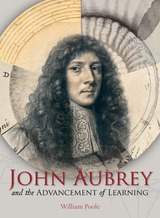 John Aubrey and the Advancement of Learning
William Poole
Bodleian Library Publishing, 2010 John Aubrey (1626–97) was one of the best-connected scholars and antiquaries in the great decades of the British scientific revolution. He is remembered as a pioneer historian and the father of English life-writing, whose Brief Lives remains a lasting portrait of a generation of eminent thinkers and nobles. But Aubrey’s intellectual interests were much broader. He was one of the first Fellows of the Royal Society, and he was acquainted with leading scientists of the generation of Robert Hooke and Isaac Newton. Aubrey championed Hooke’s geological theories, radical for the time, that proposed the organic origin of fossils. In addition, Aubrey was a keen mathematician and an early donor to the Ashmolean Museum of Art and Archaeology and the Bodleian Library. Extensively illustrated, John Aubrey and the Advancement of Learning presents all of Aubrey’s varied interests and pursuits in their intellectual milieu. Published to celebrate the 350th anniversary of the Royal Society, this is the first accessible and illustrated guide to Aubrey’s many diverse achievements as a biographer, natural philosopher and scientist, and antiquary.
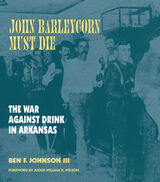 John Barleycorn Must Die: The War Against Drink in Arkansas
Ben F. Johnson III
University of Arkansas Press, 2005 As the traditional British folk song that the rock group Traffic made famous in the 1970s and that lends its name to this book’s title demonstrates, the battle against John Barleycorn was a losing one: “And little Sir John and the nut-brown bowl / Proved the strongest man at last.” Ben Johnson’s sweeping, highly readable, and extensively illustrated “spirited” overview of Arkansas’s efforts to regulate and halt the consumption of alcohol reveals much about the texture of life and politics in the state—and country—as Arkansas grappled with strong opinions on both sides. After early attempts to keep drink from the American Indians during the colonial period, temperance groups’ efforts switched to antebellum towns and middle-class citizens. After the Civil War new federal taxes on whiskey production led to violence between revenue agents and moonshiners, and the state joined the growing national movement against saloons that culminated in 1915 when the legislature approved a measure to halt the sale, manufacture, and distribution of alcohol—including that of Arkansas’s substantial wine industry. The state supported national prohibition, but people became disillusioned with the widespread violations of the law. However, the state didn’t repeal its own prohibition law until a fiscal crisis in 1935 required it in order to raise revenue. The new law only authorized retail liquor stores, not the return of taverns or bars. A final effort to restore laws against John Barleycorn in 1950 was rebuffed by voters. Still, there are a number of counties in Arkansas that remain dry and disputes over the granting of private club licenses continue to make news.
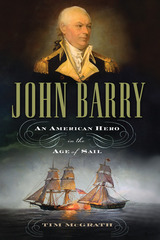 John Barry: An American Hero in the Age of Sail
Timothy McGrath
Westholme Publishing, 2010 The Life of the First Captain of the United States Navy
Finalist for the Rear Admiral Samuel Eliot Morison Award for Excellence in Naval Literature “Ashore as well as at sea, Tim McGrath paints an informative, engaging and highly entertaining portrait of this worthy but neglected hero of American independence. The author shows us a man who was a magnificent embodiment of common sense—and uncommon courage and dedication. That such a work is long overdue makes its achievement all the more pleasurable.”—Wall Street Journal “Combining sophisticated use of sources with a pleasing writing style, McGrath masterfully rescues a father of the U.S. Navy from unmerited eclipse.”—Publishers Weekly “A nearly indispensable addition to U.S. Navy collections.”— Booklist “McGrath employs exemplary narrative style in this work. . . . In John Barry, the author adroitly juxtaposes maritime history, narratives of naval combat, and early U.S. social history.”—New England Quarterly “McGrath is a compelling and lucid writer. He brings Barry to life, makes battles understandable, and provides the clearest description of Barry's 1778 capture of the British transport ships Mermaid and Kitty that this reviewer has seen.”—Pennsylvania Magazine of History and Biography “A great read and an absorbing account of a drama-filled life.”—Naval History “Well researched, well written, and a pleasure to read, this book restores John Barry to the important place he once held as one of our nation’s great heroes. It is a tale of high adventure and personal courage and you will not want to put it down.” —JAMES L. NELSON, author of George Washington’s Secret Navy “Readers of this vivid biography will imagine they smell the ocean’s salt air and the sulfurous fumes of gunpowder as they navigate these action-packed pages. Fans of Horatio Hornblower and Lucky Jack Aubrey will rejoice in discovering their real-life American counterpart.”—GREGORY J. URWIN, author of Facing Fearful Odds: The Siege of Wake Island The man regarded as “the Father of the American Navy” returns to the quarterdeck in John Barry: An American Hero in the Age of Sail, the first comprehensive biography of this legendary officer in generations. Son of a hardscrabble Irish farmer from County Wexford, Barry was sent to sea as a child, arriving in Philadelphia during the restless decade before the American Revolution. Brave and ambitious, he ascended the ratlines to become a successful merchant captain at a young age, commanding the most prestigious ship in the colonies and recording the fastest known day of sail in the century. Volunteering to fight for the Continental cause, Barry saw his star rise during the War for Independence. As captain of the Lexington, Raleigh, and Alliance, Barry faced down broadsides, mutinies, and even a fleet of icebergs. He captured the first enemy warship taken by a Continental vessel and fought the last battle of the American Revolution. His hard-won victory over two British warships simultaneously garnered him international notoriety, while his skill as a seafarer and cool temper established Barry as a worthy foe among British captains. Without a ship during the winter of 1776-77, the ever resourceful Barry lead a battery of naval artillery at the battle of Princeton. With peace came a historic voyage to China, where Barry helped open trade with that reclusive empire. In 1794, President Washington named Barry as the first commissioned officer in the new United States Navy. Given the title of commodore, Barry ended his career during America’s naval war with France, teaching the ropes to a new generation of officers, most notably Stephen Decatur. Drawn from primary source documents from around the world, John Barry: An American Hero in the Age of Sail by Tim McGrath brings the story of this self-made American back to life in a major new biography.
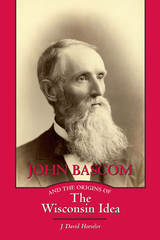 John Bascom and the Origins of the Wisconsin Idea
J. David Hoeveler Jr.
University of Wisconsin Press, 2017 In the Progressive Era of American history, the state of Wisconsin gained national attention for its innovative economic and political reforms. Amidst this ferment, the "Wisconsin Idea" was popularized—the idea that a public university should improve the lives of people beyond the borders of its campus.
During his term as governor (1901–1906), Robert La Follette routinely consulted with University of Wisconsin researchers to devise groundbreaking programs and legislation. Although the Wisconsin Idea is often attributed to a 1904 speech by Charles Van Hise, then president of the University of Wisconsin, David Hoeveler argues that it originated decades earlier, in the creative and fertile mind of John Bascom.
A philosopher, theologian, and sociologist, Bascom (1827–1922) deeply influenced a generation of students at the University of Wisconsin, including La Follette and Van Hise. Hoeveler documents how Bascom drew concepts from German idealism, liberal Protestantism, and evolutionary theory, transforming them into advocacy for social and political reform. He was a champion of temperance, women's rights, and labor, all of which brought him controversy as president of the university from 1874 to 1887. In a way unmatched by any of his peers at other institutions, Bascom outlined a social gospel that called for an expanded role for state governments and universities as agencies of moral improvement.
Hoeveler traces the intellectual history of the Wisconsin Idea from the nineteenth century to such influential Progressive Era thinkers as Richard T. Ely and John R. Commons, who believed university researchers should be a vital source of expertise for government and citizens.
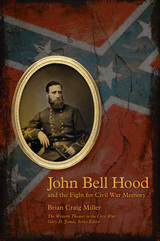 John Bell Hood and the Fight for Civil War Memory
Brian Craig Miller
University of Tennessee Press, 2010
“Previous biographers have poorly understood Hood within the culture of his times, but Miller’s study is a refreshing look at this important theme. Relying on the perspective of memory studies and the experience of amputees, he adds new dimensions to our understanding of Hood and the Civil War.”
—Earl J. Hess, author of In the Trenches at Petersburg: Field Fortifications and Confederate Defeat
“Miller is particularly strong on the cultivation of Hood’s legend as part of the Lost Cause narrative. . . . He has done nice work in areas previously neglected, offering the first new research on Hood to emerge in years.”
—David Coffey, author of John Bell Hood and the Struggle for Atlanta
Some Southern generals, like Lee and Jackson, have stood the test of time, celebrated in their place in history. And then there are generals like John Bell Hood, reviled and ridiculed by generations of Civil War historians as one of the inglorious architects of the Confederate disgrace in the Western Theater. The time has come to rethink this long-held notion, argues Brian Miller, in his comprehensive new biography, John Bell Hood and the Fight for Civil War Memory, and to reassess John Bell Hood as a man, a myth, and a memory.
In this first biography of the general in more than twenty years, Miller offers a new, original perspective, directly challenging those historians who have pointed to Hood’s perceived personality flaws, his alleged abuse of painkillers, and other unsubstantiated claims as proof of his incompetence as a military leader. This book takes into account Hood’s entire life—as a student at West Point, his meteoric rise and fall as a soldier and Civil War commander, and his career as a successful postwar businessman. In many ways, Hood represents a typical southern man, consumed by personal and societal definitions of manhood that were threatened by amputation and preserved and reconstructed by Civil War memory. Miller consults an extensive variety of sources, explaining not only what Hood did but also the environment in which he lived and how it affected him.
What emerges is a more nuanced, balanced portrait, unfettered by the one-sided perceptions of previous historical narratives. It gives Hood the fair treatment he has been denied for far too long. By looking at Hood’s formative years, his wartime experiences, and his postwar struggles to preserve his good name, this book opens up a provocative new perspective on the life of this controversial figure.
Brian Craig Miller is an assistant professor of history at Emporia State University. He is the author of The American Memory: Americans and Their History in 1877.
John Betjeman and Cornwall: ',The Celebrated Cornish Nationalist',
Philip Payton
University of Exeter Press, 2010
Quintessentially English, Sir John Betjeman was an outsider in England and doubly so in his adopted home of Cornwall, where, as he was the first to admit, he was a foreigner. Nonetheless, as this book describes, the former Poet Laureate strove to acquire a veneer of Cornishness, discovering his own Welsh ancestry and cultivating an alternative Celtic identity that he wove during sojourns in Ireland, the other Celtic countries, and even Australia. Here eminent Cornish studies scholar Philip Payton provides a lively new account of the life of one of Britain’s most beloved poets, offering new insights into his work and his defining lifelong relationship with Cornwall.
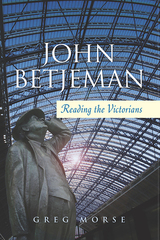 John Betjeman: Reading the Victorians (Revised Second Edition)
Greg Morse
Sussex Academic Press, 2022 John Betjeman (1906-1984) was undoubtedly the most popular Poet Laureate since Tennyson. But, beneath the thoroughly modern window on Britain that he opened during his lifetime lay the influence of his 19th-century Victorian forebears. This book - now available in paperback - explores Betjeman's identity through such Victorianism via the verse of that period, as well as its architecture, religious faith, and - more importantly - religious doubt. It was, nevertheless, a process which took time. In the 1930s, Betjeman's work was tinted with modernism and traditionalism. He found Victorian buildings 'funny' and wrote much in praise of the Bauhaus style, even though his early poetry was peppered with Victorian references. This leaning was incorporated into a greater sense of purpose during World War II, when he transformed himself from precious humorist into propagandist. The resulting sense of cohesion grew when the dangers of post-war urban redevelopment heightened the need to critique the present via the poetics of the past, a mood which continued up to and beyond his gaining the Laureateship in 1972. This duty proved to be a millstone, so the 'official' poems are thus explored by the author more fully than hitherto. The book concludes with a look back to Betjeman's 1960 verse-autobiography, Summoned by Bells, which is seen as the apogee of his achievement and a snapshot of his identity. Included here is the first critical appreciation of the lyrics embodied within the text, which are taken as a map of the young poet's literary growth. The book leads to a final appraisal of his originality, as evidenced by his glances towards postmodernism, feminism, and post-colonialism. The fact is that Betjeman never quite fits in anywhere. He is always a square peg in a round hole or a round peg in a square hole, often for the sheer enjoyment of so being. In a sense, his desire to be as non-conformist as a Quaker meeting house makes him a radical, rather than the reactionary that his interests imply. He was a champion of beauty and the British Isles, and clearly did much to make the British see the worth of their Victorian forebears.
 John Brown: A Biography
W. E. B. Du Bois
Westholme Publishing, 2024 In the preface to his biography of John Brown, W. E. B. Du Bois writes that the book “is at once a record of and a tribute to the man who of all Americans has perhaps come nearest to touching the real souls of black folk.” Du Bois alludes to this in Souls of Black Folk when he describes John Brown’s actions: “led by [Charles Lenox] Remond, [William Cooper] Nell, [William] Wells-Brown, and [Frederick] Douglass, a new period of self-assertion and self-development dawned. To be sure, ultimate freedom and assimilation was the ideal before the leaders, but the assertion of the manhood rights of the Negro by himself was the main reliance, and John Brown’s raid was the extreme of its logic.” First published in 1909, the same year Du Bois helped found the NAACP, John Brown is a studious account of the fiery abolitionist’s life, while throughout are asides intertwined in the narrative that provide additional insights into Du Bois’s thoughts on race and America. The life of John Brown carries a message that still resonates in twenty-first century, and Du Bois makes it his refrain throughout this volume: “The cost of liberty is less than the price of repression.”
This edition is introduced by John Brown scholar William S. King, who provides the background to the writing of the biography which took place during a turbulent time of race relations and competing visions from Booker T. Washington and Du Bois for the future of Black Americans. “Du Bois,” King reminds us, “remains one of the best writers on this phase of American history, which is still at our core.”
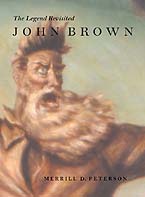 John Brown: The Legend Revisited
Merrill D. Peterson
University of Virginia Press, 2002 Few figures hold as mythic a place in America's historical consciousness as John Brown. A fervent abolitionist, his New England reserve tempered by a childhood on the Ohio frontier, Brown advocated arming fugitive slaves to fight for their freedom, an idea that impressed Frederick Douglass, Ralph Waldo Emerson, and Henry David Thoreau. In 1855, answering the call of his five sons to join them in the desperate struggle for freedom in the new territories, John Brown became a hero of "Bleeding Kansas." When he returned east, the fiery leader launched his ambitious campaign to rouse the slaves to freedom with a raid on the federal arsenal at Harpers Ferry in 1859.
Labeled a madman for his failed military adventure, and repudiated even by prominent antislavery leaders, Brown was tried in a Virginia court and sentenced to hang for treason and sundry other crimes. In John Brown: Legend Revisited, the eminent historian Merrill D. Peterson brings the same blend of sharp-eyed analysis and narrative elegance to bear on Brown's legacy that he has used to unravel the images of Thomas Jefferson and Abraham Lincoln.
Brown's reputation has undergone a series of tectonic shifts since he met his death on the gallows just before the Civil War. Southerners viewed his exploits with apprehension, seeing Harpers Ferry as a harbinger of servile insurrection, while Brown's eloquence before the court won him sympathy in the North and confirmed his place there as a hero and martyr. Thoreau, the author of passive resistance, wrote of Brown as a man of conscience. Perhaps most important historically, Brown's exploits convinced Southerners that Lincoln's election meant secession and a call to arms.
Peterson gives us Brown in his own day, but he also shows how the flaming abolitionist warrior's image, celebrated in art, literature, and journalism, has shed some of the infamy conferred by "Bleeding Kansas" to become a symbol of American idealism and fervor to activists along the political spectrum. And so in the civil rights battles of the twentieth century, Brown became a hero to African Americans.
--------------------------------------------------------------------------------
"With wonderful writing, an eye for telling detail, thorough research, the insights of a superb historian, and an ability to encapsulate that borders on genius, Merrill D. Peterson traces the legend of this fascinating and complex man from Brown's own era to the present day. John Brown: The Legend Revisited is, in many ways, a tour de force."
--Charles B. Dew, Williams College, author of Bond of Iron and Apostles of Disunion
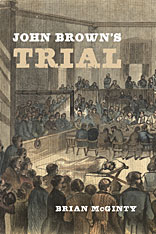 John Brown’s Trial
Brian McGinty
Harvard University Press, 2009 Mixing idealism with violence, abolitionist John Brown cut a wide swath across the United States before winding up in Virginia, where he led an attack on the U.S. armory and arsenal at Harpers Ferry. Supported by a “provisional army” of 21 men, Brown hoped to rouse the slaves in Virginia to rebellion. But he was quickly captured and, after a short but stormy trial, hanged on December 2, 1859.
Brian McGinty provides the first comprehensive account of the trial, which raised important questions about jurisdiction, judicial fairness, and the nature of treason under the American constitutional system. After the jury returned its guilty verdict, an appeal was quickly disposed of, and the governor of Virginia refused to grant clemency. Brown met his death not as an enemy of the American people but as an enemy of Southern slaveholders.
Historians have long credited the Harpers Ferry raid with rousing the country to a fever pitch of sectionalism and accelerating the onset of the Civil War. McGinty sees Brown’s trial, rather than his raid, as the real turning point in the struggle between North and South. If Brown had been killed in Harpers Ferry (as he nearly was), or condemned to death in a summary court-martial, his raid would have had little effect. Because he survived to stand trial before a Virginia judge and jury, and argue the case against slavery with an eloquence that reverberated around the world, he became a symbol of the struggle to abolish slavery and a martyr to the cause of freedom.
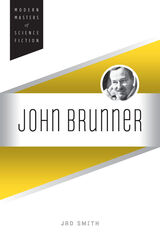 John Brunner
Jad Smith
University of Illinois Press, 2012 Under his own name and numerous pseudonyms, John Brunner (1934–1995) was one of the most prolific and influential science fiction authors of the late twentieth century. During his exemplary career, the British author wrote with a stamina matched by only a few other great science fiction writers and with a literary quality of even fewer, importing modernist techniques into his novels and stories and probing every major theme of his generation: robotics, racism, drugs, space exploration, technological warfare, and ecology. In this first intensive review of Brunner's life and works, Jad Smith carefully demonstrates how Brunner's much-neglected early fiction laid the foundation for his classic Stand on Zanzibar and other major works such as The Jagged Orbit, The Sheep Look Up, and The Shockwave Rider. Making extensive use of Brunner's letters, columns, speeches, and interviews published in fanzines, Smith approaches Brunner in the context of markets and trends that affected many writers of the time, including Brunner's uneasy association with the "New Wave" of science fiction in the 1960s and '70s. This landmark study shows how Brunner's attempts to cross-fertilize the American pulp tradition with British scientific romance complicated the distinctions between genre and mainstream fiction and between hard and soft science fiction and helped carve out space for emerging modes such as cyberpunk, slipstream, and biopunk.
 John Buridan: Portrait of a Fourteenth-Century Arts Master
Jack Zupko
University of Notre Dame Press, 2002 "John Buridan: Portrait of a Fourteenth-Century Arts Master is a solid piece of work in the history of philosophy. It contains original and fruitful ideas and a synoptic overview that is both illuminating and enlightening. Zupko's work is an admirable accomplishment." --Peter King, Ohio State University
John Buridan (c. 1300-1361) was the most famous philosophy teacher of his time, and probably the most influential. In this important new book, Jack Zupko offers the first systematic exposition of Buridan's thought to appear in any language. Zupko uses Buridan's own conception of the order and practice of philosophy to depict the most salient features of his thought, beginning with his views on the nature of language and logic and then illustrating their application to a series of topics in metaphysics, natural philosophy, and ethics.
Part 1 of John Buridan considers the picture of language and logic developed in Buridan's Summulae de dialectica. Buridan systematically overhauled the logic he first learned and later taught at the University of Paris, redeeming the older tradition of Aristotelian logic in terms, propositions, and arguments. This made possible newer and more powerful forms of philosophical discourse. The second part of this volume provides a reading of Buridan's philosophy, showing how this discourse shaped his treatment of speculative questions such as the relation between soul and body, the nature of knowledge, the proper subject of psychology, the function of the virtues, and the freedom of the will.
This groundbreaking book is sure to become the standard work on John Buridan.
JACK ZUPKO is associate professor of philosophy at Emory University
----------
"In this outstanding book, Zupko provides the first critical study in any language of the philosophy of one of the most significant arts masters of the 14th century, John Buridan. This work of impeccable scholarship in the history of late medieval thought will interest all scholars of medieval philosophy." --Choice
"... edifying for modern philosophers. For the historians, the book is a goldmine of information and a useful synopsis of what we know of this prominent 14th-century forerunner of the modern period." --The Medieval Review
"Buridan's thought as a whole deserves to be better known, and in this comprehensive examination of it Zupko has provided a model of historical and philosophical scholarship." --Dialogue
"John Buridan: Portrait of a Fourteenth-Century Arts Master is a solid piece of work in the history of philosophy. It contains original and fruitful ideas and a synoptic overview that is both illuminating and enlightening. Zupko's work is an admirable accomplishment." --Peter King, associate professor of philosophy, Ohio State University
"Zupko's John Buridan is a significant book. For the first time, readers get a readable and coherent overall picture of this towering medieval thinker. The book will enlighten not only newcomers to medieval philosophy but the seasoned specialist as well." --Paul Vincent Spade, Indiana University
"John Buridan (ca. 1300-1361) was a great philosopher in his time, whose greatness should have been recognized at all later times. Now, after being unduly eclipsed for about five centuries owing to the twists and turns of history, his name begins to be restored to its original luster, as more and more philosophers engage his thought on issues of contemporary interest. Jack Zupko's book provides anyone, specialist and non-specialist alike, enormous help in the process of re-engaging Buridan's sophisticated and sometimes technically difficult ideas. The book presents us not only with a near-complete survey of Buridan's work, ranging from logic to metaphysics, to natural philosophy, to psychology, to ethics, but also with a detailed intellectual portrait of the man in his time. It masterfully draws a complete picture, yet paying careful attention to important detail. Sound scholarship, combined with keen philosophical intuition and engaging, smoothly flowing prose make this book not only a powerful contribution to contemporary work on history of medieval philosophy, but a significant contribution to philosophy in general, and an exceptionally good read as well." --Gyula Klima, Fordham University
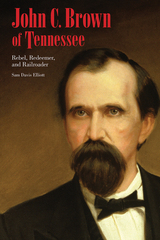 John C. Brown of Tennessee: Rebel, Redeemer, and Railroader
Sam D. Elliott
University of Tennessee Press, 2017
John Calvin Brown was a Confederate general, Tennessee politician, railroad executive, and lawyer, and yet he is little known to today’s Americans. He left behind few personal papers and died relatively young despite his remarkably productive life, leaving his voice silent while historical debate raged over events in which he was a significant player.
John C. Brown of Tennessee is the first full-scale biography of this understudied figure. Author Sam Davis Elliott’s comprehensive research reveals how Brown rose to the rank of general in the Confederate Army of Tennessee. A five-time wounded veteran of nearly every one of the army’s battles from Fort Donelson to Franklin, Brown played a unique utility role as a division commander in the 1864 Atlanta Campaign. There is a substantial likelihood he was an early leader of the Ku Klux Klan after the war, but more well-established is his role as leader in the anti-Brownlow movement that sought to end Radical Reconstruction in Tennessee. He was selected president of the 1870 constitutional convention, which helped lead to his election as governor later that year. After his tumultuous time as governor seeking to resolve economic conflicts that began before the Civil War, he became a railroad executive and industrialist. He had a significant role in the struggle between rival financiers for control of the southern route to the Pacific, and was in the front lines of management on behalf of the Texas and Pacific Railroad during the Great Southwest Railroad Strike of 1886. His wide-ranging and successful career reflects not only the attributes of Brown’s character, but provides insight into many key events of nineteenth-century America.
John C. Brown of Tennessee fills not only a biographical but a historiographical gap in the literature on the Civil War and Reconstruction in Tennessee and the post-Confederate South.
 John C. Brown of Tennessee: Rebel, Redeemer, and Railroader
Sam D. Elliott
University of Tennessee Press, 2017 WINNER OF THE TENNESSEE HISTORY BOOK AWARD
John Calvin Brown was a Confederate general, Tennessee politician, railroad executive, and lawyer, and yet he is little known to today’s Americans. He left behind few personal papers and died relatively young despite his remarkably productive life, leaving his voice silent while historical debate raged over events in which he was a significant player.
John C. Brown of Tennessee is the first full-scale biography of this understudied figure. Author Sam Davis Elliott’s comprehensive research reveals how Brown rose to the rank of general in the Confederate Army of Tennessee. A five-time wounded veteran of nearly every one of the army’s battles from Fort Donelson to Franklin, Brown played a unique utility role as a division commander in the 1864 Atlanta Campaign. There is a substantial likelihood he was an early leader of the Ku Klux Klan after the war, but more well-established is his role as leader in the anti-Brownlow movement that sought to end Radical Reconstruction in Tennessee. He was selected president of the 1870 constitutional convention, which helped lead to his election as governor later that year. After his tumultuous time as governor seeking to resolve economic conflicts that began before the Civil War, he became a railroad executive and industrialist. He had a significant role in the struggle between rival financiers for control of the southern route to the Pacific, and was in the front lines of management on behalf of the Texas and Pacific Railroad during the Great Southwest Railroad Strike of 1886. His wide-ranging and successful career reflects not only the attributes of Brown’s character, but provides insight into many key events of nineteenth-century America.
John C. Brown of Tennessee fills not only a biographical but a historiographical gap in the literature on the Civil War and Reconstruction in Tennessee and the post-Confederate South.
Sam Davis Elliott is a practicing attorney in Chattanooga. He is the author of Isham G. Harris of Tennessee and Soldier of Tennessee: General Alexander P. Stewart and the Civil War in the West, and the editor of Doctor Quintard, Chaplain C.S.A. and Second Bishop of Tennessee.
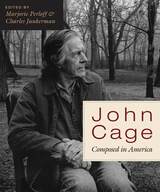 John Cage: Composed in America
Edited by Marjorie Perloff and Charles Junkerman
University of Chicago Press, 1994 When the great avant-gardist John Cage died, just short of his eightieth birthday in 1992, he was already the subject of dozens of interviews, memoirs, and discussions of his contribution to music, music theory, and performance practice. But Cage never thought of himself as only (or even primarily) a composer; he was a poet, a visual artist, a philosophical thinker, and an important cultural critic.
John Cage: Composed in America is the first book-length work to address the "other" John Cage, a revisionist treatment of the way Cage himself has composed and been "composed" in America. Cage, as these original essays testify, is a contradictory figure. A disciple of Duchamp and Schoenberg, Satie and Joyce, he created compositions that undercut some of these artists' central principles and then attributed his own compositional theories to their "tradition." An American in the Emerson-Thoreau mold, he paradoxically won his biggest audience in Europe. A freewheeling, Californian artist, Cage was committed to a severe work ethic and a firm discipline, especially the discipline of Zen Buddhism.
Following the text of Cage's lecture-poem "Overpopulation and Art," delivered at Stanford shortly before his death and published here for the first time, ten critics respond to the challenge of the complexity and contradiction exhibited in his varied work. In keeping with Cage's own interdisciplinarity, the critics approach that work from a variety of disciplines: philosophy (Daniel Herwitz, Gerald L. Bruns), biography and cultural history (Thomas S. Hines), game and chaos theory (N. Katherine Hayles), music culture (Jann Pasler), opera history (Herbert Lindenberger), literary and art criticism (Marjorie Perloff), cultural poetics (Gordana P. Crnkovic, Charles Junkerman), and poetic practice (Joan Retallack). But such labels are themselves confining: each of the essays sets up boundaries only to cross them at key points. The book thus represents, to use Cage's own phrase, a much needed "beginning with ideas."
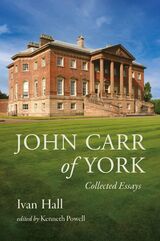 John Carr of York: Collected Essays
Ivan Hall
Paul Holberton Publishing, 2023 An introduction to the life and mind of one of England’s most significant architects.
John Carr of York (1723–1807) was one of the most prolific and significant architects of the eighteenth century, with an output of more than four hundred designs, which range from simple gateways to the grandest schemes. Highly successful in his day, he had a recognizable style that was sensitive to the latest fashions as they continued to change. His ability to create beautiful buildings and marry this with a practical approach to both the purpose of the building and the budget of his clients won him many commissions.
Carr was born in Yorkshire in the North of England and remained there for the duration of his career. Because of this, he has often been overlooked as an architect, and his extensive output has defeated many attempts to write a complete study of his work. Although not a comprehensive review, John Carr of York seeks to situate Carr as an architect of national significance. It includes photographs and covers overarching themes such as landscape and color and some commissions in more detail.
John Chrysostom, Homilies on Colossians
Pauline Allen
SBL Press, 2021 Pauline Allen translates Frederick Field's text of John Chrysostom's twelve homilies on Paul's Letter to the Colossians. Chrysostom concentrates in part on the apparently prevalent angel worship in Colossae (in modern Turkey). These homilies provide many details about everyday life in the late Roman period, such as the position of slaves and their treatment as well as various aspects of raising healthy, educated children. The themes of conflict between pagans, Jews, and Christians in the community, as well as the distinction between rich and poor in late antiquity, run throughout the homilies. This latest text and translation volume from WGRW is an essential resource for scholars and students interested in the history of the church.
John Chrysostom, Homilies on Philippians
Pauline Allen
SBL Press, 2013 This volume offers a translation of sixteen homilies by the most famous preacher in Christian antiquity, John Chrysostom. These homilies on Paul’s letter to the Philippians constitute the most comprehensive ancient surviving commentary on the letter in any language. The homilies have a direct and conversational style in which examples from daily life abound: children, the elderly, food, agriculture, seafaring, money, commerce, building, furniture, weather, illness, good health, animals, and slavery. Friendship themes, based on Paul’s relationship with the church at Philippi, and Christology also figure largely in these homilies. This volume, with Greek text and English translation on facing pages, situates Chrysostom’s homilies on Paul’s letter to the Philippians in their historical, homiletical, rhetorical, and liturgical contexts.
John Chrysostom, Homilies on Titus and Philemon
Pauline Allen
SBL Press, 2024 In her latest volume on John Chrysostom, Pauline Allen translates into English nine homilies on two of Paul’s letters. Included in this collection are six homilies on Titus that deal with Chrysostom’s attitudes toward episcopal accountability, the household, marriage, and almsgiving. Three homilies on Philemon address the short letter’s inclusion in the canon, forgiveness, honor, the treatment of slaves, and God’s punishment. A thorough introduction that addresses the date, provenance, and content of these homilies makes this volume an essential source for scholars and students interested in the development of the church in the fourth to fifth centuries CE.
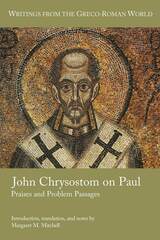 John Chrysostom on Paul: Praises and Problem Passages
Margaret M. Mitchell
SBL Press, 2022 A readily accessible text and translation for scholars and students of Paul, ancient Christian history, and biblical reception.
In this new volume in the Writings from the Greco-Roman World series, Margaret M. Mitchell collects twenty-five of John Chrysostom's lesser-known sermons on Pauline passages as well as some that focus on Paul himself. Mitchell presents the Greek text and an original translation of each of these fascinating sermons in a fresh, engaging style that seeks to recapture the vibrancy and dynamism of the live oratory behind the homilies. Extensive notes to each homily evaluate how Chrysostom dealt with some of the ethical, theological, historical, political, and literary problems present in Paul's writings. Mitchell's work on Chrysostom offers a model for scholars to explore and understand how ancient Christian interpreters found in Paul’s letters a legacy that was as problematic as it was precious.
 John Chrysostom, Theologian of the Eucharist
Kenneth J. Howell
Catholic University of America Press, 2024 Despite the fact that John Chrysostom wrote more on the Eucharist than any other Greek Church Father, there has never been a full treatment of his doctrine in English. In this book, Kenneth Howell brings together a wide array of sources from which he develops a many-sided portrait of Chrysostom’s eucharistic thought. While the Antiochene preacher assumed the real presence and the sacrificial nature of the Eucharist, he focused more on the moral and spiritual implications of communion. At the root of his theology lies the conviction that the Eucharist with its home in the liturgy is the extension of Christ’s incarnate life through space and time. All
that Christ accomplished in his life, death, and resurrection is present and available to the communing Christian who stands in union with the angelic hosts in the liturgy of the church. John’s preaching at times reaches encomiastic proportions as he never tires of praising the benefits and power of the Eucharist and he deftly applies the sacrament to the struggle of virtue and vice as he explores both the invitation and the obstacles to communion. Among the moral implications of the Eucharist, John seems to distinguish well between sins arising from human weakness versus malicious dispositions freely chosen. He is especially keen to exhort his hearers to lay aside
the remembrance of evil (mnesikakia) done to them in their past lives. Humility and forbearance are two essential virtues in arriving at forgiveness of past injuries. And lack of forgiveness is like greed in that both constitute a turn in on oneself. The Eucharist demands love of neighbor and active ministry to the less fortunate of the world. For John, God is interested in golden souls more than golden chalices.
John Ciardi: A Biography
Edward M. Cifelli
University of Arkansas Press, 1997 In this study of Ciardi’s life, Edward Cifelli has captured all the deep concern, passion, and thoughtfulness that marked Ciardi’s long career in American letters. With care and penetrating detail, Cifelli evokes Ciardi’s early childhood in Boston, his Italian heritage, his service as a gunner on a B-29 during World War II, and his years teaching at Harvard and Rutgers. Illuminated here are Ciardi’s widely read contributions as an editor of Saturday Review and World magazines, as well as his tireless effort to bring an awareness and love of language and poetry to America through radio, television, the lecture circuit, and his twenty-six years on the staff of the famous Bread Loaf Writers’ Conference, a gathering he directed for seventeen years.
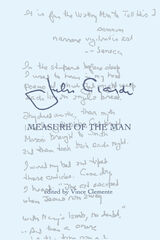 John Ciardi: Measure of the Man
Vince Clemente
University of Arkansas Press, 1989 Some men make so indelible a mark on the lives of others that a place in time is reserved for them. In this memorial volume, some whose lives have been touched by such a man share their thoughts and memories of the poet, translator, editor , teacher, student, father, son, and husband they knew as John Ciardi. X.J. Kennedy and Lewis Turco discuss Lives of X, a neglected American classic, which chronicles the years Ciardi spent growing up in Medford, Massachusetts, studying at Tufts, and serving as a gunner in World War II. Richard Eberhart remembers Ciardi’s unforgettable presence, while John Holmes and Roy W. Cowden remember him as a brilliant student and poet at Tufts and at Michigan, where he won the Avery Hopwood Award. Others remember him as a teacher at Harvard and Rutgers. Dan Jaffe writes, “If John Ciardi held to any cause, it was the notion of precision, to an uncompromising excellence, to the notion that to strive was in itself not enough that one needed to judge honestly, to assess courageously, and to respond without flinching.” William Heyden and Norbert Krapf tell how the books I Marry You and How Does a Poem Mean? influenced them as young men. In “john Ciardi: the Many Lives of Poetry,” John Nims claims Ciardi as our Chaucer. John Williams, Maxine Kumin, Diane Wakoski, and John Stone write about the Ciardi they knew at the Bread Loaf Writers’ Conference. Gay Wilson Allen describes the list of contributors to Measure of the Man as a “Who’s Who” in American literature. Certainly it is an impressive gathering of poets, critics, and friends who have been touched by John Ciardi. “We are all in his debt,” Norman Cousins writes in his essay “Ciardi at The Saturday Review,” “and it is important that we say so.”
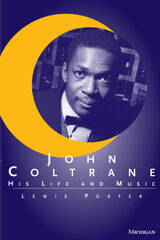 John Coltrane: His Life and Music
Lewis Porter
University of Michigan Press, 1998 John Coltrane was a key figure in jazz, a pioneer in world music, and an intensely emotional force whose following continues to grow. This new biography, the first by a professional jazz scholar and performer, presents a huge amount of never-before-published material, including interviews with Coltrane, photos, genealogical documents, and innovative musical analysis that offers a fresh view of Coltrane's genius.
Compiled from scratch with the assistance of dozens of Coltrane's colleagues, friends, and family, John Coltrane: His Life and Music corrects numerous errors from previous biographies. The significant people in Coltrane's life were reinterviewed, yielding new insights; some were interviewed for the first time ever.
The musical analysis, which is accessible to the nonspecialist, makes its own revelations--for example, that some of Coltrane's well-known pieces are based on previously unrecognized sources. The Appendix is the most detailed chronology of Coltrane's performing career ever compiled, listing scores of previously unknown performances from the 1940s and early 1950s.
Coltrane has become a musical inspiration for thousands of fans and musicians and a personal inspiration to as many more. For all of these, Porter's book will become the definitive resource--a reliable guide to the events of Coltrane's life and an insightful look into his musical practices.
". . . well researched, musically knowledgeable, and enormously interesting to read. Porter is a jazz scholar with deep knowledge of the tradition he is studying, both conceptually and technically." --Richard Crawford, University of Michigan
"Lewis Porter is a meticulous person with love and respect for Afro-American classical music. I applaud this definitive study of my friend John Coltrane's life adn achievements." --Jimmy Heath, jazz saxophonist, composer, educator
Lewis Porter is Associate Professor of Music, Rutgers University in Newark. A leading jazz scholar, he is the author of Jazz Readings from a Century of Change and coauthor of Jazz: From Its Origins to the Present. He was a project consultant on The Complete Atlantic Recordings of John Coltrane, which was nominated for a Grammy Award for Best Historical Reissue, and an editor and assisting author of the definitive Coltrane discography by Y. Fujioka.
 John Cuthbert Ford, SJ: Moral Theologian at the End of the Manualist Era
Eric Marcelo O. Genilo, SJ
Georgetown University Press, 2007 John Cuthbert Ford, SJ (1902-1989) was one of the leading American Catholic moralists of the 20th century. This is the first full-length analysis of his work and influence, one that not only reveals a traditionally Catholic method of moral analysis but also illuminates the conflicts behind and development of Catholic moral teaching during the volatile 1960s. Ford is best known for his influential contribution to Catholic teachings on three moral issues. His objection to the Allied practice of obliteration bombing during WWII by drawing a sharp distinction between combatants and noncombatants is still studied widely today. Ford campaigned for alcohol education for both clergy and laity and introduced a pastoral approach for assisting and counseling alcoholics. As a member of the Papal Commission on Population, Family, and Birth Rate during the 1960s, Ford was an unyielding defender of the traditional Catholic teaching on birth control that still reigns today. Drawing on the published works and personal papers of Ford, Eric Genilo begins with a brief description of the theologian's life, career, and influence. The book is divided into two parts. In Part I, Method, Genilo offers an overview of Ford's moral theology in the "manualist" tradition—a 300-year period during which Catholic priests used manuals to instruct the faithful on matters of morality and sin. Genilo then examines Ford's two modes of resolving moral cases and presents Ford's approach to doctrinal development. In Part II, Moral Objectivity, Genilo shows how Ford confronted the growing situation ethics movement, then moves to how he understood freedom and subjective culpability, particularly in the case of alcoholism. Later chapters reveal Ford's theological conflicts with Josef Fuchs, SJ on the issue of birth control, his staunch opposition to totalitarianism, and his moral analysis of how society should treat marginalized persons threatened by the abuse of power. Genilo concludes with an assessment of Ford's legacy to the development and practice of moral theology, leaving the reader with an in-depth portrait of an extraordinary man who dedicated his life to defending the Church and protecting the most vulnerable persons in society.
John Dee: The Politics of Reading and Writing in the English Renaissance
William H. Sherman
University of Massachusetts Press, 1995 This book challenges the conventional image of John Dee (1527–1609) as an isolated, eccentric philosopher. Instead, William H. Sherman presents Dee in a fresh context, revealing that he was a well-connected adviser to the academic, courtly, and commercial circles of his day.
 John Dewey & Decline Of American Education: How Patron Saint Of Schools Has Corrupted Teaching & Learning
Henry T. Edmondson III
Intercollegiate Studies Institute, 2006 The influence of John Dewey's undeniably pervasive ideas on the course of American education during the last half-century has been celebrated in some quarters and decried in others. But Dewey's writings themselves have not often been analyzed in a sustained way. In John Dewey and the Decline of American Education, Hank Edmondson takes up that task. He begins with an account of the startling authority with which Dewey's fundamental principles have been-and continue to be-received within the U.S. educational establishment. Edmondson then shows how revolutionary these principles are in light of the classical and Christian traditions. Finally, he persuasively demonstrates that Dewey has had an insidious effect on American democracy through the baneful impact his core ideas have had in our nation's classrooms. Few people are pleased with the performance of our public schools. Eschewing polemic in favor of understanding, Edmondson's study of the "patron saint" of those schools sheds much-needed light on both the ideas that bear much responsibility for their decline and the alternative principles that could spur their recovery.
What They're Saying...
"Edmondson’s critique of Dewey is useful, clear, and brief. He rightly sees Rousseau’s primitivism as a major influence, and he rightly distinguishes Dewey from Jefferson, whose reputation and lineage Dewey was eager to claim as his own."
—M.D. Aeschliman, The National Review
"A distinguished Southern scholar who has written widely on ethics and literature, including on Flannery O'Connor and J.R.R. Tolkien, Edmondson has bravely trekked through the desert wastes of forty volumes of what must be the most muddled prose to ever attain to such demonic power over a culture. Keeping his bearings by the polestars of Plato, Aristotle, Newman, Chesterton, and others who understand genuine education as Edmondson tracks the beast of educationism to its ultimate lair, where lie the scattered bones of countless students devoured by relativism and nihilism."
—New Oxford Review
"Edmondson excels in demonstrating that the problem with public education in this country is not just a matter of bad policy (although there is certainly plenty of that going on); it goes much deeper. It is a matter of faulty philosophy...Edmondson lays out many more detailed suggestions, making this book not only informative but also a very capable handbook for moving educational reform in the right direction."
—Townhall.com
"John Dewey believed that education was the key to social change. Yet as Henry T. Edmondson effectively shows in his new book, Dewey could not defy the inherent contradiction of his own philosophy, which has left an indelible mark on American education."
—Claremont Review of Books
"While all of his suggestions are meritorious, Edmondson's greatest contribution toward school reform is his overall conclusion....One hopes that Edmondson's book, dedicated to teachers, will spark the long road to renewal."
—Crisis
"Today, of course, public education has come under severe criticism and no book that I've read better explains the root cause of our national educational dilemma then Henry Edmondson's John Dewey and the Decline of American Education.
—Bob Cheeks, IntellectualConservative.com
"Edmondson doesn't draw the conclusion, but one puts this book down with the conviction that unless control of primary and secondary education is wrested from the U.S. educational establishment, corrective measures are not likely to occur."
—Jude P. Dougherty, The Catholic University of America
"If the title of Henry T. Edmondson's book leaves any room for doubt as to his views on John Dewey and [his] educational theories, the book's subtitle should make clear Edmondson's belief: Dewey's lasting influence on the U.S. education system has wrought nothing but diminishing returns, if not all-out catastrophic results."
—Bruce Edward WalkerMichigan Education Report
"…a bold indictment of one of the fathers of modern educational thought and practise…Edmondson's critique of Dewey is in the vein of conservative scholars such as Allan Bloom and Diane Ravitch, who have voiced similar concerns regarding the loss of tradition in education. It is clear that Edmondson also believes that education can regain prominence only by abandoning Deweyan progressivism and embracing traditional Western values."
—Perdue University Press, Education and Culture
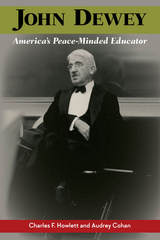 John Dewey, America's Peace-Minded Educator
Charles F. Howlett and Audrey Cohan
Southern Illinois University Press, 2016 One of America’s preeminent educational philosophers and public intellectuals, John Dewey is perhaps best known for his interest in the study of pragmatic philosophy and his application of progressive ideas to the field of education. Carrying his ideas and actions beyond the academy, he tied his philosophy to pacifist ideology in America after World War I in order to achieve a democratic world order. Although his work and life have been well documented, his role in the postwar peace movement has been generally overlooked.
In John Dewey, America’s Peace-Minded Educator, authors Charles F. Howlett and Audrey Cohan take a close look at John Dewey’s many undertakings on behalf of world peace. This volume covers Dewey’s support of, and subsequent disillusionment with, the First World War as well as his postwar involvement in trying to prevent another world war. Other topics include his interest in peace movements in education, his condemnation of American military intervention in Latin America and of armaments and munitions makers during the Great Depression, his defense of civil liberties during World War II, and his cautions at the start of the atomic age. The concluding epilogue discusses how Dewey fell out of favor with some academics and social critics in the 1950s and explores how Dewey’s ideas can still be useful to peace education today.
Exploring Dewey’s use of pragmatic philosophy to build a consensus for world peace, Howlett and Cohan illuminate a previously neglected aspect of his contributions to American political and social thought and remind us of the importance of creating a culture of peace through educational awareness.
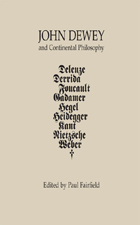 John Dewey and Continental Philosophy
Edited by Paul Fairfield
Southern Illinois University Press, 2010 “These essays build a valuable, if virtual, bridge between the thought of John Dewey and that of a host of modern European philosophers. They invite us to entertain a set of imagined conversations among the mighty dead that no doubt would have intrigued Dewey and each of the interlocutors gathered here.”—Robert Westbrook, author of John Dewey and American Democracy and/or Democratic Hope: Pragmatism and the Politics of Truth.
John Dewey and Continental Philosophy provides a rich sampling of exchanges that could have taken place long ago between the traditions of American pragmatism and continental philosophy had the lines of communication been more open between Dewey and his European contemporaries. Since they were not, Paul Fairfield and thirteen of his colleagues seek to remedy the situation by bringing the philosophy of Dewey into conversation with several currents in continental philosophical thought, from post-Kantian idealism and the work of Friedrich Nietzsche to twentieth-century phenomenology, hermeneutics, and poststructuralism.
John Dewey and Continental Philosophy demonstrates some of the many connections and opportunities for cross-traditional thinking that have long existed between Dewey and continental thought, but have been under-explored. The intersection presented here between Dewey’s pragmatism and the European traditions makes a significant contribution to continental and American philosophy and will spur new and important developments in the American philosophical debate.
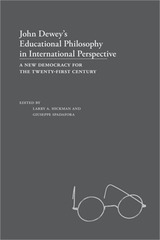 John Dewey's Educational Philosophy in International Perspective: A New Democracy for the Twenty-First Century
Edited by Larry A. Hickman and Giuseppe Spadafora
Southern Illinois University Press, 2009 John Dewey’s Educational Philosophy in International Perspective brings together eleven experts from around the globe to examine the international legacy of the famous philosopher. Placing special emphasis on Dewey’s theories of education, Larry A. Hickman and Giuseppe Spadafora have gathered some of the world’s most noted scholars of educational philosophy to present a thorough exploration of Dewey’s enduring relevance and potential as a tool for change in twenty-first-century political and social institutions.
This collection offers close examinations of the global impact of Dewey’s philosophies, both in his time and our own. Included are discussions of his reception as a much-respected yet criticized philosopher among European Catholics both before and after World War I; the utilization of his pragmatic theories in Italian education and the continuing quest to reinterpret them; his emergence as a source of inspiration to new democracies in Central and Eastern Europe; and his recently renewed popularity in the Hispanic world, particularly in South America and Spain. In addition, authors delve into Dewey’s notion of democracy as a personal way of life and his views on the important ties between education and the democratic state.
Also discussed are Dewey’s philosophies regarding school and society, including the understanding of educational trends as reflections of their social context; the contrast between his methods of applying intelligence to ethical problems and the theory of orthodox utilitarianism; responses to criticisms of Dewey’s controversial belief that the sciences can be applied directly to educational practices; and incisive queries into how he would have responded to the crucial role the Internet now plays in primary and secondary education.
This well-rounded volume provides international insight into Dewey’s philosophies and contains a wealth of information never before published in English, resulting in an indispensable resource for anyone interested in John Dewey and his lasting role in education around the world. Contributors Viviana Burza Franco Cambi Giorgio Chiosso Jim Garrison Jaime Nubiola Hilary Putnam Ruth Anna Putnam Giuseppe Spadafora Emil Višnovský Leonard J. Waks Krystyna Wilkoszewska
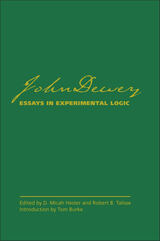 John Dewey's Essays in Experimental Logic
John Dewey. Edited by D. Micah Hester, and Robert B. Talisse. Introduction by Tom Burke
Southern Illinois University Press, 2007 Offering a new edition of Dewey’s 1916 collection of essays This critical edition of John Dewey’s 1916 collection of writings on logic, Essays in Experimental Logic—in which Dewey presents his concept of logic as the theory of inquiry and his unique and innovative development of the relationship of inquiry to experience—is the first scholarly reprint of the work in one volume since 1954. Essays in Experimental Logic, edited by D. Micah Hester and Robert B. Talisse, uses the authoritative texts from the Collected Works of John Dewey, 1882–1953 (published by Southern Illinois University Press) and includes as well articles from leading journals representing various contemporary schools of philosophy that criticized Dewey’s experimentalism. Culling materials from six volumes of the chronologically arranged Collected Works, this single-volume edition of Essays marks a crucial point in Dewey’s intellectual development: one in which Dewey critically engages idealistic and intuitionist theorists and lays the groundwork for his mature theory of inquiry. The text includes a new introduction by renowned Dewey scholar Tom Burke that places Essays in philosophical and historical context. In addition to the original essays, Essays in Experimental Logic also features five critical essays by Dewey’s contemporaries, including Bertrand Russell, Wendell T. Bush, R. F. Alfred Hoernlé, H. T. Costello, and C. S. Peirce.
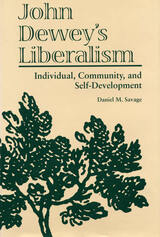 John Dewey's Liberalism: Individual, Community, and Self-Development
Daniel Savage
Southern Illinois University Press, 2001 John Dewey's classical pragmatism, Daniel M. Savage asserts, can be used to provide a self-development-based justification of liberal democracy that shows the current debate between liberal individualism and republican communitarianism to be based largely on a set of pseudoproblems. From Dewey's classical pragmatism, Savage derives a conception of individual autonomy that, while meeting all of the criteria for a conception of autonomy, does not, as the dominant Kantian variant does, require transcendence from any particular language community. The Deweyan conception of autonomy that Savage derived from classical pragmatism, in fact, requires that the individual be situated within a context of cultural beliefs. Savage argues that this particular conception of autonomy is necessary if one wants to conceive of life, as communitarians do, as a quest for the good life within a social context. Thus, Savage constructs a conception of autonomy that consists of a set of intellectual virtues, each of which can be understood, like Aristotle's moral virtues, as a mean between two extremes (or vices). The virtue of critical reflection is the mean between the vices of dogmatism on the one hand and philosophical skepticism on the other. The virtue of creative individuality is the mean between the opposing vices of conformity and eccentricity. Finally, the virtue of sociability is the mean between the extremes of docility and rebelliousness. The three virtues together provide a natural method of adapting to change. The method is natural because it is in accord with a continuous cycle of activity—tension/movement/harmony—that is generic to all living things, Dewey's method of adapting to change requires, in both the individual and in the community, the synthesis of integrating and differentiating forces.
John Dickson Carr: A Critical Study
S. T. Joshi
University of Wisconsin Press, 1990 John Dickson Carr is known as the master of the “locked-room” mystery—the “impossible crime.” But Carr also wrote short stories, radio plays, essays, introductions, and book reviews. S. T. Joshi has written the first full-length study of Carr’s entire work and pays particular attention to this author’s three best-known detectives: Henri Bencolin, Dr. Gideon Fell, and Sir Henry Merrivale.
 John Doe Chinaman: A Forgotten History of Chinese Life under American Racial Law
Beth Lew-Williams
Harvard University Press, 2025 A revelatory history of the laws that conditioned the everyday lives of Chinese people in the American West—and of those who negotiated, circumvented, and resisted discrimination.
Legal discrimination against Chinese people in the United States began in 1852, when California passed a tax on foreign gold miners that was explicitly designed to exploit Chinese labor. Over the next seventy years, officials in California, Oregon, Washington, and other western states instituted more than five thousand laws that marginalized and controlled their Chinese residents. Long before the Chinese Exclusion Act banned Chinese immigration, these laws constrained the activities and opportunities of Chinese people already living in the United States.
In this eye-opening account, Beth Lew-Williams describes a legal architecture redolent of Jim Crow but tailored specifically to people often referred to only as “John Doe Chinaman” or “Mary Chinaman” in official records. Enforced by police and tax collectors, but also by schoolteachers, missionaries, and neighbors, these laws granted the Chinese only limited access to American society, falling far short of equality or belonging. Cementing stereotypes of Chinese residents as criminals, invaders, and predators, they regulated everything from healthcare to education, property ownership, business formation, and kinship customs. Yet in the face of these limitations, Chinese communities reacted resourcefully. Many fought, evaded, and manipulated these laws, finding ways to maintain their prohibited traditions, resist unfair treatment in court, and insist on their political rights.
Drawing on dozens of archives across the US West, John Doe Chinaman reveals the depth of anti-Chinese discrimination beyond federal exclusion and tells the stories of those who refused to accept a conditional place in American life.
 John Doe No. 2 and the Dreamland Motel
Womack, Kenneth
Northern Illinois University Press, 2010
On April 19, 1995, a truck bomb exploded just outside of Oklahoma City’s Murrah Federal Building, killing 168 people. Within a matter of hours, the FBI launched the largest manhunt in U.S. history, identifying the suspects as Timothy James McVeigh and John Doe No. 2, a stocky twentysomething with a distinctive tattoo on his left arm. Eventually the FBI retracted the elusive mystery man as a bombing suspect altogether, proclaiming that McVeigh had acted alone and that John Doe No. 2 was the by-product of unreliable eyewitness testimony in the wake of the attack.
Womack recreates the events that led up to this fateful day from the perspective of John Doe No. 2—or JD, as he is referred to in the book. With his ironic and curiously detached persona, JD narrates—from a second-person point of view—his secret life with McVeigh, Terry Nichols, and others in America’s militia culture as McVeigh and JD crisscross the Midwest in McVeigh’s beloved Chevy Geo Spectrum.
John Doe No. 2 and the Dreamland Motel is the tragicomic account of McVeigh’s last desperate months of freedom, as he prepared to unleash one ofthe deadliest acts of domestic terrorism in the nation’s history. Womack’s novel traces one man’s downward spiral toward the act of evil that will brand his name in infamy and another’s desperate hope to save his friend’s soul before it’s too late.
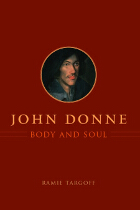 John Donne, Body and Soul
Ramie Targoff
University of Chicago Press, 2008 For centuries readers have struggled to fuse the seemingly scattered pieces of Donne’s works into a complete image of the poet and priest. In John Donne, Body and Soul, Ramie Targoff offers a way to read Donne as a writer who returned again and again to a single great subject, one that connected to his deepest intellectual and emotional concerns. Reappraising Donne’s oeuvre in pursuit of the struggles and commitments that connect his most disparate works, Targoff convincingly shows that Donne believed throughout his life in the mutual necessity of body and soul. In chapters that range from his earliest letters to his final sermon, Targoff reveals that Donne’s obsessive imagining of both the natural union and the inevitable division between body and soul is the most continuous and abiding subject of his writing. “Ramie Targoff achieves the rare feat of taking early modern theology seriously, and of explaining why it matters. Her book transforms how we think about Donne.”—Helen Cooper, University of Cambridge
John Donne's Christian Vocation
Robert S. Jackson
Northwestern University Press, 1970 John Donne’s poetry is often difficult and perplexing, even more so because it undergoes a shift away from secular topics after he converts and begins to lead a religious life. Robert S. Jackson’s John Donne’s Christian Vocation is one of the first studies that takes seriously the ways that Donne’s Christian vocation permeates all of Donne’s writings, not just those after his conversion, but even those prior to it. Jackson’s study remains significant today because the religion and literature movement has focused renewed attention on Donne and his writing, and numerous critics and scholars use John Donne’s Christian Vocation as a model for their own scholarship on Donne.
 John Donne’s Lyrics: The Eloquence of Action
Arnold Stein
University of Minnesota Press, 1962 John Donne's Lyrics was first published in 1962. Minnesota Archive Editions uses digital technology to make long-unavailable books once again accessible, and are published unaltered from the original University of Minnesota Press editions. Combining modern insight with historical perspective, Professor Stein offers a fresh interpretation of Donne's lyric poems. His method is cumulative; it includes cross references to the religious writing, analysis of individual poems, and their relationship to larger patterns which reflect Donne's poetic mind. Among the specific problems he deals with are those which concern metaphor, symbol, myth, wit, "fictions." "negative theology," consciousness-and-simplicity, "binary" and "ternary" form in poetry, meter and meaning, rationalism and affective language, the visual and the auditory. Professor Stein demonstrates that to gain insight into the integrity of Donne's poetic mind it is necessary to take seriously two propositions: that Donne is a poetic logician endowed with a talent and love for the unity of imaginative form; and that Donne's poetry, though it is not simple, nevertheless deeply and persistently engages important problems which concern "simplicity." In one of his sermons, Donne wrote: "The eloquence of inferiours is in words, the eloquence of superiours is in action." Professor Stein maintains that in his best poems Donne aspires to the eloquence of action and never to the eloquence of words. Although the study is focused on Donne's lyrics, the interpretation is based on a long study of all the poems and the prose and on background and foreground materials. In a postscript the author discusses Donne's "modern career."
John Donne's Physics
Elizabeth D. Harvey and Timothy M. Harrison
University of Chicago Press, 2024 A reimagining of Devotions upon Emergent Occasions as an original treatment of human life shaped by innovations in seventeenth-century science and medicine.
In 1624, poet and preacher John Donne published Devotions upon Emergent Occasions, a book that recorded his near-death experience during a deadly epidemic in London. Four hundred years later, in the aftermath of our own pandemic, Harvey and Harrison show how Devotions crystalizes the power, beauty, and enduring strangeness of Donne’s thinking. Arguing that Donne saw human life in light of emergent ideas in the study of nature (physics) and the study of the body (physick), John Donne’s Physics reveals Devotions as a culminating achievement, a radically new literary form that uses poetic techniques to depict Donne’s encounter with death in a world transformed by new discoveries and knowledge systems.
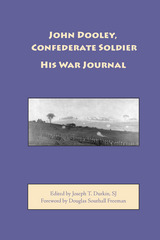 John Dooley, Confederate Soldier: His War Journal
John Dooley
University of Alabama Press, 2005 One of the best primary accounts of the Civil War by a Confederate. John Dooley was the youngest son of Irish immigrants to Richmond, Virginia, where his father prospered, and the family took a leading position among Richmond’s sizeable Irish community. Early in 1862, John left his studies at Georgetown University to serve in the First Virginia Infantry Regiment, in which his father John and brother James also served. John’s service took him to Second Manassas, South Mountain, Sharpsburg (Antietam), Fredericksburg, and Gettysburg; before that last battle, Dooley was elected a lieutenant. On the third day at Gettysburg, Dooley swept up the hill in Pickett’s charge, where he was shot through both legs and lay all night on the field, to be made a POW the next day. Held until February 27, 1865, Dooley made his way back south to arrive home very near the Confederacy’s final collapse. Dooley’s account is valuable for the content of his service and because most of the material came from his diary, with some interpolations (which are indicated as such) that he made shortly after the war’s end when his memory was still fresh. Dooley’s health seems to have been permanently compromised by his wounds; he entered a Roman Catholic seminary after the war and died in 1873 several months before his ordination was to take place.
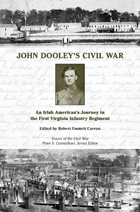 John Dooley's Civil War: An Irish American's Journey in the First Virginia Infantry Regiment
Robert Emmett Curran
University of Tennessee Press, 2011
Among the finer soldier-diarists of the Civil War, John Edward Dooley first came to the attention of readers when an edition of his wartime journal, edited by Joseph Durkin, was published in 1945. That book, John Dooley, Confederate Soldier, became a widely used resource for historians, who frequently tapped Dooley’s vivid accounts of Second Bull Run, Antietam, and Gettysburg, where he was wounded during Pickett’s Charge and subsequently captured.
As it happens, the 1945 edition is actually a much-truncated version of Dooley’s original journal that fails to capture the full scope of his wartime experience—the oscillating rhythm of life on the campaign trail, in camp, in Union prisons, and on parole. Nor does it recognize how Dooley, the son of a successful Irish-born Richmond businessman, used his reminiscences as a testament to the Lost Cause. John Dooley’s Civil War gives us, for the first time, a comprehensive version of Dooley’s “war notes,” which editor Robert Emmett Curran has reassembled from seven different manuscripts and meticulously annotated. The notes were created as diaries that recorded Dooley’s service as an officer in the famed First Virginia Regiment along with his twenty months as a prisoner of war. After the war, they were expanded and recast years later as Dooley, then studying for the Catholic priesthood, reflected on the war and its aftermath. As Curran points out, Dooley’s reworking of his writings was shaped in large part by his ethnic heritage and the connections he drew between the aspirations of the Irish and those of the white South.
In addition to the war notes, the book includes a prewar essay that Dooley wrote in defense of secession and an extended poem he penned in 1870 on what he perceived as the evils of Reconstruction. The result is a remarkable picture not only of how one articulate southerner endured the hardships of war and imprisonment, but also of how he positioned his own experience within the tragic myth of valor, sacrifice, and crushed dreams of independence that former Confederates fashioned in the postwar era.
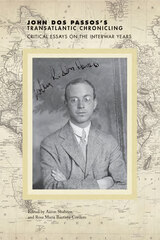 John Dos Passos's Transatlantic Chronicling: Critical Essays on the Interwar Years
Aaron Shaheen
University of Tennessee Press, 2022 “I never could keep the world properly divided into gods and demons for very long,” wrote John Dos Passos, whose predilection toward nuance and tolerance brought him to see himself as a “chronicler”: a writer who might portray political situations and characters but would not deliberately lead the reader to a predetermined conclusion. Privileging the tangible over the ideological, Dos Passos’s writing between the two World Wars reveals the enormous human costs of modern warfare and ensuing political upheavals.
This wide-ranging and engaging collection of essays explores the work of Dos Passos during a time that challenged writers to find new ways to understand and render the unfolding of history. Taking their foci from a variety of disciplines, including fashion, theater, and travel writing, the contributors extend the scholarship on Dos Passos beyond his best-known U.S.A. trilogy. Including scholars from both sides of the Atlantic, the volume takes on such topics as how writers should position their labor in relation to that of blue-collar workers and how Dos Passos’s views of Europe changed from fascination to disillusionment. Examinations of the Modernist’s Adventures of a Young Man, Manhattan Transfer, and “The Republic of Honest Men” increase our understanding of the work of a complicated figure in American literature, set against a backdrop of rapidly evolving technology, growing religious skepticism, and political turmoil in the wake of World War I.
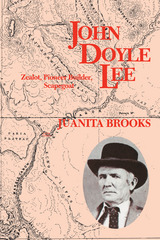 John Doyle Lee
Juanita Brooks
Utah State University Press, 1992 John D. Lee is most often remembered as the only man executed for his role in the infamous 1857 massacre by Mormons of a California-bound emigrant train at Mountain Meadows in southern Utah. This classic biography examines the circumstances and events which brought Lee to that end. It also, however, looks at the other dimensions of his active life, showing that he was a far more important and complex man than subsequent generations, eager for a dark symbol, have acknowledged. He was a leader in the Mormon colonization of southern Utah and northern Arizona. With the title Indian Farmer, he became his church's emissary to Indians in the area. During and prior to the Mormon migration west, he participated in and kept detailed accounts of the conflicts and other events in Missouri, Illinois, and along the trail. An early practitioner, and recorder, of the custom of plural marriage, he was the adopted son of Brigham Young and a close associate of other Mormon leaders. His occupations included builder, farmer, missionary, ferry operator, town founder, and faith leader. Using Lee's extensive diaries, bolstered by numerous supporting accounts, Juanita Brooks has not only written a thorough and objective portrait of one man's life, a life which would be worthy of study even if it were not controversial, she also has provided numerous insights into early Mormon society and culture. Anyone interested in Mormon polygamy, family life, leadership, relations with Indians, or other aspects of their frontier existence will find this a storehouse of information. This classic biography is now in its fourth Utah State University Press printing. It is unparalleled in providing a thorough and accurate account of John D. Lee's involvement in the tragic 1857 Mountain Meadows Massacre.
John Dryden: A List of Critical Studies, 1895-1948
Samuel Holt Monk
University of Minnesota Press, 1950
John Dryden was first published in 1950. Minnesota Archive Editions uses digital technology to make long-unavailable books once again accessible, and are published unaltered from the original University of Minnesota Press editions.
 John Dryden: A Survey and Bibliography of Critical Studies, 1895-1974
David J. Latt and Samuel Holt Monk
University of Minnesota Press, 1976
John Dryden was first published in 1976. Minnesota Archive Editions uses digital technology to make long-unavailable books once again accessible, and are published unaltered from the original University of Minnesota Press editions.
This annotated bibliography represents a comprehensive updating of Samuel Holt Monk's earlier work, also published by the University of Minnesota Press, John Dryden: A List of Critical Studies Published from 1895 to 1948 (out of print). Since the publication of that earlier bibliography, the number of studies devoted to Dryden has more than tripled, and thus this new bibliography is essential for scholars of Dryden or related aspects of seventeenth- and eighteenth-century English literature. This volume contains four times as many entries as the earlier volume, and there is an extensive introduction by Professor Latt which surveys the historical shifts in critical opinion of Dryden. The new volume incorporates all of the listings contained in the first one.
The entries include works that focus directly on Dryden, those that discuss Dryden's works in the context of other writers, and those that investigate material of general importance to Dryden studies. Dissertations from American, German, English, and French universities are included.
Complete bibliographic information is provided for virtually every entry. The listings are grouped in nine categories, and there is an additional section which covers festschriften and other collections of essays. Works of exceptional value and those which develop new points of view are so designated. The publishing history of each item is included along with the standard bibliographic information. The index includes topical as well as author entries.
John Duns Scotus 1265-1965
John K. Ryan
Catholic University of America Press, 2018 This volume was a cooperative effort of European, American and Canadian scholars which was published to commemorate the occasion of the seventh centennial of the bith of John Duns Scotus.
 John Dygon's Proportiones practicabiles secundum Gaffurium
New Critical Text, Translation, Annotations, and Indices by Theodor Dumitrescu
University of Illinois Press, 2006 A rare example of musical scholarship from the Tudor period, in translation and fully annotated John Dygon was the prior of St. Augustine’s monastery in Canterbury when Henry VIII boldly dissolved the English Catholic Church during the 1530s and reorganized it under royal control. Only a single copy of Dygon’s manuscript on music theory has survived, held by Trinity College, Cambridge. This volume will be the first publication of these two treatises, providing both a scholarly transcription and English translation. Dygon’s treatise provides a rare and important example of musical scholarship from the early Tudor period, demonstrating the status of music education at the time, the affiliations of English scholarship with music study in Europe, and the music that was actually performed in England. The treatises address questions of musical notation, especially regarding rhythmic proportions, as well as practical issues about performance. Theodor Dumitrescu’s introduction situates Dygon’s treatises within the larger history of European music, paying close attention to its borrowings from and adaptations of prior treatises.
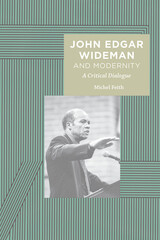 John Edgar Wideman and Modernity: A Critical Dialogue
Michel Feith
University of Tennessee Press, 2018 The career of writer John Edgar Wideman has been the sort of success story on which America prides itself. Coming from an inner-city African American neighborhood, he studied at the Universities of Pennsylvania and Oxford; published his first novel at age twenty-six; won two PEN/Faulkner Awards, as well as a MacArthur “genius grant”; and has held several top teaching posts. But profound tragedy has also marked his life: both his brother and son received life sentences for murder, and a nephew was killed at home after a bar fight. His life thus illustrates how the strictures of “race” temper American notions of freedom and opportunity.
Wideman’s engagement with race and identity has been nuanced and complex, taking the form of what Michel Feith sees as a critical dialogue with modernity–a moment in history which gave birth not only to the Enlightenment but also to American slavery and the conundrum of “race.” Feith argues that the key work in the Wideman oeuvre is The Cattle Killing (1996), his only “historical novel,” whose threads include the 1793 yellow fever epidemic in Philadelphia, the 1856–57 Cattle Killing prophecy, which wreaked havoc among the Xhosa tribe of South Africa, and the contemporary situation of black ghettos in the United States. Unfolding within the early days of the American Republic, the novel offers a window through which all of Wideman’s works and their central concerns—ghettoization, imprisonment, familial relationships, emancipation, and the diasporic sense of history—can be understood.
With clarity and theoretical sophistication, Feith offers provocative new readings of Wideman’s texts, from the “Homewood” books based on his youth in Pittsburgh to his haunting memoir Brothers and Keepers. In the “postmodern” era, Feith suggests, critics of modernity are not in short supply, but few have the depth, rigor, and thoughtfulness of John Edgar Wideman.
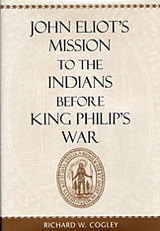 John Eliot’s Mission to the Indians before King Philip’s War
Richard W. Cogley
Harvard University Press, 1999 No previous work on John Eliot's mission to the Indians has told such a comprehensive and engaging story. Richard Cogley takes a dual approach: he delves deeply into Eliot's theological writings and describes the historical development of Eliot's missionary work. By relating the two, he presents fresh perspectives that challenge widely accepted assessments of the Puritan mission.
Cogley incorporates Eliot's eschatology into the history of the mission, takes into account the biographies of the proselytes (the "praying Indians") and the individual histories of the Christian Indian settlements (the "praying towns"), and corrects misperceptions about the mission's role in English expansion. He also addresses other interpretive problems in Eliot's mission, such as why the Puritans postponed their evangelizing mission until 1646, why Indians accepted or rejected the mission, and whether the mission played a role in causing King Philip's War.
This book makes signal contributions to New England history, Native American history, and religious studies.
John Endecott: A Biography
Lawrence Shaw Mayo
Harvard University Press At the hands of the household poets and of various historical writers. Governor John Endecott of the Colony of Massachusetts Bay has fared rather badly in the last hundred years, with the result that to many of us his name is synonymous with all that is forbidding in New England Puritanism. Yet his contemporaries thought so well of him that they elected him more often than any other man to the highest office in their commonwealth, and John Winthrop found in him both a devoted colleague and a sympathetic friend. The problem suggested by these contradictory views led Mr. Mayo to extensive research in this country and in England and to a thorough sifting of the biographical material collected by the Endecott family over a period of fifty years. The result is an accurate, unbiased portrait of the man.
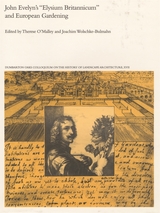 John Evelyn’s “Elysium Britannicum” and European Gardening
Therese O'Malley
Harvard University Press, 1998 John Evelyn (1620–1706), an English virtuoso and writer, was a pivotal figure in seventeenth-century intellectual life in England. He left an immensely rich literary heritage, which is of great significance for scholars interested in garden history and the histories of intellectual life and architecture.
Evelyn is perhaps best known for Sylva, a compilation of thoughts on practical estate management, gardening, and philosophy, and the first book published by the Royal Society in London. As one of the group of learned men who founded the Royal Society in 1660 to promote scientific research, discussion, and publications, John Evelyn was at the center of many of the vital intellectual currents of the time. “Elysium Britannicum,” Evelyn’s unpublished manuscript of almost a thousand pages of densely packed drafts, rewrites, and projects, was perhaps something of an enigma to his contemporaries, who nevertheless urged its publication. It remains for scholars today a treasure-trove of fascinating insights on Evelyn and his milieu.
The contributors to this volume approach Evelyn and his work from diverse disciplines, including architectural and intellectual history and the histories of science, agriculture, gardens, and literature. They present a rich picture of the “Elysium Britannicum” as one of the central documents of late European humanism.
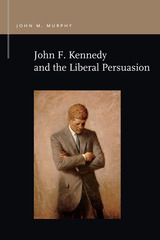 John F. Kennedy and the Liberal Persuasion
John M. Murphy
Michigan State University Press, 2019 The first serious study of his discourse in nearly a quarter century, John F. Kennedy and the Liberal Persuasion examines the major speeches of Kennedy’s presidency, from his famed but controversial inaugural address to his belated but powerful demand for civil rights. It argues that his eloquence flowed from his capacity to imagine anew the American liberal tradition—Kennedy insisted on the intrinsic moral worth of each person, and his language sought to make that ideal real in public life. This book focuses on that language and argues that presidential words matter. Kennedy’s legacy rests in no small part on his rhetoric, and here Murphy maintains that Kennedy’s words made him a most consequential president. By grounding the study of these speeches both in the texts themselves and in their broader linguistic and historical contexts, the book draws a new portrait of President Kennedy, one that not only recognizes his rhetorical artistry but also places him in the midst of public debates with antagonists and allies, including Dwight Eisenhower, Barry Goldwater, Richard Russell, James Baldwin, Martin Luther King Jr., and Robert Kennedy. Ultimately this book demonstrates how Kennedy’s liberal persuasion defined the era in which he lived and offers a powerful model for Americans today.
John Galsworthy: A Study in Continuity and Contrast
Natalie Croman
Harvard University Press As “a study in continuity and contrast” this essay reconciles the indignant and tragic Galsworthy of The Man of Property with the ironically humorous Galsworthy of the more recent novels, and at the same time points out the evolutionary process by which his later mood and manner grew out of the earlier. Natalie Croman also succeeds admirably in the difficult task of defining the later Galsworthy in terms of the earlier philosopher. In connection with this pamphlet we would call attention to earlier issues of the series, which forms a noteworthy element in the fostering of undergraduate scholarship and literary appreciation.
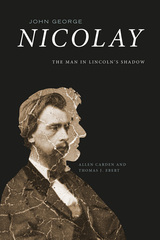 John George Nicolay: The Man in Lincoln's Shadow
Allen Carden
University of Tennessee Press, 2019 "John George Nicolay played a pivotal role in Abraham Lincoln’s presidency and the preservation of his legacy. Whereas Lincoln’s other secretary, John Hay, has received extensive attention, Nicolay, until now, has remained somewhat hidden. In this important work, Allen Carden and Thomas J. Ebert bring Nicolay to life and examine the role he played in Lincoln’s administration and as coauthor with Hay of a massive Lincoln biography. The result is a work that should be read by all students of Abraham Lincoln." —Louis P. Masur, Distinguished Professor of American Studies and History and author of Lincoln’s Last Speech and Lincoln’s Hundred Days
Apart from the president’s family, arguably no one was closer to Abraham Lincoln during his tenure in the White House than John George Nicolay. A German immigrant with a keen intelligence and tenacious work ethic, Nicolay (1832-1901) served as Lincoln’s personal secretary and, owing to the extraordinary challenges facing the White House, became in effect its first chief of staff. His subsequent role as lead researcher and coauthor of a monumental ten-volume biography of the sixteenth president made him the progenitor of Lincoln scholarship.
This study represents the first scholarly biography of this self-effacing man so long overshadowed by Lincoln. Drawing on extensive research in the Nicolay Papers, Allen Carden and Thomas Ebert trace Nicolay’s childhood arrival in America to his involvement in journalism and state government in Illinois. Acquainted with Lincoln in Springfield, Nicolay became a trusted assistant selected by Lincoln to be his private secretary. Intensely devoted to the president, he kept the White House running smoothly and allowed Lincoln to focus on the top priorities. After Lincoln’s death, Nicolay’s greatest achievement was his co-authorship, with his White House assistant, John Hay, of the first thoroughly documented account of Lincoln’s life and administration, a work still consulted by historians.
“Nicolay,” Carden and Ebert write, “did not make Lincoln great, but he helped make it possible for Lincoln to achieve greatness.” An essential addition to Lincoln studies, this edifying volume reveals not only how Nicolay served the Great Emancipator during his administration but also how he strove to preserve and shape Lincoln’s legacy for generations to come.
 John Gorham Palfrey and the New England Conscience
Frank Otto Gatell
Harvard University Press The New England of his day regarded John Gorham Palfrey's life as blameless and exemplary, a nineteenth-century "monument to the Puritan ideal of rectitude." Yet he himself once called it "his personal tragicomedy." At least, it was diverse, for Palfrey had been historian, Harvard educator, Unitarian minister, Massachusetts politician, editor of the North American Review, and crusader against slavery, and himself an emancipator. During his lifetime, from 1796 to 1881, Palfrey participated, sometimes reluctantly, in revolutionary changes in the political, economic, and intellectual climate of New England.
In his stormy political career, Palfrey not only was Massachusetts Secretary of State, member of Congress, and Postmaster of Boston, but also played a key role in the formation of the Free Soil Party. When the Whigs, in the name of national unity and compromise, seemed to ignore the moral necessities of the slavery question, he joined with such men as Charles Francis Adams, Charles Sumner and Richard Henry Dana, Jr., to reaffirm traditional moral values. From this struggle, Palfrey emerged a political loser. Hampered by inflexibility, he laterretreated to his study to write his massive history of New England, nursing his disappointment and cherishing his sense of rectitude. We are left with the image of a man whose achievements were substantial, perhaps because he insisted upon making his life a Bay State morality play.
For this biography of Palfrey, Gatell has used papers of Palfrey's contemporaries and of the Palfrey family manuscripts, among them an unpublished autobiography, itself a search for meaning in a long and perplexing life.
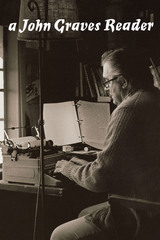 A John Graves Reader
By John Graves
University of Texas Press, 1996 Since the publication of his haunting, elegiac Goodbye to a River in 1960, John Graves has become one of Texas' most beloved writers, whose circle of loyal readers extends far beyond the borders of his home state. A "regional" writer only by virtue of his gift for vividly evoking the spirit of the land and its people, Mr. Graves is also admired for the unerring craftsmanship of his prose. Now the University of Texas Press takes great pleasure in publishing A John Graves Reader to introduce his writing to a new generation of readers. This anthology contains selections from Goodbye to a River and his two other major books, Hard Scrabble (1974) and From a Limestone Ledge (1980). It also includes short stories and essays, some of which have never been published before and others that Mr. Graves has reworked especially for this book. All of the pieces in this anthology were chosen by Mr. Graves himself to be, in his words, "representative of my writing, for better or worse." They reflect various stages of his life and writing career—youth in Texas, World War II, sojourns in New York, Mexico, and Europe during the 1940s and 1950s, and his final return to Texas as home and as subject matter—as well as recurring themes in his writing, from the land and the people to fishing, traveling, and the enduring friendships that have enriched his life. For those who have never read John Graves, this anthology will be the perfect introduction to the range and excellence of his work. At the same time, those who have read him faithfully for many years will find new pieces to enjoy, as well as old favorites to savor once again.
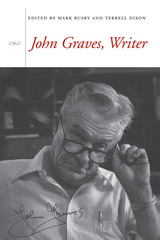 John Graves, Writer
Edited by Mark Busby and Terrell Dixon
University of Texas Press, 2007 Runner-up, Violet Crown Award, Writer's League of Texas, 2008 Renowned for Goodbye to a River, his now-classic meditation on the natural and human history of Texas, as well as for his masterful ability as a prose stylist, John Graves has become the dean of Texas letters for a legion of admiring readers and fellow writers. Yet apart from his own largely autobiographical works, including Hard Scrabble, From a Limestone Ledge, and Myself and Strangers, surprisingly little has been written about Graves's life or his work. John Graves, Writer seeks to fill that gap with interviews, appreciations, and critical essays that offer many new insights into the man himself, as well as the themes and concerns that animate his writing. The volume opens with the transcript of a revealing, often humorous symposium session in which Graves responds to comments and stories from his old friend Sam Hynes, his former student and contemporary art critic Dave Hickey, and co-editor Mark Busby. Following this is a more formal interview of Graves by Dave Hamrick, who draws the author out on issues relating to each of his major works. John Graves's friends Bill Wittliff, Rick Bass, Bill Broyles, John R. Erickson, Bill Harvey, and James Ward Lee speak to the powerful influence that Graves has had on fellow writers. In addition to these personal observations, nine scholars analyze essential aspects of Graves's work. These include the place of Goodbye to a River within environmental literature and how its writing was a rite of passage for its author; Graves as a prose stylist and a literary, rather than polemical, writer; the ways in which Graves's major works present different aspects of a single narrative about our relationship to the land; the question of gender in Graves's work; and Graves's sometimes contentious relationship with Texas Monthly magazine. Mark Busby introduces the volume with a critical overview of Graves's life and work, and Don Graham concludes it with a discussion of Graves's reception and literary reputation. A bibliography of works by and about Graves rounds out the book. John Graves, Writer confirms Graves's stature not only within Texas letters, but also within American environmental writing, where Graves deserves to be more widely known.
 John Greenleaf Whittier’s Poetry: An Appraisal and a Selection
Robert Penn Warren
University of Minnesota Press, 1971
John Greenleaf Whittier's Poetry was first published in 1971. Minnesota Archive Editions uses digital technology to make long-unavailable books once again accessible, and are published unaltered from the original University of Minnesota Press editions.
In this volume Robert Warren Penn, the noted critic, poet, and novelist, provides a major new appraisal of the once enormously popular New England port, John Greenleaf Whittier, along with his selection of 36 of Whittier's poems. Through Warren's perceptive and illuminating discussion, the significance of Whittier as a writer for our time becomes clear. In his introduction Warren shows that Whittier's deep commitment to his fellowman, especially his devotion to the cause of abolition, profoundly influenced his writing. In his estimate of Whittier's place in literature, Warren invokes the questions What does the past mean to an American? and in this context he compares Whittier with Cooper, Hawthorne, Melville, and Faulkner. He finds that Whittier's "star belongs in their constellation. If it is less commanding than any of theirs it yet shines with a clear and authentic light."
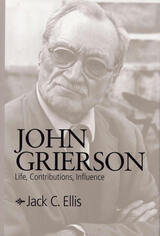 John Grierson: Life, Contributions, Influence
Jack C. Ellis
Southern Illinois University Press, 2000
More than any other person, Jack C. Ellis notes, John Grierson, a Scot, was responsible for the documentary film as it has developed in English-speaking countries.
While in the United States in the 1920s, Grierson first applied the term documentary to Robert Flaherty's Moana. In 1927, Grierson returned to Britain, where he was hired to promote the marketing of products of the British Empire. The first practical application of Grierson’s theory of documentary film was Drifters, a 1929 short feature about herring fishing in the North Sea. That success led Grierson to establish the Empire Marketing Board Film Unit (later the General Post Office Film Unit).
In 1939, Grierson moved to Canada, leaving behind a legacy of some sixty British filmmakers who spread his ideas and techniques to other countries. In Canada, he progressed beyond national concerns to global problems. The National Film Board of Canada stands as the largest and most impressive monument to Grierson's concepts and actions in regard to the use of film by governments in communicating with citizens.
Ellis examines Grierson's accomplishments in detail, probing the complexities of Grierson's motivations and personality. His subject, a true titan in the world of documentary film, was the first filmmaker to use public and private institutional sponsorship—not the box office—to pay for his films. He also employed nontraditional distribution techniques, going outside the movie theaters to reach audiences in schools and factories, union halls, and church basements. Essentially, Grierson created documentary film and established an audience for it.
 John H. Burdakin and the Grand Trunk Western Railroad
Mary Sharp
Michigan State University Press, 2016 John H. Burdakin and the Grand Trunk Western Railroad provides a look at the principles and personal values that guided John H. Burdakin through a long, successful career as a top manager at three railroads—the Pennsylvania, the Penn Central, and finally the Grand Trunk Western, where he was president of the regional carrier from 1974 to 1986. The book, written from interviews with Burdakin before his death in 2014, gives real-life examples of how Burdakin’s management principles and personal qualities helped him solve labor- management problems, update railroad technology, protect worker safety, and improve employee morale while managing a four thousand–person workforce. It introduces colorful characters who were involved in American railroads, as well as the serious, life-threatening issues that confronted railroads in the last half of the twentieth century in America. This book will provide insights for managers of any business as well as for those seeking to balance a successful career and a rewarding home life.
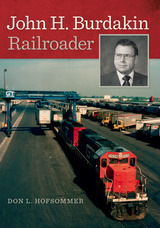 John H. Burdakin: Railroader
Don L. Hofsommer
Michigan State University Press, 2015 Genuinely talented and successful managers in any field—business, government, military, academia—are scarce. John Howard Burdakin was a happy exception to the norm. This engaging biography examines Burdakin’s life in the railroad industry—at Pennsylvania Railroad, Penn Central, and finally at Grand Trunk Corporation—during a tumultuous time in the transportation business and underscores his core principles and how he employed them in the management of people and property. Some contemporary observers may consider Burdakin’s often conservative style as quite out of date, but a more sober assessment reveals that his approach has utility in any time and in any field. An excellent resource for leadership professionals, this study focuses on Burdakin’s career in management, ever stressing his foundational convictions—how he came by them, how he employed those principles as a manager, and how they were understood by those who worked for him or with him. Through teamwork, trust, hard work, honesty, diligence, and integrity, Burdakin would become respected as one of the railroad industry’s brightest guiding lights.
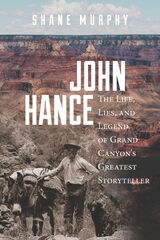 John Hance: The Life, Lies, and Legend of Grand Canyon's Greatest Storyteller
Shane Murphy
University of Utah Press, 2020 A legend in his own lifetime, John Hance (1837–1919) was synonymous with early Grand Canyon tourism. Between the late 1880s and early 1900s, to say “John Hance” was to say “Grand Canyon.” Hance was well known to travelers and visiting dignitaries alike, men such as William “Buffalo Bill” Cody and Theodore Roosevelt, the president who affectionately referred to him as “the greatest liar on earth.” It was said that Hance tried to jump the canyon on his horse Darby only to turn back when he was halfway over and realized he would never make it across. The truth behind Hance’s life is remarkable even without embellishment. In this book, Shane Murphy chronicles Hance’s childhood in Tennessee and Missouri, his service in the Confederacy during the Civil War, his time in Union prisons as a POW, and his later adventures with the Hickok brothers crossing the plains. Settling in Arizona’s fruitful Verde Valley, Hance farmed and filled military contracts before taking up residence as Grand Canyon’s first permanent Euro-American settler, trail builder, guide, and renowned storyteller. Hance left no correspondence, personal memoirs, or other writings. Only informal portraits from magazines and newspaper accounts remain. Murphy investigated assessors’ rolls, rare mercantile ledgers, and mining claims to create a full and compelling narrative of a man who was once an icon of the American West and should be remembered as the founding father of Grand Canyon tourism.
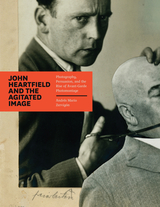 John Heartfield and the Agitated Image: Photography, Persuasion, and the Rise of Avant-Garde Photomontage
Andrés Mario Zervigón
University of Chicago Press, 2012 Working in Germany between the two world wars, John Heartfield (born Helmut Herzfeld, 1891–1968) developed an innovative method of appropriating and reusing photographs to powerful political effect. As a pioneer of modern photomontage, he sliced up mass media photos with his iconic scissors and then reassembled the fragments into compositions that utterly transformed the meaning of the originals. In John Heartfield and the Agitated Image, Andrés Mario Zervigón explores this crucial period in the life and work of a brilliant, radical artist whose desire to disclose the truth obscured by the mainstream press and imperial propaganda made him a de facto prosecutor of Germany’s visual culture. Zervigón charts the evolution of Heartfield’s photomontage from an act of antiwar resistance into a formalized and widely disseminated political art in the Weimar Republic. Appearing on everything from campaign posters to book covers, the photomonteur’s notorious pictures challenged well-worn assumption and correspondingly walked a dangerous tightrope over the political, social, and cultural cauldron that was interwar Germany. Zervigón explains how Heartfield’s engagement with montage arose from a broadly-shared dissatisfaction with photography’s capacity to represent the modern world. The result was likely the most important combination of avant-garde art and politics in the twentieth century.
A rare look at Heartfield’s early and middle years as an artist and designer, this book provides a new understanding of photography’s role at this critical juncture in history.
 John Henry Newman and Joseph Ratzinger: A Theological Encounter
Emery de Gaal
Catholic University of America Press, 2024 This book brings the thought of John Henry Newman into conversation with that of Joseph Ratzinger/Benedict XVI on a number of crucial theological themes. The book begins with a programmatic essay by Tracey Rowland connecting Newman’s approach with that of Ratzinger’s doktorvater Gottlieb Söhngen, along seven instructive paths. The book then delves into central themes of both Newman’s and Ratzinger’s thought, with essays that treat dogmatic development, the relationship of faith and reason, biblical inspiration, mystery, conscience, attentiveness to the “signs of the times,” interculturality and revelation, the Church as the Mystical Body, ecclesial authority, the relationship of faith and natural science, and deification. The essays in the volume come from many of the world’s leading Newman and Ratzinger scholars, with Ratzinger being represented by such experts as Rowland, Emery de Gaál, Aaron Pidel, SJ, Jacob Phillips, Matthew Ramage, and Jeremy Pilch; and Newman by such experts as Frederick D. Aquino, Andrew Meszaros, Marial Corona, Ryan Marr, and Elizabeth A. Huddleston. The Introduction briefly sets the scene for the encounter by describing the German reception of Newman during Ratzinger’s youth in comparison with the much less robust situation in German Newman scholarship today. It is the hope of the editors that this theological encounter will serve to promote and advance both Newman studies and Ratzinger studies in English- and German-speaking lands today.
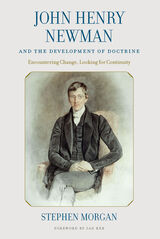 John Henry Newman and the Development of Doctrine: Encountering Change, Looking for Continuity
Stephen Morgan
Catholic University of America Press, 2022 John Henry Newman and the Development of Doctrine provides an analysis of the attempts by John Henry Newman to account for the historical reality of doctrinal change within Christianity in the light of his lasting conviction that the idea of Christianity is fixed by reference to the dogmatic content of the deposit of faith. It argues that Newman proposed a series of hypotheses to account for the apparent contradiction between change and continuity, that this series begins much earlier than is generally recognized and that the final hypothesis he was to propose, contained in An Essay on the Development of Christian Doctrine, provides a methodology of lasting theological value and contemporary relevance.
Stephen Morgan establishes the centrality of the problem of change and continuity in theology, to Newman's theological work as an Anglican, its part in his conversion to Catholicism and its contemporary relevance to Catholic theology. It also surveys the major secondary literature relating to the question, with particular reference to those works published within the last fifty years. Additionally, Morgan considers the legacy of the Essay as a tool in Newman’s theology and in the work of later theologians, finally suggesting that it may offer a useful methodological contribution to the contemporary Catholic debate about hermeneutical approaches to the Second Vatican Council and post-conciliar developments in doctrine.
 John Henry Newman on Truth and its Counterfeits: A Guide for Our Times
Reinhard Hutter
Catholic University of America Press, 2020 Reinhard Hütter’s main thesis in this third volume of the Sacra Doctrina series is that John Henry Newman, in his own context of the nineteenth century, a century far from being a foreign one to our own, faced the same challenges as we do today; the problems then and now differ in degree, not in kind. Hence, Newman's engagement with these problems offers us a prescient and indeed prophetic diagnosis of what these problems or errors, if not corrected, will lead to—consequences which have more or less come to pass—and, furthermore, an alternative way which is at once thoroughly Catholic and holds contemporary relevance.
The introduction offers a survey of Newman’s life and works and each of the subsequent four chapters addresses one significant aspect of Christianity that is not only contested or rejected by secular unbelief, but also has a counterfeit for which not only Christians, but even Catholics have fallen. The counterfeit of conscience is the “conscience” of the sovereign subject (Ch. 1); the counterfeit of faith is the “faith” of one who does not submit to the living authority through which God communicates but rather adheres to the principle of private judgment in matters of revealed religion(Ch.2); the counterfeit of doctrinal development is twofold: (i) paying lip service to development while only selectively accepting its consequences on the grounds of a specious antiquarianism and (ii) invoking development theory to justify all sorts of contemporary changes according to the present Zeitgeist (Ch. 3). Finally, the counterfeit of the university are all those “universities” whose end is not to educate and thereby to perfect the intellect, but rather to feed more efficiently the empire of desire that is informed by the techno-consumerism of today (Ch. 4). The book concludes with an epilogue on Hütter’s journey to Catholicism.
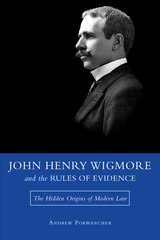 John Henry Wigmore and the Rules of Evidence: The Hidden Origins of Modern Law
Andrew Porwancher
University of Missouri Press, 2024 Honorable Mention, 2017 Scribes Book Award, The American Society of Legal Writers
At the dawn of the twentieth century, the United States was reeling from the effects of rapid urbanization and industrialization. Time-honored verities proved obsolete, and intellectuals in all fields sought ways to make sense of an increasingly unfamiliar reality. The legal system in particular began to buckle under the weight of its anachronism. In the midst of this crisis, John Henry Wigmore, dean of the Northwestern University School of Law, single-handedly modernized the jury trial with his 1904-5 Treatise onevidence, an encyclopedic work that dominated the conduct of trials. In so doing, he inspired generations of progressive jurists—among them Oliver Wendell Holmes, Jr., Benjamin Cardozo, and Felix Frankfurter—to reshape American law to meet the demands of a new era. Yet Wigmore’s role as a prophet of modernity has slipped into obscurity. This book provides a radical reappraisal of his place in the birth of modern legal thought.
John Heyl Vincent's Reminiscences: Autobiographical Writings of the Founding Superintendent of Chautauqua
Timothy S. Binkley
Bridwell Press, 2024 Chautauqua Institution co-founder Rev. John Heyl Vincent was a prolific writer on religion, education, and history. Among Vincent’s numerous published works were a few autobiographical writings. These essays describing family and personal history were forgotten soon after Vincent's death in 1920. More than a century later, thirty-three of his personal narratives have been gathered into a single volume. John Heyl Vincent’s Reminiscences invites readers to learn directly from Bishop Vincent about the experiences that shaped his life, his convictions, and the Chautauqua idea.
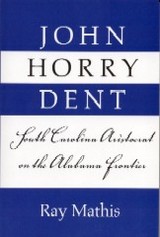 John Horry Dent: South Carolina Aristocrat On Alabama Frontier
Ray Mathis
University of Alabama Press, 1979 Explores the world of this wealthy planter and landholder
Jonah Horry Dent was born on 5 August 1815 in Newport, Rhode Island, the son of John Herbert Dent and Elizabeth Anne Horry Dent. Dent grew up in Charleston, South Carolina, and spent summers with his family on a plantation in Colleton County, South Carolina. When he was still a young child, his name was changed from “Jonah” to “John” when an older brother, named John, died, leaving little Jonah as the oldest living son. He was known as John Horry Dent the rest of his life.
Dent married Mary Elizabeth Morrison in 1835 and moved to Barbour County, Alabama, in 1836. He purchased 360 acres of land on Cowikee Creek, paying $15 an acre, and named the new plantation “Good Hope.” Dent amassed a good fortune but lost most of it after the Civil War when slavery was abolished and his slaves became freemen. In 1866 he sold his properties in Barbour County and moved to Cave Springs, Floyd County, Georgia.
Dent kept detailed records about his crops and properties until very late in life. He died in Cave Springs on 17 May 1892.
 John, Jesus, and History, Volume 1: Critical Appraisals of Critical Views
Paul N. Anderson
SBL Press, 2007 Over the last two centuries, many scholars have considered the Gospel of John off-limits for all quests for the historical Jesus. That stance, however, creates a new set of problems that need to be addressed thoughtfully. The essays in this book, reflecting the ongoing deliberations of an international group of Johannine and Jesus scholars, critically assess two primary assumptions of the prevalent view: the dehistoricization of John and the de-Johannification of Jesus. The approaches taken here are diverse, including cognitive-critical developments of Johannine memory, distinctive characteristics of the Johannine witness, new historicism, Johannine-Synoptic relations, and fresh analyses of Johannine traditional development. In addition to offering state-of-the-art reviews of Johannine studies and Jesus studies, this volume draws together an emerging consensus that sees the Gospel of John as an autonomous tradition with its own perspective, in dialogue with other traditions. Through this challenging of critical and traditional assumptions alike, new approaches to John’s age-old riddles emerge, and the ground is cleared for new and creative ways forward.
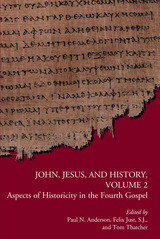 John, Jesus, and History, Volume 2: Aspects of Historicity in the Fourth Gospel
Paul N. Anderson
SBL Press, 2009 This groundbreaking volume draws together an international group of leading biblical scholars to consider one of the most controversial religious topics in the modern era: Is the Gospel of John—the most theological and distinctive among the four canonical Gospels—historical or not? If not, why does John alone among the Gospels claim eyewitness connections to Jesus? If so, why is so much of John’s material unique to John? Using various methodologies and addressing key historical issues in John, these essays advance the critical inquiry into Gospel historiography and John’s place within it, leading to an impressive consensus and convergences along the way. The contributors are Paul N. Anderson; Mark Appold; Richard Bauckham; Helen K. Bond; Richard A. Burridge; James H. Charlesworth; Jaime Clark-Soles; Mary Coloe; R. Alan Culpepper; Craig A. Evans; Sean Freyne; Jeffrey Paul Garcia; Brian D. Johnson; Peter J. Judge; Felix Just, S.J.; Craig S. Keener; Edward W. Klink III; Craig R. Koester; Michael Labahn; Mark A. Matson; James F. McGrath; Susan Miller; Gail R. O’Day; Bas van Os; Tom Thatcher; Derek M. H. Tovey; Urban C. von Wahlde; and Ben Witherington III.
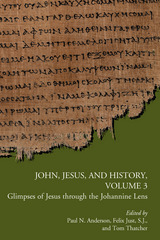 John, Jesus, and History, Volume 3: Glimpses of Jesus Through the Johannine Lens
Paul N. Anderson
SBL Press, 2016 A critical analysis of the historicity of the Gospel of John
Since it began in 2002, the John, Jesus, and History Project has assessed critically the modern disparaging of John's historicity and has found this bias wanting. In this third volume, an international group of experts demonstrate over two dozen ways in which John contributes to an enhanced historical understanding of Jesus and his ministry. This volume does not simply argue for a more inclusive quest for Jesus—one that embraces John instead of programmatically excluding it. It shows that such a quest has already indeed begun. Contributors include Paul N. Anderson, Jo-Ann A. Brant, Peder Borgen, Gary M. Burge, Warren Carter, R. Alan Culpepper, James D. G. Dunn, Robert T. Fortna, Jörg Frey, Steven A. Graham, Colin J. Humphreys, Craig Keener, Andreas Köstenberger, Tim Ling, William Loader, Linda McKinnish Bridges, James S. McLaren, Annette Merz, Wendy E. S. North, Benjamin E. Reynolds, Udo Schnelle, Donald Senior, C.P., Tom Thatcher, Michael Theobald, Jan van der Watt, Robert Webb, Stephen Witetscheck, and Jean Zumstein.
Features
- A state-of-the-art analysis of John’s contributions to the quest for the historical Jesus, including evaluative responses by leading Jesus scholars
- •An overview of paradigm shifts in Jesus scholarship and recent approaches to the Johannine riddles
- Detailed charts that illuminates John's similarities and differences form the Synoptic Gospels as well as the gospel's contributions to the historical Jesus research
 John, Jesus, and History, Volume 4: Jesus Remembered in the Johannine Situation
Paul N. Anderson
SBL Press, 2024 John, Jesus, and History, Volume 4: Jesus Remembered in the Johannine Situation addresses the narrative development of the Johannine corpus over as many as seven decades. Contributors connect how Jesus is presented in the Fourth Gospel to how the memory of his ministry is developed in Palestine during the earliest period (30–70 CE), in Asia Minor in the later first century (70–100 CE), and in the main and alternative streams of post-Johannine early Christianity (100 CE and later). Contributors include Paul N. Anderson, Harold W. Attridge, Giovanni Bazzana, Jonathan Bernier, Sherri Brown, Rex D. Butler, Andrew J. Byers, Stephen C. Carlson, Warren Carter, Amber M. Dillon, Jonathan A. Draper, Musa W. Dube, Charles E. Hill, Karen L. King, Peter T. Lanfer, Kasper Bro Larsen, Ian N. Mills, Alicia D. Myers, Reinhard Pummer, Tuomas Rasimus, David Rensberger, Clare K. Rothschild, Geoffrey Smith, Travis D. Trost, Meredith J. C. Warren, Kenneth L. Waters Sr., and Lorne R. Zelyck. The collection pushes Johannine, Jesus, and early Christian history studies in new directions, raising possibilities for future research.
 John Jewel and the Problem of Doctrinal Authority
W. M. Southgate
Harvard University Press John Jewel, Bishop of Salisbury, was, after Archbishop Parker, the most important English churchman in the decisive Elizabethan era. His organizational work and voluminous doctrinal writings contributed largely to the stabilization of the Anglican Church in the early years of Elizabeth's reign. Among the most effective apologists in an age noted for them, an eminent humanist and patristic scholar, Bishop jewel brought the spirit of the new enlightenment to bear on the problem of authority which naturally arose after the Reformation's initial years of rupture and polemics.
A thorough knowledge of Christian tradition and scriptural interpretation enabled Jewel to find a solution that avoided authoritarianism on the one hand and its opposite extreme of total dependence on individual inspiration on the other. The English Church of his time, strengthened by this solid basis for a continuing via media and by the brilliance of Bishop jewel's exposition of it, took cognizance of its own identity, and the Establishment emerged a reality.
A later generation of Anglican apologists, faced with the challenge of Puritanism, also leaned heavily on the theories Jewel developed. This study of his work and character thus holds a key to the understanding of several of the most important ideas and institutions to evolve during these formative periods of modern civilization.
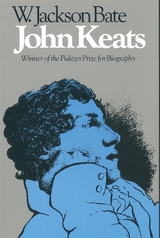 John Keats
Walter Jackson Bate
Harvard University Press, 1991 The life of Keats provides a unique opportunity for the study of literary greatness and of what permits or encourages its development. Its interest is deeply human and moral, in the most capacious sense of the words. In this authoritative biography—the first full-length life of Keats in almost forty years—the man and the poet are portrayed with rare insight and sympathy. In spite of a scarcity of factual data for his early years, the materials for Keats’s life are nevertheless unusually full. Since most of his early poetry has survived, his artistic development can be observed more closely than is possible with most writers; and there are times during the period of his greatest creativity when his personal as well as his artistic life can be followed week by week.
The development of Keats’s poetic craftsmanship proceeds simultaneously with the steady growth of qualities of mind and character. Walter Jackson Bate has been concerned to show the organic relationship between the poet’s art and his larger, more broadly humane development. Keats’s great personal appeal—his spontaneity, vigor, playfulness, and affection—are movingly recreated; at the same time, his valiant attempt to solve the problem faced by all modern poets when they attempt to achieve originality and amplitude in the presence of their great artistic heritage is perceptively presented.
In discussing this matter, Mr. Bate says, “The pressure of this anxiety and the variety of reactions to it constitute one of the great unexplored factors in the history of the arts since 1750. And in no major poet, near the beginning of the modern era, is this problem met more directly than it is in Keats. The way in which Keats was somehow able, after the age of twenty-two, to confront this dilemma, and to transcend it, has fascinated every major poet who has used the English language since Keats’s death and also every major critic since the Victorian era.”
Mr. Bate has availed himself of all new biographical materials, published and unpublished, and has used them selectively and without ostentation, concentrating on the things that were meaningful to Keats. Similarly, his discussions of the poetry are not buried beneath the controversies of previous critics. He approaches the poems freshly and directly, showing their relation to Keats’s experience and emotions, to premises and values already explored in the biographical narrative. The result is a book of many dimensions, not a restricted critical or biographical study but a fully integrated whole.
John Keats
Woof, Robert
Rutgers University Press, 1999 John Keats is one of the best-loved, admired, and most frequently studied Romantic poets, though he wrote only three volumes of poetry in his short life. This extraordinary biography looks at how Keats developed as a poet against the backdrop of the major events of his life. John Keats follows the poet through intense family ties and friendships, a medical apprenticeship and subsequent decision to pursue poetry, participation in the literary circles of London, travels within Britain, illness, and finally, death from tuberculosis at age 25. A vivid and authoritative introduction to Keats's remarkable life, John Keats is filled with photographs of landscapes and cityscapes from his life, portraits of the poet and his family, evocative paintings, and manuscripts of his works and letters.
 John Keats: Poetry Manuscripts at Harvard: A Facsimile Edition, With an Essay on the Manuscripts by Helen Vendler
John Keats
Harvard University Press, 1990 After more than a century of study, we know more about John Keats than we do about most writers of the past, but we still cannot fully grasp the magical processes by which he created some of the most celebrated poems in all of English literature. This volume, containing 140 photographs of Keats’s own manuscripts, offers the most concrete evidence we have of the way in which his thoughts and feelings were transmuted into art.
The rough first drafts in particular are full of information about what occurred, if not in Keats’s mind, at least on paper when he had pen in hand: the headlong rush of ideas coming so fast that he had no time to punctuate or even form the letters of his words; the stumbling places where he had to begin again several times before the words resumed their flow; the efforts to integrate story, character, and theme with the formal requirements of rhyme and meter. Each revision teaches the inquiring reader something about Keats’s poetic practice.
Several of the manuscripts are unique authoritative sources, while others constitute our best texts among multiple existing versions. They reveal much about the maturation of the poet’s creativity during four years of his brief life, between “On Receiving a Curious Shell” (1815) and “To Autumn” (1819). Above all, they show us what is lost when penmanship yields to the printed page: what Helen Vendler, in her insightful essay on the manuscripts, calls “the living hand of Keats.” These sharply reproduced facsimiles provide compelling visual evidence of a mortal author in the act of composing immortal works.
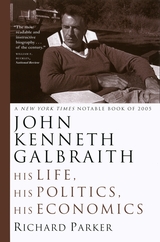 John Kenneth Galbraith: His Life, His Politics, His Economics
Richard Parker
University of Chicago Press, 2006 John Kenneth Galbraith (1908-2006) was one of America’s most famous economists for good reason. From his acerbic analysis of America’s “private wealth and public squalor” to his denunciation of the wars in Vietnam and Iraq, Galbraith consistently challenged “conventional wisdom” (a phrase he coined). He did so as a witty commentator on America’s political follies and as a versatile author of bestselling books—such as The Affluent Society and The New Industrial State—that warn of the dangers of deregulated markets, corporate greed, and inattention to the costs of our military power. Here, in the first full-length biography of Galbraith and his times, Richard Parker provides not only a nuanced portrait of this extraordinary man, but also an important reinterpretation of twentieth-century public policy and economic practices. “Whatever you may think of his ideas, John Kenneth Galbraith has led an extraordinary life. . . . Doing justice to this life story requires an outsize biography, one that not only tells Mr. Galbraith’s tale but sets it on the broader canvas of America’s political and economic evolution. And Richard Parker’s book does just that.”—Economist “Parker’s book is more than a chronicle of Galbraith’s life; it’s a history of American politics and policy from FDR through George W. Bush. . . . It will make readers more economically and politically aware.”—USA Today “The most readable and instructive biography of the century.”—William F. Buckley, National Review “The story of this man’s life and work is wonderfully rendered in this magnum opus, and offers an antidote to the public ennui, economic cruelty, and government malfeasance that poison life in America today.”—James Carroll, Boston Globe
John L. Lewis: A Biography
Melvyn Dubofsky and Warren Van Tine
University of Illinois Press, 1986 John L. Lewis (1880-1969), who ruled the United Mine Workers for four decades beginning in 1919, defied presidents, challenged Congress, and kept American political life in an uproar. Drawing upon previously untapped resources in the UMW archives and upon oral histories by major figures of the 1930s and 1940s, the authors have created a remarkable portrait of this 'self-made man' and his times.
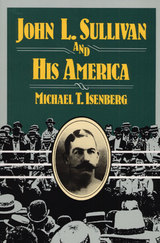 John L. Sullivan and His America
Michael T. Isenberg
University of Illinois Press, 1988 The "Great John L." reigned supreme as world heavyweight champion from his victory over Paddy Ryan in 1882 until James J. Corbett knocked him out in 1892. A drunkard, a wastrel, an adulterer, a wife beater, and a bully, Sullivan still became American's first national sports hero and represented the hopes and aspirations of millions of people. Michael Isenberg traces Sullivan's eventful life from his humble beginnings in Boston to the height of his immense popularity. The boxer moved as easily in the world of reputable workingmen as he did in the shadowlands on the margins of the sport while his success played a major role in transforming boxing into a profitable and ultimately legitimate business. Tapping previously unexplored archival material--including the notorious National Police Gazette and the other sporting papers of the day--Isenberg tells us why presidents, princes, and turn-of-the-century Americans accepted Sullivan as a hero, even as others vilified him for his drunken and belligerent behavior.
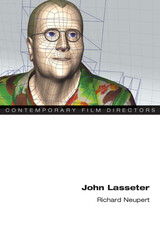 John Lasseter
Richard Neupert
University of Illinois Press, 2016 Celebrated as Pixar's "Chief Creative Officer," John Lasseter is a revolutionary figure in animation history and one of today's most important filmmakers. Lasseter films from Luxo Jr. to Toy Story and Cars 2 highlighted his gift for creating emotionally engaging characters. At the same time, they helped launch computer animation as a viable commercial medium and serve as blueprints for the genre's still-expanding commercial and artistic development. Richard Neupert explores Lasseter's signature aesthetic and storytelling strategies and details how he became the architect of Pixar's studio style. Neupert contends that Lasseter's accomplishments emerged from a unique blend of technical skill and artistic vision, as well as a passion for working with collaborators. In addition, Neupert traces the director's career arc from the time Lasseter joined Pixar in 1984. As Neupert shows, Lasseter's ability to keep a foot in both animation and CGI allowed him to thrive in an unconventional corporate culture that valued creative interaction between colleagues. The ideas that emerged built an animation studio that updated and refined classical Hollywood storytelling practices--and changed commercial animation forever.
John le Carré’s Post–Cold War Fiction
Robert Lance Snyder
University of Missouri Press, 2017 This is an analysis of the first 10 post—Cold War novels of one of the most significant ethicists in contemporary fiction.
This book challenges distinctions between “popular” and “serious” literature by recognizing le Carré as one of the most significant ethicists in contemporary fiction, contributing to an overdue reassessment of his literary stature. Le Carré’s ten post–Cold War novels constitute a distinctive subset of his espionage fiction in their response to the momentous changes in geopolitics that began in the 1990s. Through a close reading of these novels, Snyder traces how—amid the “War on Terror” and transnationalism—le Carré weighs what is at stake in this conflict of deeply invested ideologies.
John Ledyard's Journey through Russia and Siberia, 1787–1788: The Journal and Selected Letters
Stephen D. Watrous
University of Wisconsin Press, 1966 Stephen D. Watrous provides a complete volume of pertinent information by and about John Ledyard, one of the most amazing explorers of all time. Including Ledyard’s own journal, letters between him and others, particularly Thomas Jefferson, and biographical information on eighteenth-century Siberia, Watrous offers an exceptional look at history, geography, and travel.
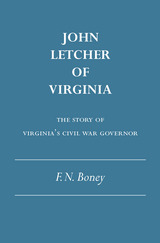 John Letcher of Virginia: The Story of Virginia's Civil War Governor
Francis N. Boney
University of Alabama Press, 1967 Covers the life of John Letcher a virtually unknown significant leader of the Confederacy
John Letcher, governor of Virginia from 1860 through 1863, is one of the significant leaders of the Confederacy who is still virtually unknown. This study, covering Letcher’s entire life with emphasis on his governorship, attempts to fill an obvious gap in American history. For the first time, Letcher’s lengthy career is examined in detail: early development as a local Virginia politician during the Jacksonian era, maturity as an influential congressman in the rising sectionalism of the 1850s, the crucial governorship, and finally a gradual fading away in the postwar period.
Letcher’s story is only a fragment of the epic of the transformation of the United States from a weak, uncertain confederation into a powerful, confident nation. The emergence of the colossus of the New World is a spectacular and critical event in world history, full of grandeur and suffering, idealism and disillusionment. To trace the course of Letcher's life is to follow one small current in a torrential flood-but a significant one, for Letcher was not only a leader but also in many ways a typical American of his time.
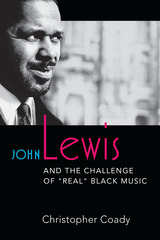 John Lewis and the Challenge of "Real" Black Music
Christopher Coady
University of Michigan Press, 2016 For critics and listeners, the reception of the 1950s jazz-classical hybrid Third Stream music has long been fraught. In John Lewis and the Challenge of “Real” Black Music, Christopher Coady explores the work of one of the form’s most vital practitioners, following Lewis from his role as an arranger for Miles Davis’s Birth of the Cool sessions to his leadership of the Modern Jazz Quartet, his tours of Europe, and his stewardship of the Lenox School of Jazz.
Along the way Coady shows how Lewis’s fusion works helped shore up a failing jazz industry in the wake of the 1940s big band decline, forging a new sound grounded in middle-class African American musical traditions. By taking into account the sociocultural milieu of the 1950s, Coady provides a wider context for understanding the music Lewis wrote for the Modern Jazz Quartet and sets up new ways of thinking about Cool Jazz and Third Stream music more broadly.
John Locke: Economist and Social Scientist
Karen Iversen Vaughn
University of Chicago Press, 1980 In John Locke: Economist and Social Scientist Karen Iversen Vaughn presents a comprehensive treatment of Locke's important position in the development of eighteenth century economic thought.
John Locke's Liberalism
Ruth W. Grant
University of Chicago Press, 1987 In this work, Ruth W. Grant presents a new approach to John Locke's familiar works. Taking the unusual step of relating Locke's Two Treatises to his Essay Concerning Human Understanding, Grant establishes the unity and coherence of Locke's political arguments. She analyzes the Two Treatises as a systematic demonstration of liberal principles of right and power and grounds it in the epistemology set forth in the Essay.
John Logie Baird: Television pioneer
Russell W. Burns
The Institution of Engineering and Technology, 2000 Professor Russell Burns attempts to offer a balanced biography of one of the twentieth century's outstanding inventors, published to coincide with the 75th anniversary of Baird's first public demonstration of a rudimentary television system. The author's meticulous treatment is based on primary source documents although many personal recollections are included to add humour, colour and context. A great deal of material regarding Baird's business partnerships in the early 1920s has only recently become available to researchers and is covered here for the first time.
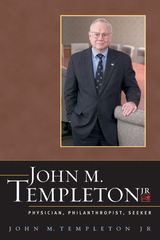 John M. Templeton Jr.: Physician, Philanthropist, Seeker
John M. Templeton
Templeton Press, 2008 Candidly, with a mixture of joy, poignancy, and gratitude, the chairman and president of the John Templeton Foundation reflects on the learning and growing he has experienced and the perspectives he has gained throughout his life. In so doing, he continues the legacy of his father, Sir John Templeton, who has used stories from his life to provide instruction for his children, grandchildren, and other future descendants, just as he has drawn on those stories in his many books of inspiration and guidance for the general public. Dr. Templeton shares stories about his personal life, his career in medicine, his early involvement with philanthropy, and his commitment to the John Templeton Foundation and its mission. Events and circumstances in his youth opened him to spirituality, taught him about altruistic love, and introduced him to values he would cultivate throughout his life: thrift, saving, hard work, creativity, and responsibility. His journey takes him from his early life in Winchester, Tennessee, to New Jersey, Yale University, medical school, the Navy, the Children's Hospital of Philadelphia, and the John Templeton Foundation. Along the way, there were lessons learned from his disruptive behavior in elementary school; the deaths of his grandmother and mother; travel to Europe, Africa, and throughout the U.S.; marriage and fatherhood; his growing commitment as a Christian; and his family's experience with an armed robbery. It continues with his experiences in pediatric surgery at the Children's Hospital of Philadelphia, including work with conjoined twins; experience with the mutual fund industry and a role with the Templeton Growth Fund; an intensely rewarding medical specialty in trauma; philanthropy and fund-raising efforts, including a sad experience with fraud; the pride of professorship; and serving as chairman and president of the John Templeton Foundation. With gratitude he credits his many mentors for the wisdom they passed on to him. Among them are John Galbraith, Dr. C. Everett Koop, Dr. Albert Schweitzer, and, of course, always and above all, his father. With appreciation, he recounts the blessings of a full and productive life that continue today as he provides leadership to the diverse programs and initiatives of the John Templeton Foundation.
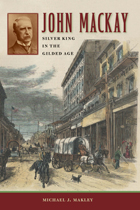 John Mackay: Silver King in the Gilded Age
Michael J. Makley
University of Nevada Press, 2015 From the early 1870s until his death in 1902, John Mackay was among the richest men in the world and was without a doubt the wealthiest man to emerge from Nevada’s fabulous Comstock Lode. Author Michael J. Makley explores how, from his beginnings as a poor Irish immigrant, John Mackay developed a strong work ethic that distinguished him for the rest of his life. He came west to seek his fortune in the California Gold Rush and then moved on to Virginia City, Nevada, where he dealt in mining stocks and operated silver mines. After making a fortune in mining, he transferred his energies to banking and communications.
John Mackay offers new insight into the life and achievements of this remarkable man. It also places Mackay in the broader context of his time, an era of robber barons and rampant corruption, rapidly advancing technology, national and international capitalism, and flagrant displays of newfound wealth. Even in this context, he stood out, not only for his contributions to Nevada and mining history, but also for his reputation as an important business leader fighting the consolidation and venality of corporate power in the Gilded Age. His actions freed the Comstock from a financial monopoly, resulting in moderated rates for the milling, timber, shipping, transportation, and water that made mining possible and precipitated the discovery and development of the ore field known as the “Big Bonanza.”
Makley’s book recounts the life and career of one of the most successful men of his age, a capitalist of immense wealth who generously helped those around him and worked diligently in the public interest. This engaging biography will appeal to readers interested in the Comstock Lode and mining in the West during the latter part of the nineteenth century as well as general western history enthusiasts.
John Maclean: Hero of Red Clydeside
Henry Bell
Pluto Press, 2018 “I am not here, then, as the accused; I am here as the accuser of capitalism dripping with blood from head to foot.”—John Maclean, Speech from the Dock, 1918
Feared by the government, adored by workers, celebrated by Lenin and Trotsky. The head of British Military Intelligence called John Maclean (1879–1923) “the most dangerous man in Britain.”
This new biography explores the events that shaped the life of a momentous man—from the Great War and the Great Unrest to the Rent Strike and the Russian Revolution. It examines his work as an organizer and educator, his imprisonment and hunger strike, and his rise to the position of Britain’s most famous revolutionary. At a moment when radical politics is drawing renewed attention and support, Maclean’s example of activism and commitment is as timely as ever.
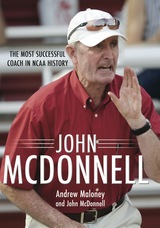 John McDonnell: The Most Successful Coach in NCAA History
Andrew Maloney
University of Arkansas Press, 2013 When John McDonnell began his coaching career at the University of Arkansas at Fayetteville--choosing it over Norman, Oklahoma, because Fayetteville reminded him of his native Ireland--he could hardly have imagined that he would become the most successful coach in the history of American collegiate athletics. But, in thirty-six years at the university, he amassed a staggering résumé of accomplishments, including forty national championships (eleven cross country, nineteen indoor track, and ten outdoor track), the most by any coach in any sport in NCAA history. His teams at Arkansas won the triple crown (a championship in cross country, indoor track, and outdoor track in a single school year) a record five times. The Razorbacks also won eighty-three conference championships (thirty-eight in the Southwest Conference and forty-six in the Southeastern Conference), including thirty-four consecutive conference championships in cross country from 1974 to 2008. McDonnell coached 185 All-Americans, fifty-four individual national champions, and twenty-three Olympians. And from 1984 to 1995, his Razorback teams won twelve consecutive NCAA Indoor Track Championships, the longest streak of national titles by any school in any sport in NCAA history. This biography tells the story of the McDonnell's life and legacy, from his childhood growing up on a farm in 1940s County Mayo, Ireland, to his own running career, to the beginnings of his life as a coach, to all the great athletes he mentored along the way.
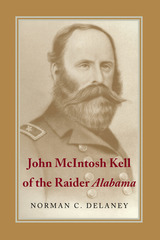 John McIntosh Kell of the Raider Alabama
Norman C. Delaney
University of Alabama Press, 2003 A vivid portrait of the man credited as a driving force behind the most successful of the Confederate raiders, the legendary C.S.S. Alabama.
John McIntosh Kell was an experienced, proven military man, a graduate of Annapolis, a veteran of the Mexican War and of Admiral Perry’s voyage to Japan. As a Confederate officer, Kell served first on the raider Sumter and then on the Alabama. At sea for only 22 months, the Alabama engaged nearly 300 northern merchant vessels, burning 55 of these transport ships along with their million-dollar cargoes.
Though First Lieutenant ("Luff") Kell was apparently content to let his captain, Raphael Semmes, take credit for their accomplishments, Semmes acknowledged that his successes were due largely to the energy and resourcefulness of his second in command. Life on the commerce cruisers was hard and tedious, and much of the responsibility for running the day-to-day operations, including the disciplining of a largely mercenary crew, rested on Kell, whose sense of duty and loyalty did not waver.
Norman C. Delaney bases his account of this remarkable naval officer’s experiences on the interviews Kell granted to news reporters during the 1880s and 1890s (previously neglected by historians) and his memoirs, published in 1900 as Recollections of a Naval Life. He supplements these materials with records from Kell’s earlier years, including letters, journals, diaries, and contemporary observations. First published in 1973 by The University of Alabama Press, this new edition of an award-winning biography will be welcomed by Civil War historians and enthusiasts around the world, naval institutions and museums, and general readers alike.
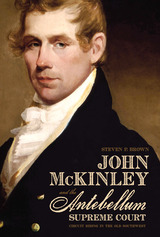 John McKinley and the Antebellum Supreme Court: Circuit Riding in the Old Southwest
Steven P. Brown
University of Alabama Press, 2012 A Southern voice on a national bench—McKinley’s legacy in antebellum law. John McKinley and the Antebellum Supreme Court offers the first comprehensive biography of Justice John McKinley (1780–1852), a largely forgotten figure in American legal history who played a pivotal role during a formative period of the U.S. Supreme Court. Steven P. Brown rescues McKinley from historical obscurity, presenting a compelling portrait of a man deeply embedded in the political, legal, and financial life of the early 19th-century South. Born in Kentucky and later settling in northern Alabama, McKinley served in both the U.S. Senate and House of Representatives before being appointed to the Supreme Court by President Martin Van Buren in 1837. His tenure on the bench coincided with the creation of the Ninth Circuit, a vast and challenging judicial territory encompassing Alabama, Arkansas, Louisiana, and Mississippi. Brown details McKinley’s arduous circuit-riding duties, which required extensive travel and exposed him to the legal complexities of a rapidly expanding frontier. More than a biography, the book provides a penetrating analysis of antebellum legal culture, Alabama state politics, and the internal workings of the Supreme Court during a time of national transformation. Brown challenges the prevailing view of McKinley as a mediocre jurist, arguing instead that his contributions—particularly his dissents defending states’ rights—deserve renewed scholarly attention. With rich historical context and meticulous research, John McKinley and the Antebellum Supreme Court sheds light on the burdens of justice in a divided nation and the legacy of a justice whose career mirrored the tensions of his time.
John McMillan: The Apostle of Presbyterianism in the West, 1752-1833
Dwight Ray Guthrie
University of Pittsburgh Press, 1952 The first comprehensive biography of John McMillan, who “blew the Gospel trumpet”, and spread Presbyterianism west of the Alleghenies. McMillan was a missionary, minister, politician, patriarch, and a founder of Washington and Jefferson College. The book also offers a colorful hstory of the Scotch-Irish pioneers who tamed a rugged and hostile region of early America.
 John Mercer Langston and the Fight for Black Freedom, 1829-65
William and Aimee Lee Cheek
University of Illinois Press, 1989 A biography of the pioneering Black leader Privileged beyond other members of his race, yet sharing their disadvantages, the young John Mercer Langston stood in an uncertain position in the years before the Civil War. His confrontation with a critical personal question was tempered by a crucial national reality: from what sources could he derive his model of manhood and human dignity? This book explores John Mercer Langston's decisions to work out his destiny through the resources and fortunes of the northern black community. Although Langston, who died in 1897, was a black Politician, orator, lawyer, intellectual, diplomat, and congressman, he has never before been accorded fullscale biographical treatment. Born free on a Virginia plantation, Langston graduated from Oberlin College in 1849, gained admission to the Ohio bar, and by the age of twenty-five, became the first black American to hold elective office. Still in the years of his political apprenticeship, he promoted black civil rights, helped shape the nascent Republican party, aided in the Oberlin-Wellington Rescue and John Brown's raid, and recruited black soldier for the Union cause. In 1864 he became the first president of the National Equal Rights League. From an extensive search of primary sources, the authors construct a richly textured picture of the beginnings of Langston's career as a national black leader. More than a biography, the work also incorporates social and political history. Embedded firmly in a study of northern black community life and activism, it reveals the degree to which Langston and his cohorts set the terms of the fight for freedom and citizenship.
John Miles Foley's World of Oralities: Text, Tradition, and Contemporary Oral Theory
Mark C. Amodio
Arc Humanities Press, 2020 This collection brings together newly commissioned and cutting-edge essays on oral text and tradition ranging from the ancient and medieval world to the present day by a leading group of European and North American oral theorists. Using a range of materials including the Bible, Greek epic, Beowulf, Old Norse and Old English riddles, and medieval music, the contributors collectively work to refine, challenge, and further advance contemporary Oral Theory, an interdisciplinary school of thought heavily influenced by John Miles Foley, whose work provides the jumping-off point for this volume. The book includes a useful introduction to the history of oral theory and Foley’s ground-breaking and influential work.
John Muir Sierra
Robert E. Engberg
University of Wisconsin Press, 1984 "This is a collection of articles written by the pioneering naturalist for the San Francisco Evening Bulletin in 1874 and 1875. . . . In the course of his wanderings we hear Muir grow from a student of the wilderness to its professor and protector."—Sierra Magazine
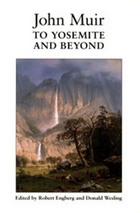 John Muir To Yosemite And Beyond
Robert Engberg
University of Utah Press, 1999 When John Muir died in 1914, the pre-eminent American naturalist, explorer, and conservationist had not yet written the second volume of his autobiography, in which he planned to cover his Yosemite years. Editors Robert Engberg and Donald Wesling have here provided a remedy. Their account begins in 1863, the year Muir left the University of Wisconsin for what he termed the "University of the Wilderness." Following an accident in 1867 that nearly left him blind, he vowed to turn from machines and continue to study nature. That led, in 1868, to his first visit to Yosemite Valley, where he began his glacier studies. Muir spent much time exploring the Yosemite region, Tuolumne, and both the southern and northern Sierras, publishing articles, and keeping extensive journals through 1875, when he began to write for the San Francisco Bulletin and expanded his travels to areas throughout the west. Mining a rich vein of sources—Muir’s letters, journals, articles, and unpublished manuscripts, as well as selections drawn from biographical pieces written about Muir by people who met him in Yosemite in the early 1870s—Engberg and Wesling have assembled what they term a "composite autobiography," providing brief interpretive and transitional passages throughout the book. This work is especially valuable because it documents Muir’s formative years, when he is maturing away from "conventional cultural paradigms of work and materialism toward new ways of thinking about nature and its impact on human development."
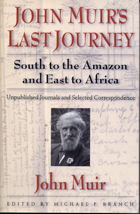 John Muir's Last Journey: South To The Amazon And East To Africa: Unpublished Journals And Selected Correspondence
John Muir; Edited by Michael P. Branch
Island Press, 2001 "I am now writing up some notes, but when they will be ready for publication I do not know... It will be a long time before anything is arranged in book form." These words of John Muir, written in June 1912 to a friend, proved prophetic. The journals and notes to which the great naturalist and environmental figure was referring have languished, unpublished and virtually untouched, for nearly a century. Until now. Here edited and published for the first time, John Muir's travel journals from 1911-12, along with his associated correspondence, finally allow us to read in his own words the remarkable story of John Muir's last great journey.
Leaving from Brooklyn, New York, in August 1911, John Muir, at the age of seventy-three and traveling alone, embarked on an eight-month, 40,000-mile voyage to South America and Africa. The 1911-12 journals and correspondence reproduced in this volume allow us to travel with him up the great Amazon, into the jungles of southern Brazil, to snowline in the Andes, through southern and central Africa to the headwaters of the Nile, and across six oceans and seas in order to reach the rare forests he had so long wished to study. Although this epic journey has received almost no attention from the many commentators on Muir's work, Muir himself considered it among the most important of his life and the fulfillment of a decades-long dream.
John Muir's Last Journey provides a rare glimpse of a Muir whose interests as a naturalist, traveler, and conservationist extended well beyond the mountains of California. It also helps us to see John Muir as a different kind of hero, one whose endurance and intellectual curiosity carried him into far fields of adventure even as he aged, and as a private person and family man with genuine affections, ambitions, and fears, not just an iconic representative of American wilderness.
With an introduction that sets Muir's trip in the context of his life and work, along with chapter introductions and a wealth of explanatory notes, the book adds important dimensions to our appreciation of one of America's greatest environmentalists. John Muir's Last Journey is a must reading for students and scholars of environmental history, American literature, natural history, and related fields, as well as for naturalists and armchair travelers everywhere.
John Nelligan: Wisconsin Lumberjack
John Zimm
Wisconsin Historical Society Press, 2015 Experience the adventures and tough life of a lumberjack in this newest addition to the Badger Biographies Series. Author John Zimm leads young readers on a journey through the lumbering heyday of Wisconsin’s North Woods as witnessed by lumberman John Nelligan, whose writings were the basis for John Nelligan: Wisconsin Lumberjack.
Born in 1852, Nelligan rose through the lumberjack ranks, starting out as a humble laborer and working his way up to foreman. He worked and lived in Maine, Pennsylvania, and even Canada before coming to Wisconsin in 1871. Learn what surviving and sawing wood for a living was like many years ago—from the story of one Wisconsin man who lived it!
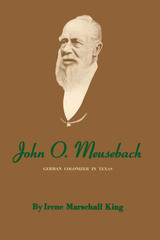 John O. Meusebach: German Colonizer in Texas
By Irene Marschall King
University of Texas Press, 1967 Otfried Hans Freiherr von Meusebach chose a life of hardship and freedom in Texas rather than a life of comfort and influence in his native Germany, where he had lived his formative years within a framework of unconstitutional government. In 1845 the young liberal relinquished his hereditary German title, left behind his close family ties and his various intellectual and political associations, and arrived in Texas as John O. Meusebach, commissioner-general for the Society for the Protection of German Immigrants. His background enabled him to assume an enlightened leadership of fellow immigrants who were pouring in from Germany. Lacking adequate financial backing, he nevertheless led the settling of some five thousand people in a land that was largely occupied by Indians. Irene Marschall King presents the full sweep of Meusebach's vigorous life: Meusebach as the young liberal in Germany, as the colonizer in the 1840s, as a Texas senator and, later, an observer of the Civil War, and as a Texan who devoted his later years to bringing the Texas soil to fruition—all set against a background of the immigration movement and frontier life. "Freedom is not free; it is costly," Meusebach believed. In Texas he found for himself and others freedom worth the price he paid. Rich in historic detail, King's story recounts the founding of Fredericksburg, the crippling effect of the Mexican War upon the mass of immigrants huddled in illness on the coast, the signing of the Indian Treaty, which opened to settlement over three million acres of land, and the final collapse of the Society for the Protection of German Immigrants. Also depicted is the colonists' influence on the land—the gardens and orchards of south central Texas, the "Easter Fires" that blaze on the hills surrounding Fredericksburg, the mixture of German custom with American necessity that created a unique culture. Throughout the narrative Mrs. King presents a fascinating cast of characters: the noble Prince Solms, who tries to establish a German military outpost in Texas; Henry Fisher, who attempts by devious methods to control the colonists and their land and finally incites a mob which tries to hang Meusebach; Philip Cappes, a special commissioner and Meusebach's assistant, who plots through intriguing correspondence with Count Castell, the executive secretary in Germany, to overthrow Meusebach; and the colorful and courageous Indian fighter and Texas Ranger, Colonel Jack Hays. Primarily, however, this is the story of a man who found strength in his family's motto, "Perseverance in Purpose," and gave of his energies to build Texas.
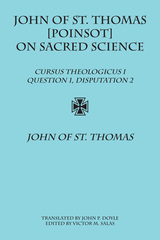 John of St. Thomas [Poinsot] on Sacred Science: Cursus Theologicus I, Question 1, Disputation 2
John Of St. Thomas
St. Augustine's Press, 2012 This volume offers an English translation of John of St. Thomas’s Cursus theologicus I, question I, disputation 2. In this particular text, the Dominican master raises questions concerning the scientific status and nature of theology. At issue, here, are a number of factors: namely, Christianity’s continual coming to terms with the “Third Entry” of Aristotelian thought into Western Christian intellectual culture – specifically the Aristotelian notion of ‘science’ and sacra doctrina’s satisfaction of those requirements – the Thomistic-commentary tradition, and the larger backdrop of the Iberian Peninsula’s flourishing “Second Scholasticism.”
In this latter context, John of St. Thomas applies the theological principles of Thomas Aquinas to the Scholastic disputes preoccupying Thomist, Franciscan, and Jesuit theologians, such as Cajetan, Bañez, Luis de Molina, Vazquez, Suárez – to name only a few – in a tour de force of theological thinking throughout the entire period of Scholasticism. In the process – and not insignificantly – the status quaestionis of theology’s scientific character is clearly framed and answered according to John’s satisfaction.
Key to John of St. Thomas’s resolution of the question is his understanding of the continuity of the power of human reason with the super-intelligibility of divine revelation spelled out in terms of what he calls “virtual revelation.” This text presented in this volume is a quintessential example of the deep and abiding harmony that flourished between faith and reason as well as grace and nature within the golden era of Baroque Scholasticism.
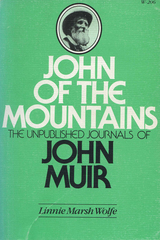 John of the Mountains: The Unpublished Journals of John Muir
Edited by Linnie Marsh Wolfe
University of Wisconsin Press, 1979 John Muir, America’s pioneer conservationist and father of the national park system, was a man of considerable literary talent. As he explored the wilderness of the western part of the United States for decades, he carried notebooks with him, narrating his wanderings, describing what he saw, and recording his scientific researches. This reprint of his journals, edited by Linnie Marsh Wolfe in 1938 and long out of print, offers an intimate picture of Muir and his activities during a long and productive period of his life.
The sixty extant journals and numerous notes in this volume were written from 1867 to 1911. They start seven years after the time covered in The Story of My Boyhood and Youth, Muir’s uncompleted autobiography. The earlier journals capture the essence of the Sierra Nevada and Alaska landscapes. The changing appearance of the Sierras from Sequoia north and beyond the Yosemites enthralled Muir, and the first four years of the journals reveal his dominating concern with glacial action. The later notebooks reflect his changes over the years, showing a mellowing of spirit and a deep concern for human rights.
Like all his writings, the journals concentrate on his observations in the wilderness. His devotion to his family, his many warm friendships, and his many-sided public life are hardly mentioned. Very little is said about the quarter-century battle for national parks and forest reserves. The notebooks record, in language fuller and freer than his more formal writings, the depth of his love and transcendental feeling for the wilderness. The rich heritage of his native Scotland and the unconscious music of the poetry of Burns, Milton, and the King James Bible permeate the language of his poetic fancy.
In his later life, Muir attempted to sort out these journals and, at the request of friends, published a few extracts. A year after his death in 1914, his literary executor and biographer, William Frederick Badè, also published episodes from the journals. Linnie Marsh Wolfe set out to salvage the best of his writings still left unpublished in 1938 and has thus added to our understanding of the life and thought of a complex and fascinating American figure.
 John Paul II and the Legacy of Dignitatis Humanae
Hermínio Rico, SJ
Georgetown University Press, 2002 It was by far the most controversial document to emerge from Vatican II — Dignitatis Humanae, or the Declaration on Religious Freedom. Drafted largely by prominent Jesuit theologian John Courtney Murray, it represented a departure from previous Catholic teachings in that it acknowledged and accepted as normative the separation between Church and State and declared religious freedom a fundamental human right. In doing this, it set forth guidelines for the role of the Catholic Church in secular liberal and pluralistic societies. Nearly four decades later, Hermínio Rico examines the continued relevance of this declaration in today's world, compares its most paradigmatic interpretations, and proposes a reconsideration of its import for contemporary church-society relationships. He offers a detailed analysis of how Pope John Paul II has appropriated, interpreted, and developed the main themes of the document, and how he has applied them to such contentious modern issues as the fall of Communism and the rise of secular pluralism. In addition, Rico sets forth his own vision of the future of Dignitatis Humanae, and how the profound themes of the declaration can be applied in years to come to help the church find a way to engage effectively with, and within, pluralistic societies. Of interest to students of Catholic thought, church-society relationships, the legacy of John Courtney Murray, and the teachings of John Paul II, this book offers a fresh perspective on one of the most important documents in the modern history of the Catholic church.
John Paul II on the Vulnerable
Jeffrey Tranzillo
Catholic University of America Press, 2013 In John Paul II on the Vulnerable, Jeffrey Tranzillo provides a lucid introduction to John Paul II's philosophical and theological understanding of the human person.
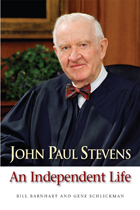 John Paul Stevens: An Independent Life
Bill Barnhart and Gene Schlickman
Northern Illinois University Press, 2010
During Justice Sonya Sotomayor’s recent confirmation hearings, the idea of “biography” played a high-profile role in the debate. How much does a person’s experience affect his or her judicial opinions? Should personal history be a key consideration when determining qualifications to sit on the highest court in the land? In this impeccably researched book, journalist Bill Barnhart and retired lawyer and former legislator Gene Schlickman paint a detailed portrait of Justice John Paul Stevens’s remarkable life and tenure on the Court. Through vivid family history and a careful look at his work on the bench, Barnhart and Schlickman offer the first biography of the second longest serving Supreme Court justice of the modern era—one who has proudly earned the title of the Court’s most prolific dissenter.
To provide a nuanced and multifaceted look at the justice, Barnhart and Schlickman interviewed Stevens and an extraordinary number of Stevens’s friends and family members, former clerks, current colleagues, politicians, and court watchers. They spoke with such public figures as former President Ford, former Ford chief of staff Donald Rumsfeld, and Justice Ruth Bader Ginsburg. Interviews with Stevens’s children and one of his brothers provide personal insights into the man behind the robe. Tales of his childhood, of growing up in an affluent family in Chicago’s Hyde Park neighborhood, and of the family business, including The Stevens Hotel (now the Chicago Hilton and Towers), create a rich portrait of the independent man and judge. Intimate anecdotes from Stevens’s former law clerks reveal the lighter side of some of the most serious work in the country.
Barnhart and Schlickman also give careful consideration to Stevens’s career. They trace his early years as a Chicago lawyer, his appointment to the federal appeals bench in Chicago, and his ultimate nomination to the Supreme Court by Republican President Ford. They examine his best-known opinions, including his emotional dissents in Texas v. Johnson and Bush v. Gore. They trace his growth as a molder of Court decisions. In an era of an increasingly politicized judiciary, the story of Stevens’s life, as a lawyer who joined the bench with no political or ideological baggage, is an urgent reminder of the importance of judicial impartiality and the need to cultivate it. This vibrant biography will be of interest to those fascinated by the inner workings of the Supreme Court as well as those who simply want to learn more about one of Chicago’s favorite sons.
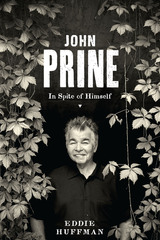 John Prine: In Spite of Himself
By Eddie Huffman
University of Texas Press, 2015 With a range that spans the lyrical, heartfelt songs “Angel from Montgomery,” “Sam Stone,” and “Paradise” to the classic country music parody “You Never Even Called Me by My Name,” John Prine is a songwriter’s songwriter. Across five decades, Prine has created critically acclaimed albums—John Prine (one of Rolling Stone’s 500 Greatest Albums of All Time), Bruised Orange, and The Missing Years—and earned many honors, including two Grammy Awards, a Lifetime Achievement Award for Songwriting from the Americana Music Association, and induction into the Nashville Songwriters Hall of Fame. His songs have been covered by scores of artists, from Johnny Cash and Miranda Lambert to Bette Midler and 10,000 Maniacs, and have influenced everyone from Roger McGuinn to Kacey Musgraves. Hailed in his early years as the “new Dylan,” Prine still counts Bob Dylan among his most enthusiastic fans.
In John Prine, Eddie Huffman traces the long arc of Prine’s musical career, beginning with his early, seemingly effortless successes, which led paradoxically not to stardom but to a rich and varied career writing songs that other people have made famous. He recounts the stories, many of them humorous, behind Prine’s best-known songs and discusses all of Prine’s albums as he explores the brilliant records and the ill-advised side trips, the underappreciated gems and the hard-earned comebacks that led Prine to found his own successful record label, Oh Boy Records. This thorough, entertaining treatment gives John Prine his due as one of the most influential songwriters of his generation.
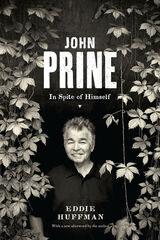 John Prine: In Spite of Himself
Eddie Huffman
University of Texas Press, 2022 With a range that spans the lyrical, heartfelt songs “Angel from Montgomery,” “Sam Stone,” and “Paradise” to the classic country music parody “You Never Even Called Me by My Name,” John Prine is a songwriter’s songwriter. Across five decades, Prine has created critically acclaimed albums—John Prine (one of Rolling Stone’s 500 Greatest Albums of All Time), Bruised Orange, and The Missing Years—and earned many honors, including two Grammy Awards, a Lifetime Achievement Award for Songwriting from the Americana Music Association, and induction into the Nashville Songwriters Hall of Fame. His songs have been covered by scores of artists, from Johnny Cash and Miranda Lambert to Bette Midler and 10,000 Maniacs, and have influenced everyone from Roger McGuinn to Kacey Musgraves. Hailed in his early years as the “new Dylan,” Prine still counts Bob Dylan among his most enthusiastic fans. In John Prine, Eddie Huffman traces the long arc of Prine’s musical career, beginning with his early, seemingly effortless successes, which led paradoxically not to stardom but to a rich and varied career writing songs that other people have made famous. He recounts the stories, many of them humorous, behind Prine’s best-known songs and discusses all of Prine’s albums as he explores the brilliant records and the ill-advised side trips, the underappreciated gems and the hard-earned comebacks that led Prine to found his own successful record label, Oh Boy Records. This thorough, entertaining treatment gives John Prine his due as one of the most influential songwriters of his generation.
John Quincy Adams: A Public Life, a Private Life
Paul C. Nagel
Harvard University Press John Quincy Adams was raised, educated, and groomed to be President, following in the footsteps of his father, John. At fourteen he was secretary to the Minister to Russia and, later, was himself Minister to the Netherlands and Prussia. He was U.S. Senator, Secretary of State, and then President for one ill-fated term. His private life showed a parallel descent. He was a poet, writer, critic, and Professor of Oratory at Harvard. He married a talented and engaging Southerner, but two of his three sons were disappointments. This polymath and troubled man, caught up in both a democratic age not to his understanding and the furies of passion, was an American lion in winter.
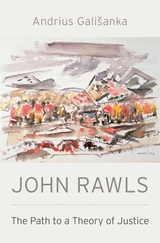 John Rawls: The Path to a Theory of Justice
Andrius Gališanka
Harvard University Press, 2019 An engaging account of the titan of political philosophy and the development of his most important work, A Theory of Justice, coming at a moment when its ideas are sorely needed.
It is hard to overestimate the influence of John Rawls on political philosophy and theory over the last half-century. His books have sold millions of copies worldwide, and he is one of the few philosophers whose work is known in the corridors of power as well as in the halls of academe. Rawls is most famous for the development of his view of “justice as fairness,” articulated most forcefully in his best-known work, A Theory of Justice. In it he develops a liberalism focused on improving the fate of the least advantaged, and attempts to demonstrate that, despite our differences, agreement on basic political institutions is both possible and achievable.
Critics have maintained that Rawls’s view is unrealistic and ultimately undemocratic. In this incisive new intellectual biography, Andrius Gališanka argues that in misunderstanding the origins and development of Rawls’s central argument, previous narratives fail to explain the novelty of his philosophical approach and so misunderstand the political vision he made prevalent. Gališanka draws on newly available archives of Rawls’s unpublished essays and personal papers to clarify the justifications Rawls offered for his assumption of basic moral agreement. Gališanka’s intellectual-historical approach reveals a philosopher struggling toward humbler claims than critics allege.
To engage with Rawls’s search for agreement is particularly valuable at this political juncture. By providing insight into the origins, aims, and arguments of A Theory of Justice, Gališanka’s John Rawls will allow us to consider the philosopher’s most important and influential work with fresh eyes.
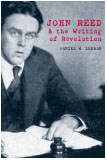 John Reed and the Writing of Revolution
Daniel W. Lehman
Ohio University Press, 2002 John Reed (1887-1920) is best known as the author of Ten Days That Shook the World and as champion of the communist movement in the United States. Still, Reed remains a writer almost systematically ignored by the literary critical establishment, even if alternately vilified and lionized by historians and by films like Warren Beatty’s Reds. John Reed and the Writing of Revolution examines Reed’s writing from a different critical perspective—one informed by a theoretical and practical understanding of literary nonfiction. In both politics and writing, John Reed defied fashion. In his short career, Reed transcended the traditional creative arts of fiction, poetry, and drama in favor of deeply researched histories composed with the cadence of fiction and the power of fact. Reed thereby alienated literary critics who had idealized timeless artistry against the rough-and-tumble world of historical details and political implications. Working from a close investigation of rare articles, manuscripts, and the Reed papers at Harvard as well as from Reed’s published work, Daniel W. Lehman offers the first detailed literary study of the man who followed Pancho Villa into battle; wrote literary profiles of such characters as Henry Ford, William Jennings Bryan, and Billy Sunday; explicated the Byzantine factionalism of Eastern Europe; and witnessed the storming of the Winter Palace and the birth of Soviet Russia.
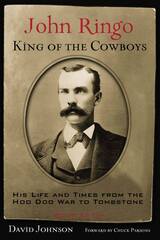 John Ringo, King of the Cowboys: His Life and Times from the Hoo Doo War to Tombstone, Second Edition
David Johnson
University of North Texas Press, 2008 Few names in the lore of western gunmen are as recognizable. Few lives of the most notorious are as little known. Romanticized and made legendary, John Ringo fought and killed for what he believed was right. As a teenager, Ringo was rushed into sudden adulthood when his father was killed tragically in the midst of the family's overland trek to California. As a young man he became embroiled in the blood feud turbulence of post-Reconstruction Texas.
The Mason County “Hoo Doo” War in Texas began as a war over range rights, but it swiftly deteriorated into blood vengeance and spiraled out of control as the body count rose. In this charnel house Ringo gained a reputation as a dangerous gunfighter and man killer. He was proclaimed throughout the state as a daring leader, a desperate man, and a champion of the feud. Following incarceration for his role in the feud, Ringo was elected as a lawman in Mason County, the epicenter of the feud’s origin.
The reputation he earned in Texas, further inflated by his willingness to shoot it out with Victorio’s raiders during a deadly confrontation in New Mexico, preceded him to Tombstone in territorial Arizona. Ringo became immersed in the area’s partisan politics and factionalized violence. A champion of the largely Democratic ranchers, Ringo would become known as a leader of one of these elements, the Cowboys. He ran at bloody, tragic odds with the Earp brothers and Doc Holliday, finally being part of the posse that hounded these fugitives from Arizona. In the end, Ringo died mysteriously in the Arizona desert, his death welcomed by some, mourned by others, wrongly claimed by a few. Initially published in 1996, John Ringo has been updated to a second edition with much new information researched and uncovered by David Johnson and other Ringo researchers.
John Ringo: The Gunfighter Who Never Was
Jack Burrows
University of Arizona Press, 1987 He was the deadliest gun in the West. Or was he? Ringo: the very name has come to represent the archetypal Western gunfighter and has spawned any number of fictitious characters laying claim to authenticity. John Ringo's place in western lore is not without basis: he rode with outlaw gangs for thirteen of his thirty-two years, participated in Texas's Hoodoo War, and was part of the faction that opposed the Earp brothers in Tombstone, Arizona. Yet his life remains as mysterious as his grave, a bouldered cairn under a five-stemmed blackjack oak. Western historian Jack Burrows now challenges popular views of Ringo in this first full-length treatment of the myth and the man. Based on twenty years of research into historical archives and interviews with Ringo's family, it cuts through the misconceptions and legends to show just what kind of man Ringo really was.
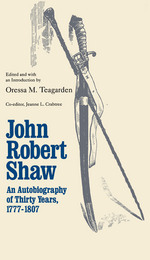 John Robert Shaw: An Autobiography of Thirty Years, 1777–1807
Oressa M. Teagarden
Ohio University Press, 1992 In the summer of 1807 more than a thousand subscribers from New England to Tennessee paid for the initial printing of The Life and Travels of John Robert Shaw: A Narrative of the Life and Travels of the Well-Digger, now resident of Lexington, Kentucky, Written by Himself. Shaw had come to Rhode Island as a British redcoat to put down the colonial rebellion. Through various quirks of fate, including being taken a prisoner of war, he ended up fighting with the Americans. Shaw was an exuberant spirit whose rowdy drinking bouts and related predicaments alternated with periods of wholehearted efforts at reform. His autobiography, written while he recuperated from injuries from one of several explosions (an occupational hazard for the frontier well-digger), is an articulate and entertaining record of the Revolutionary War era. A 1930 printing of Shaw’s autobiography was rescued from the trash by an alert librarian in Kentucky in 1950. She passed the tattered copy on to journalist Oressa M. Teagarden, who became intrigued with Shaw’s story and spent much of her free time over the next two decades finding out more about the ebullient American. On Teagarden’s death, co-editor Jeanne Crabtree assumed the task of making Shaw’s authentic and colorful view of early America available to a new generation of readers.
|
|
